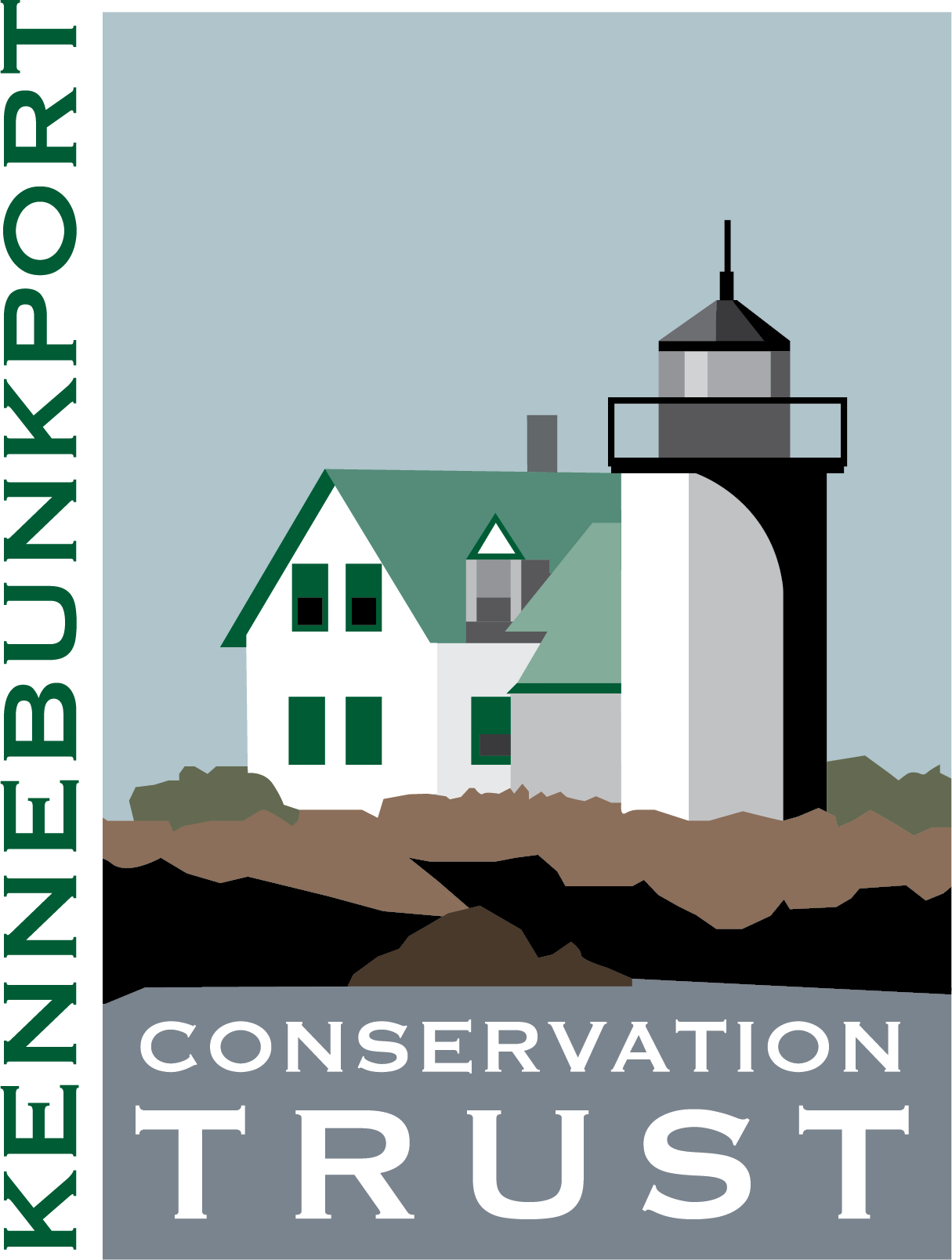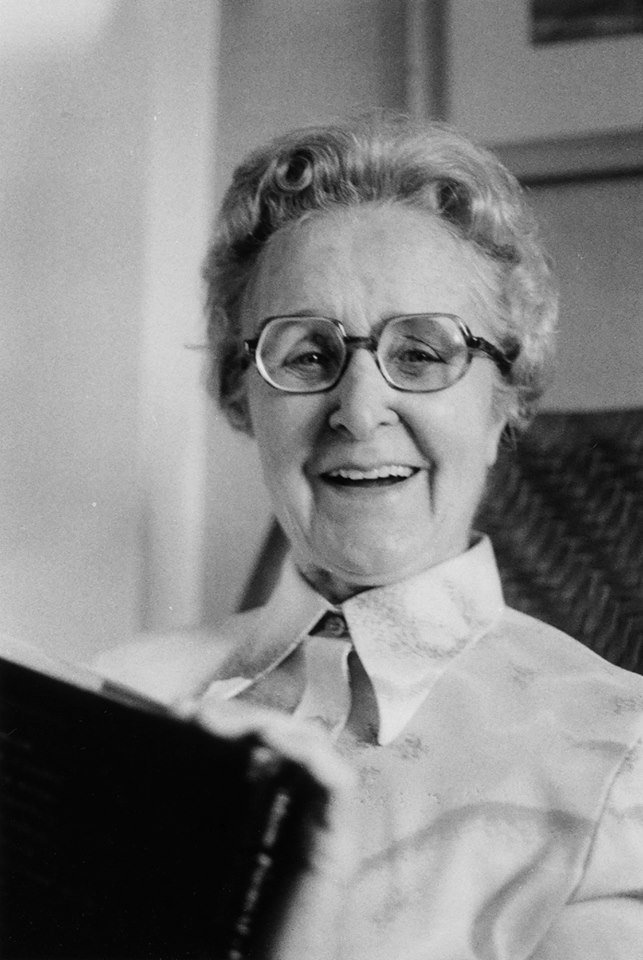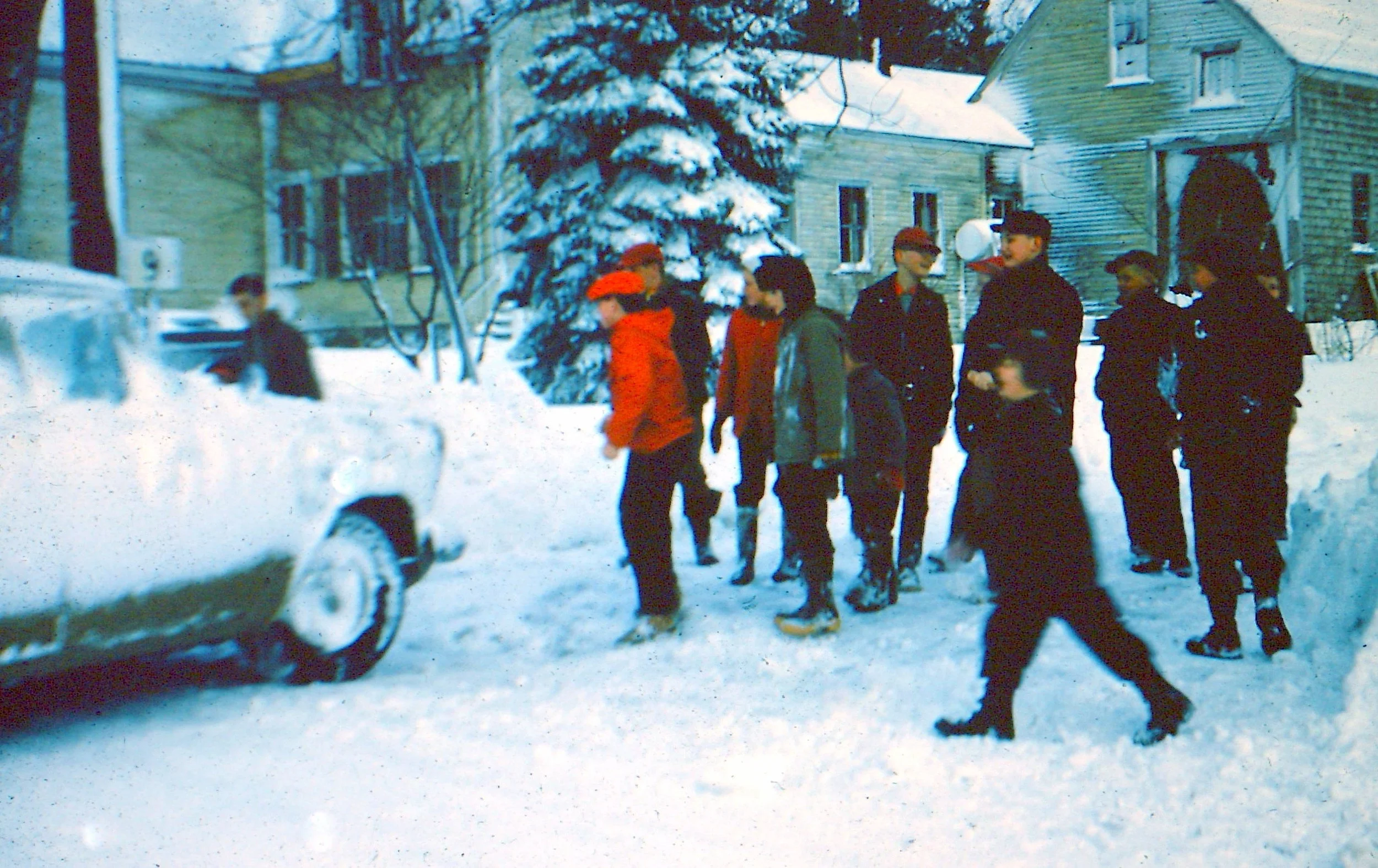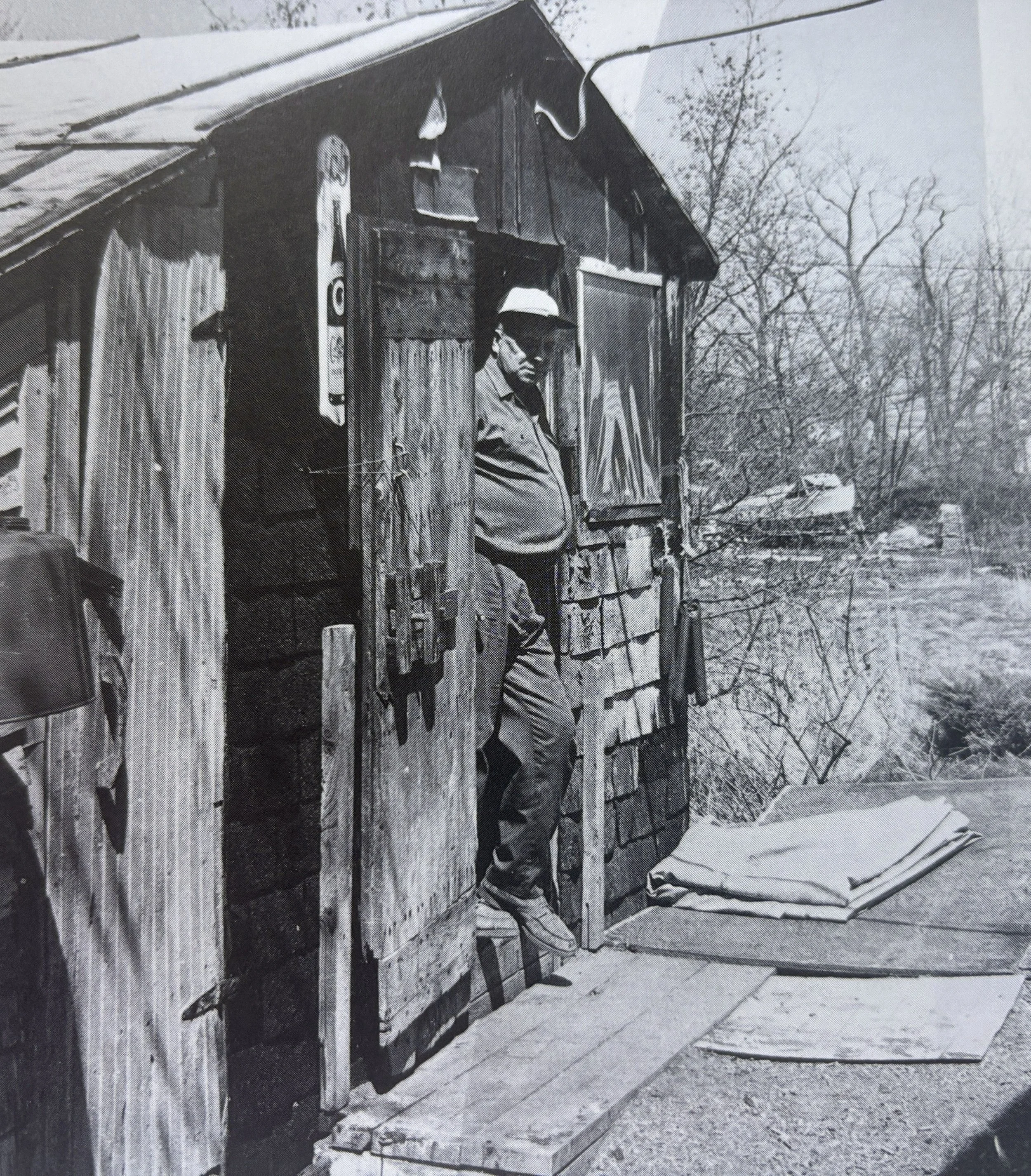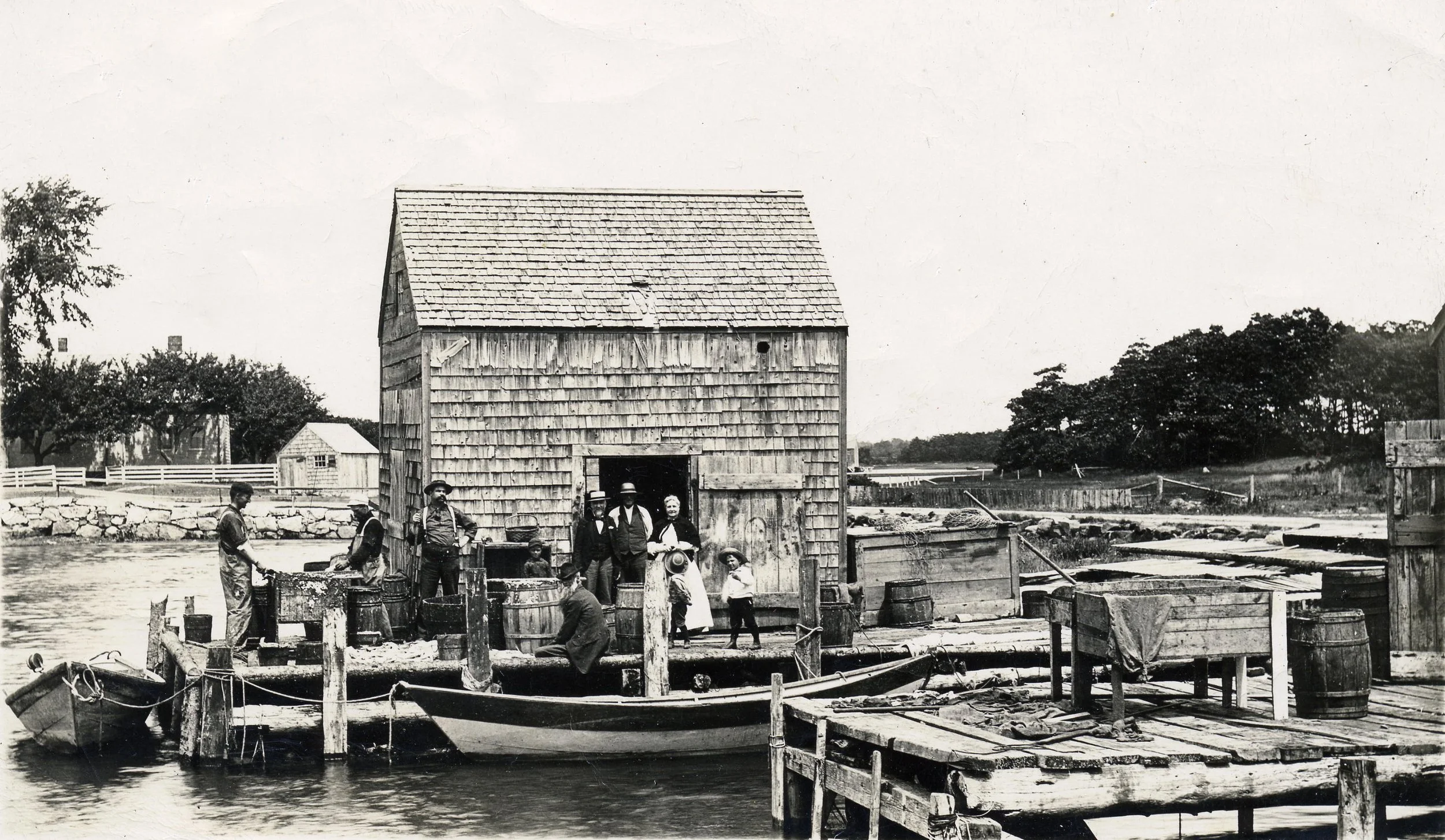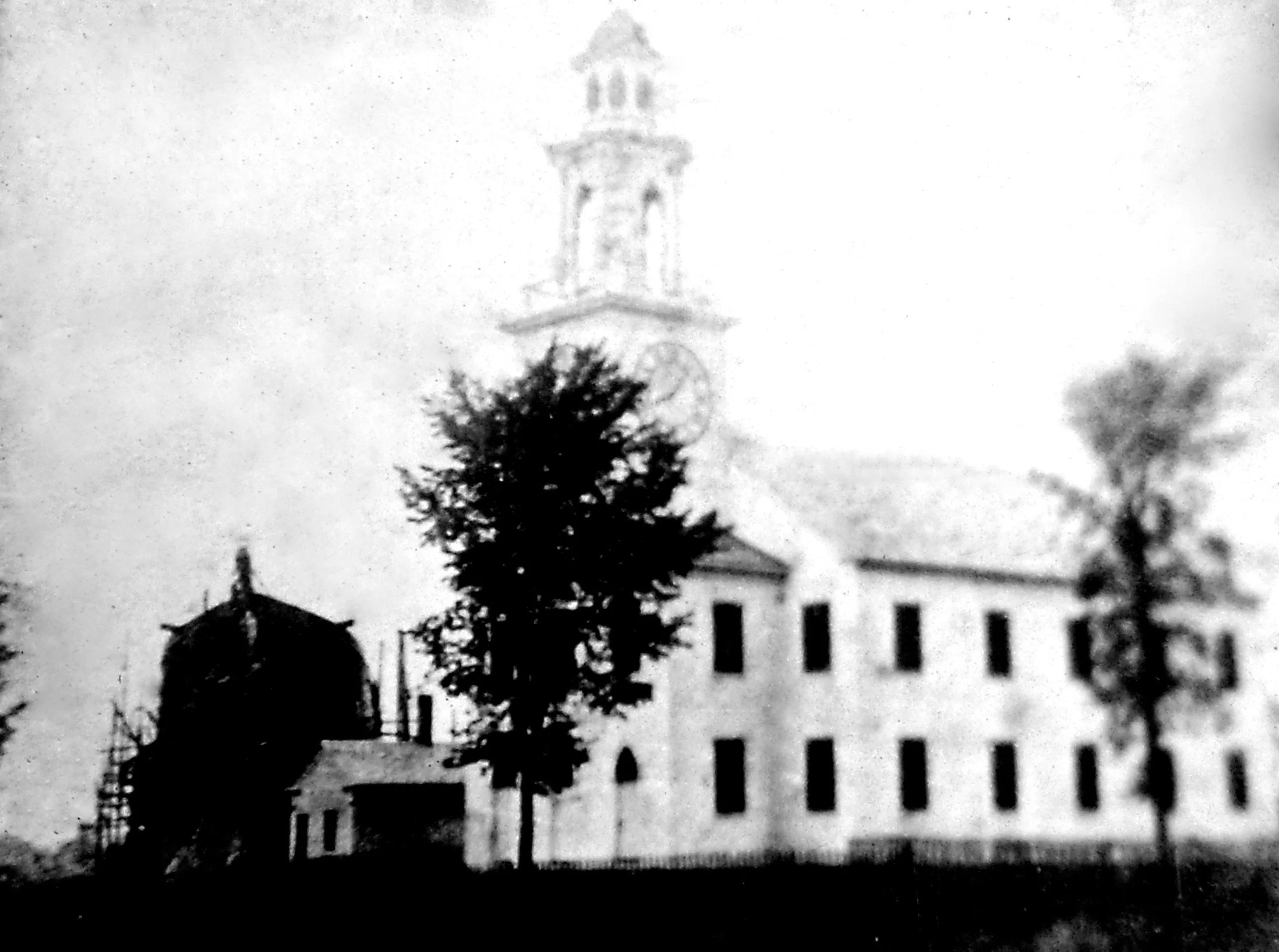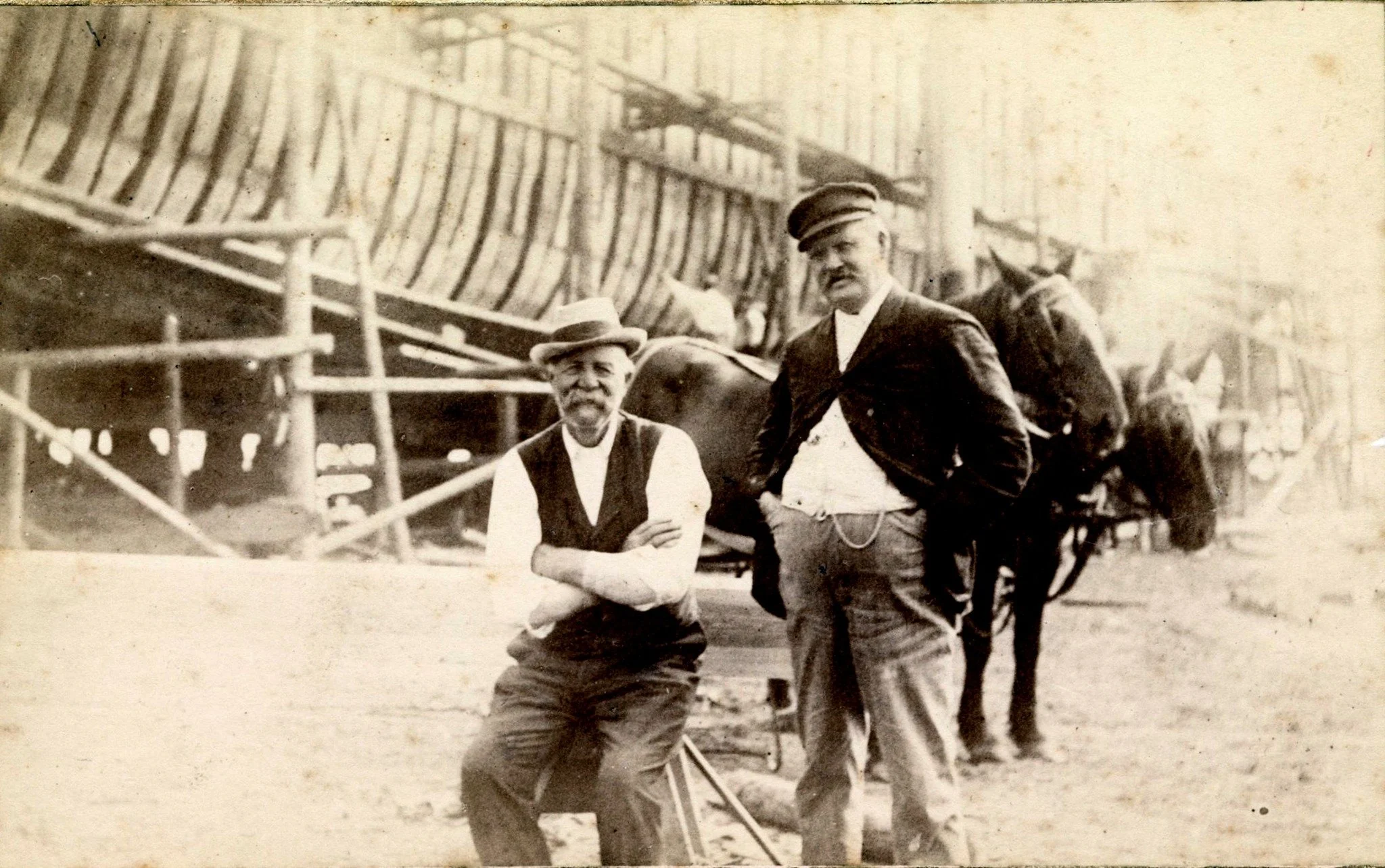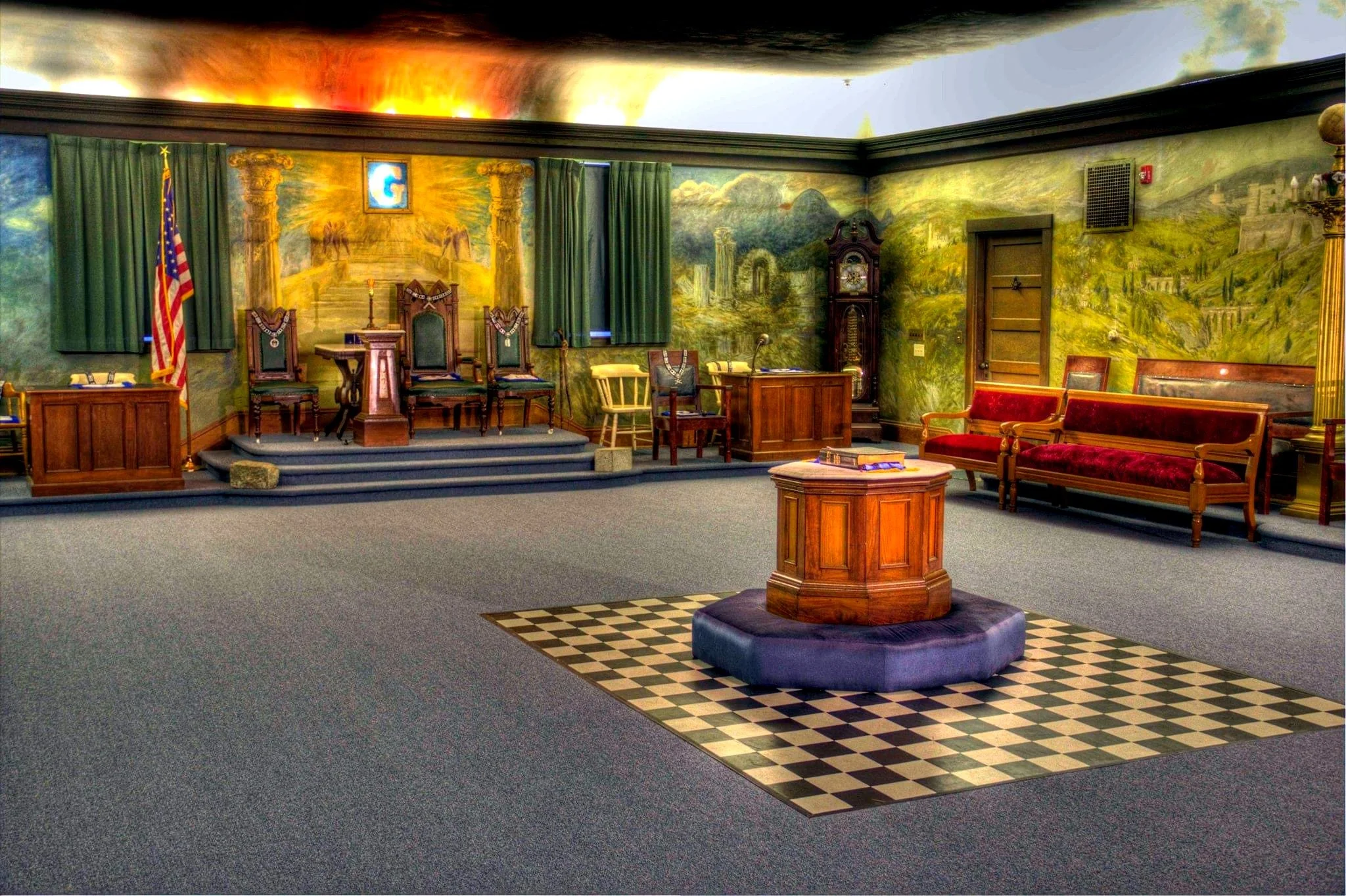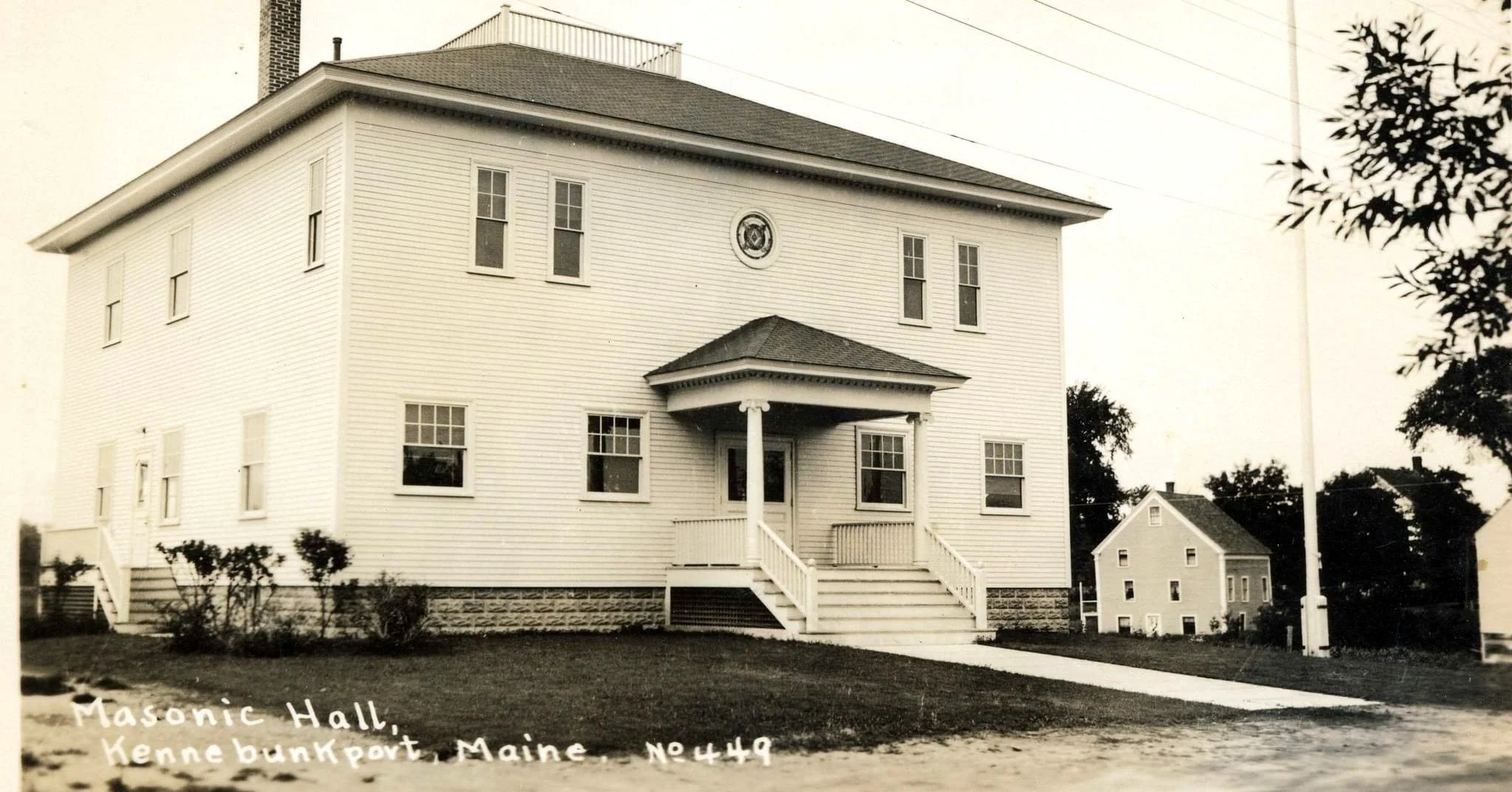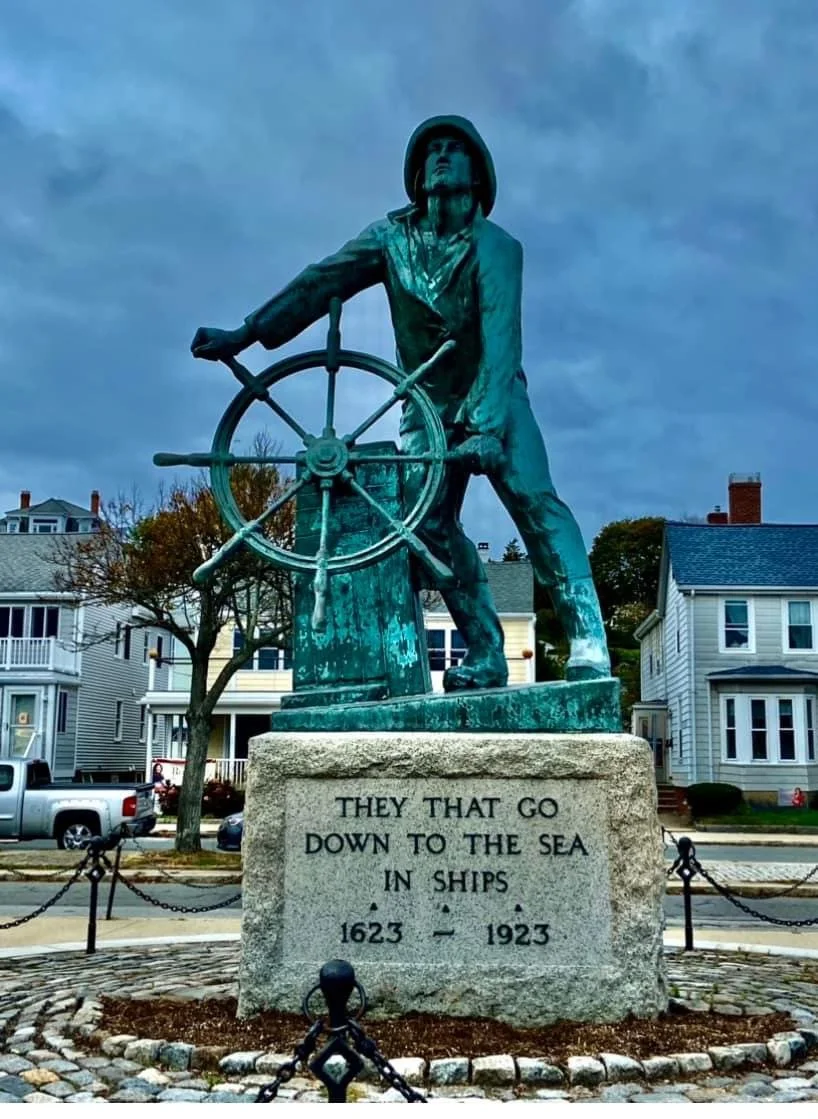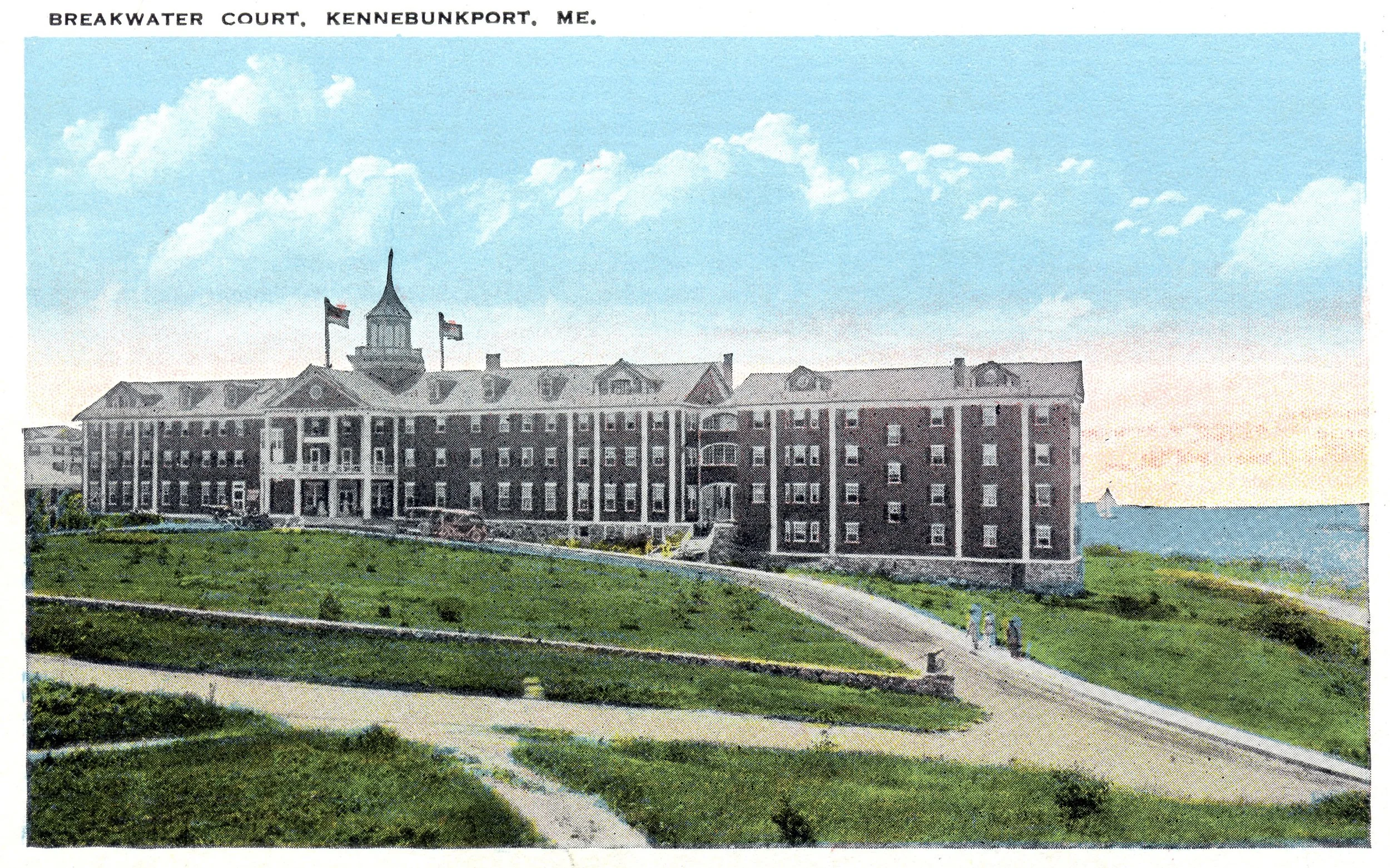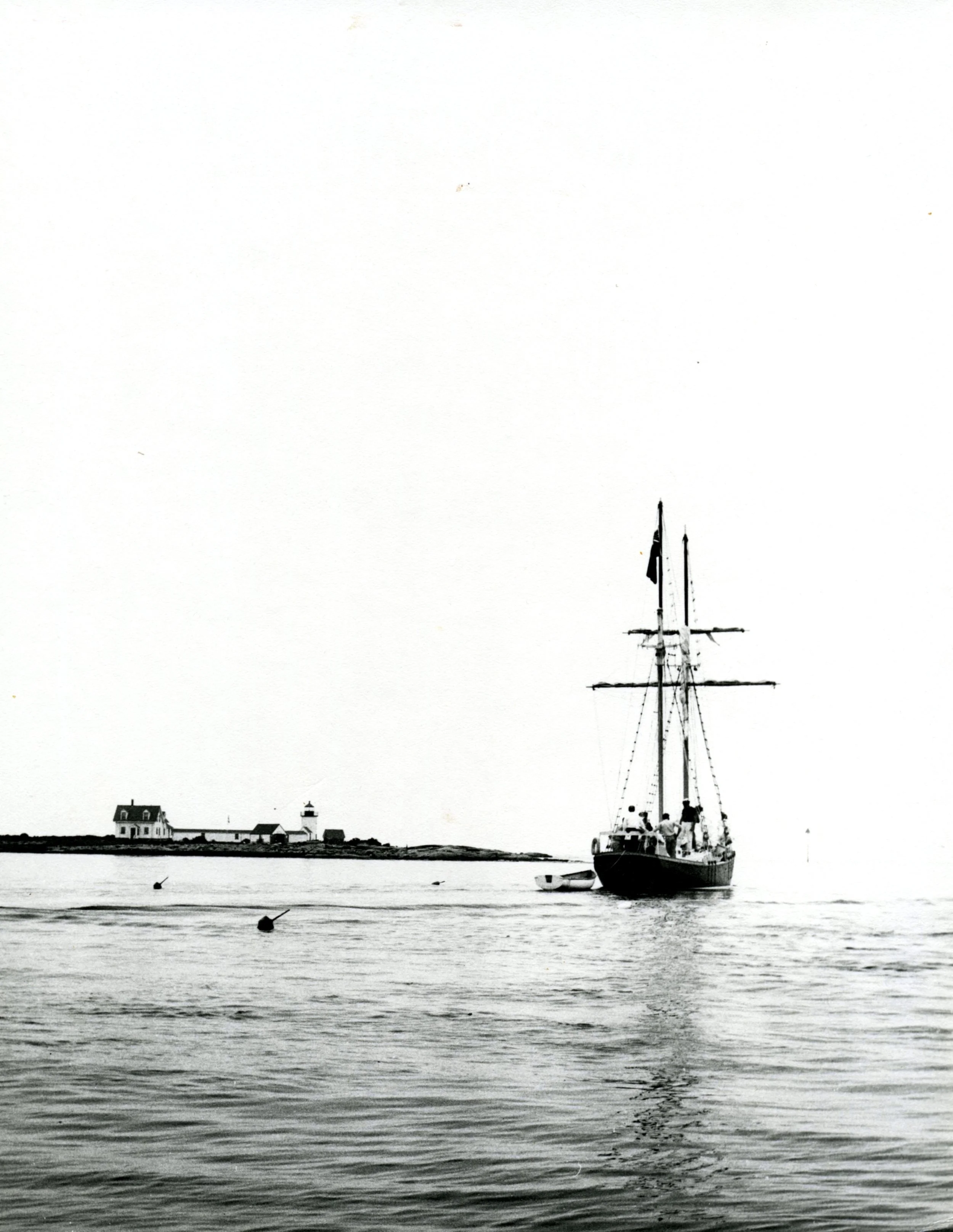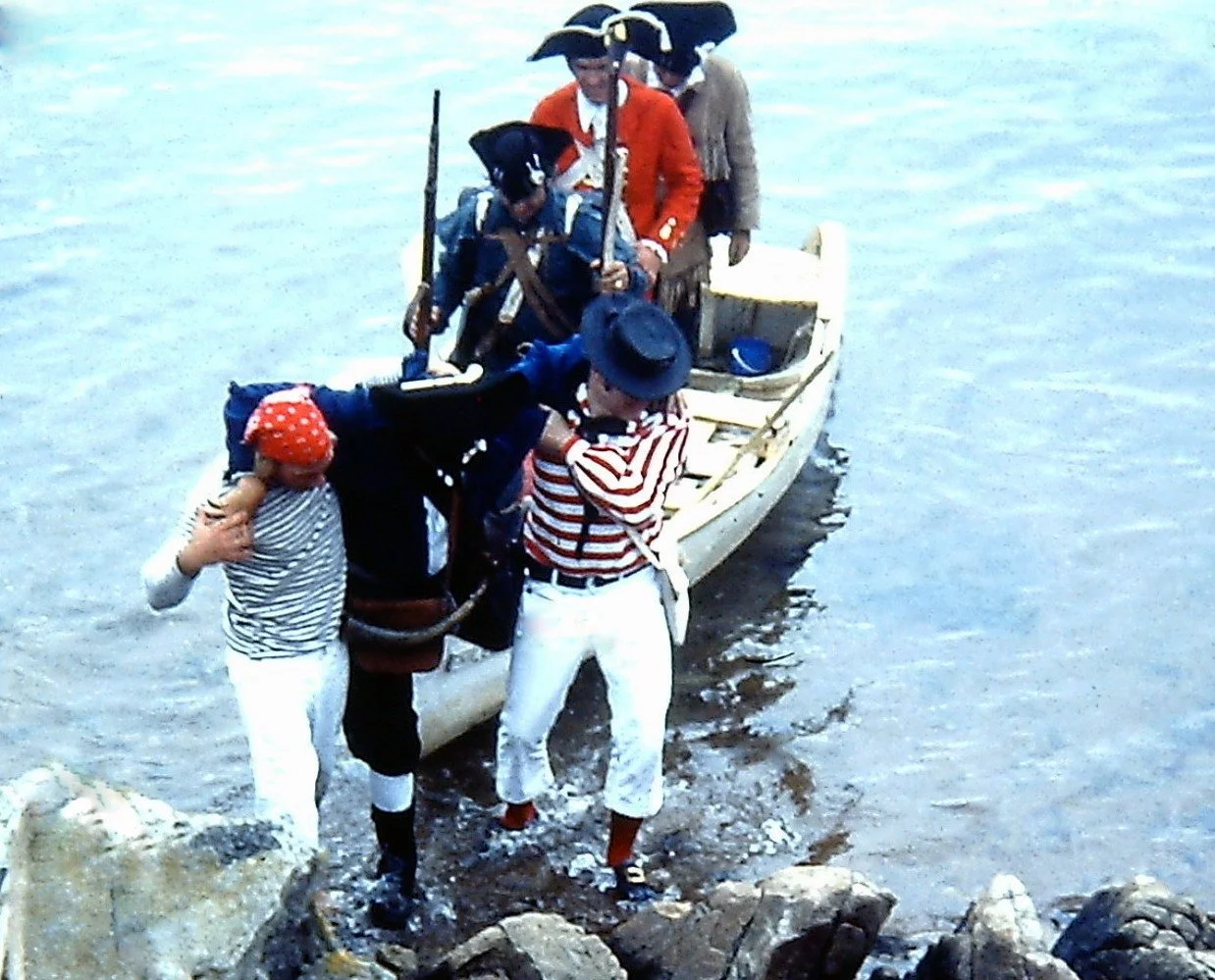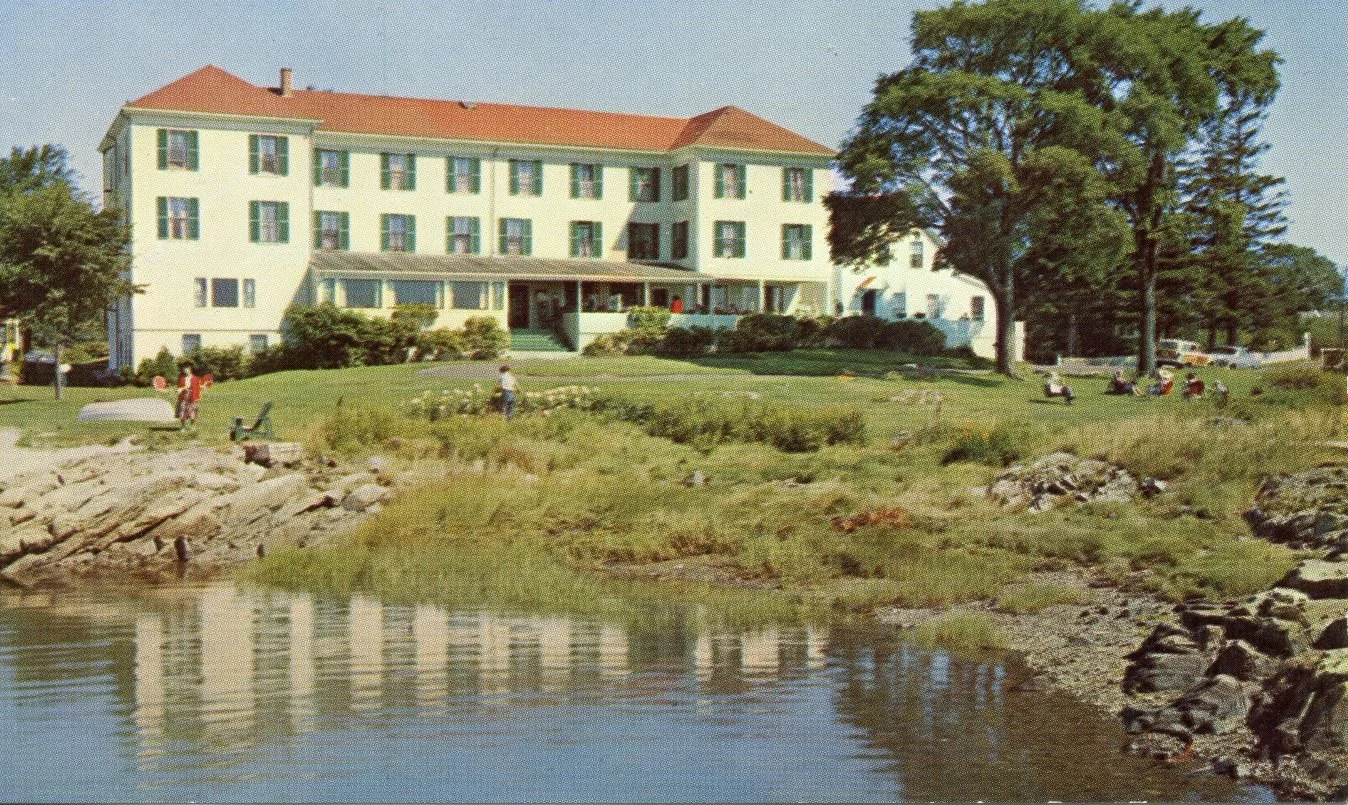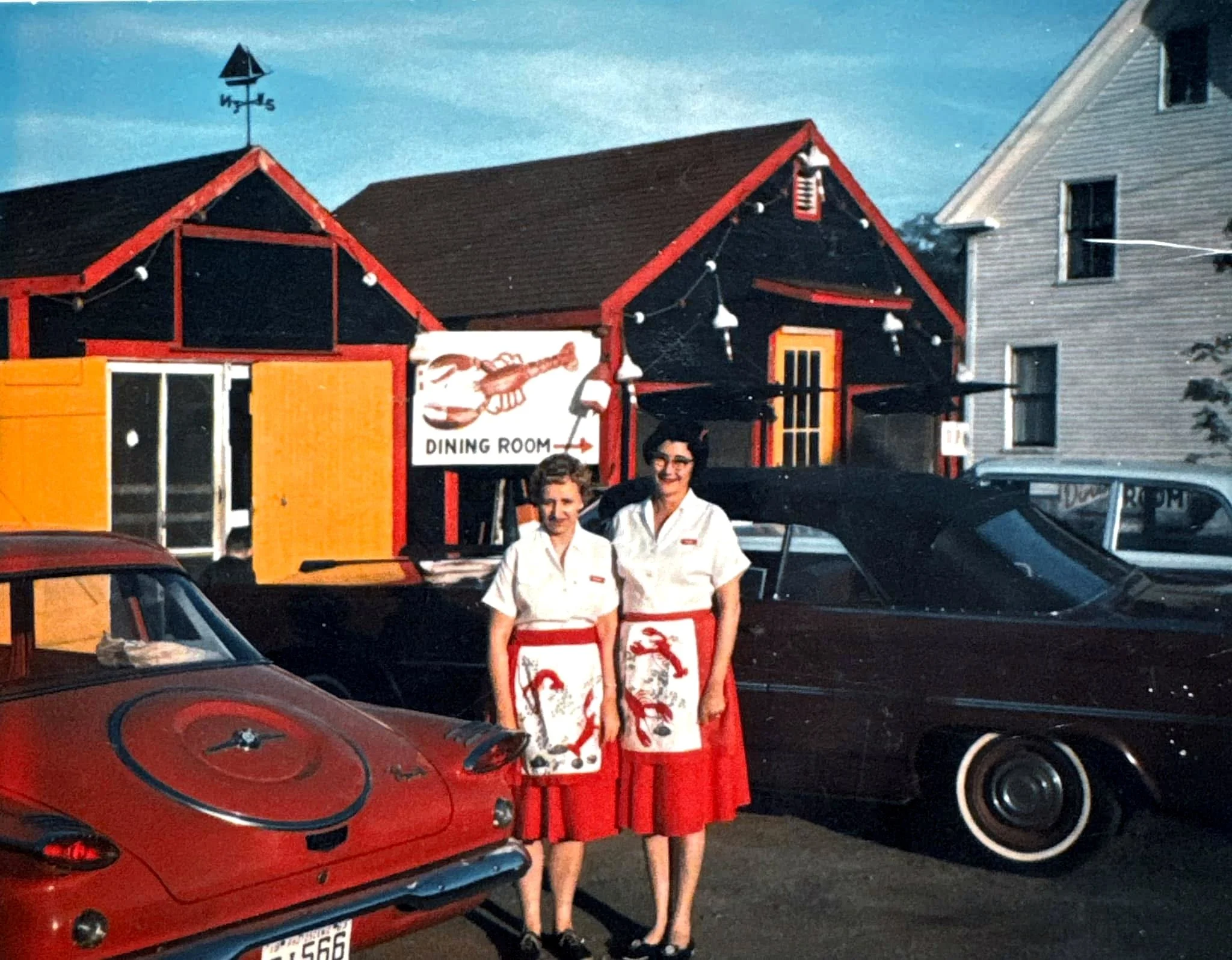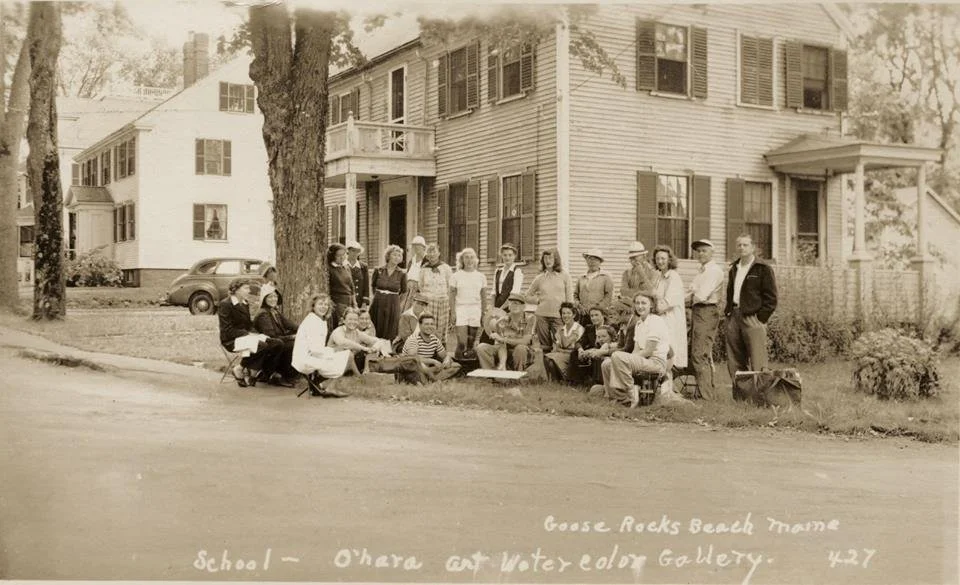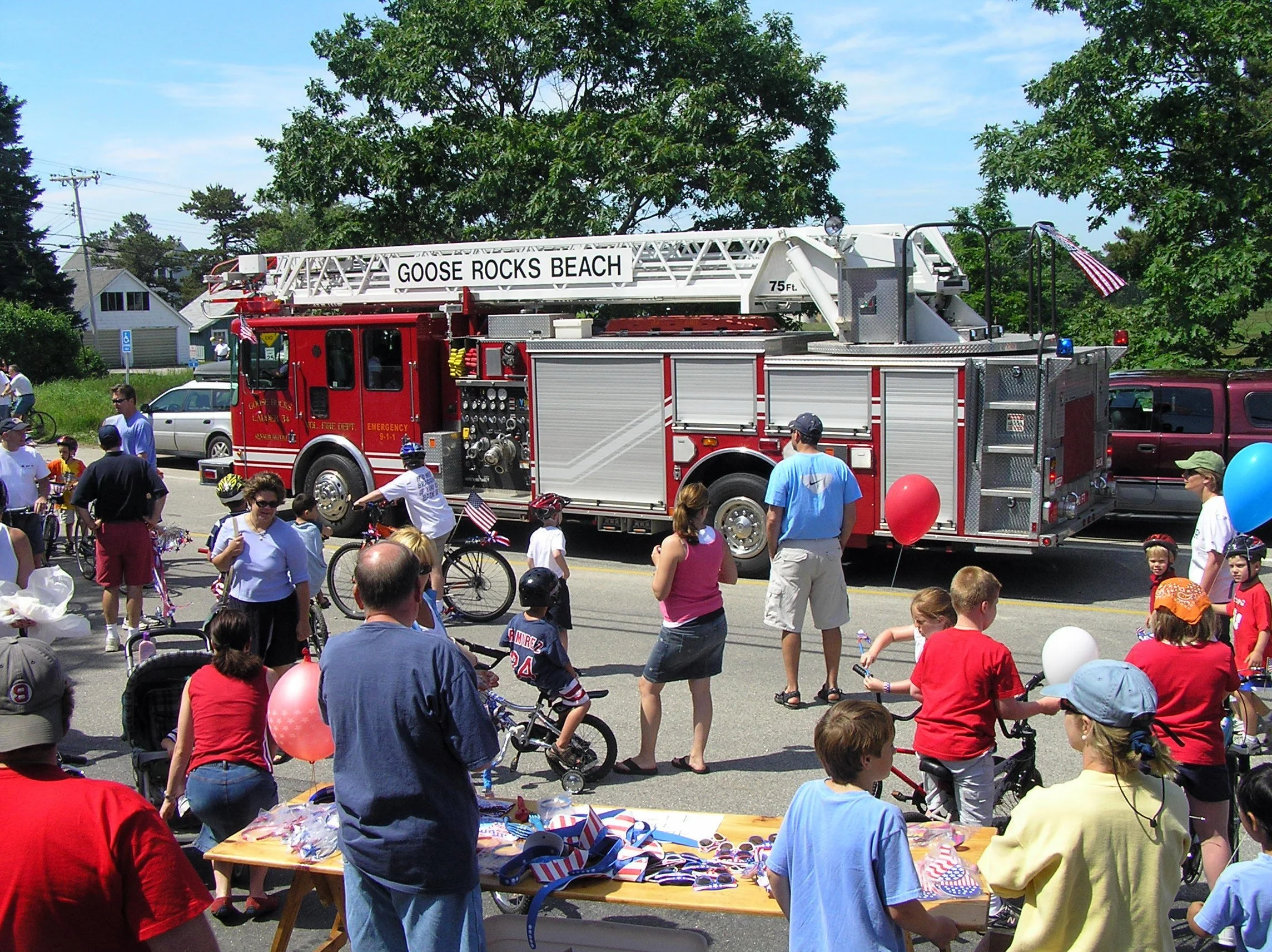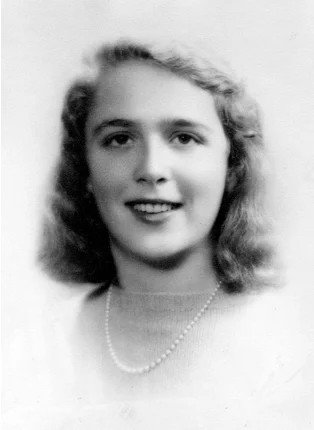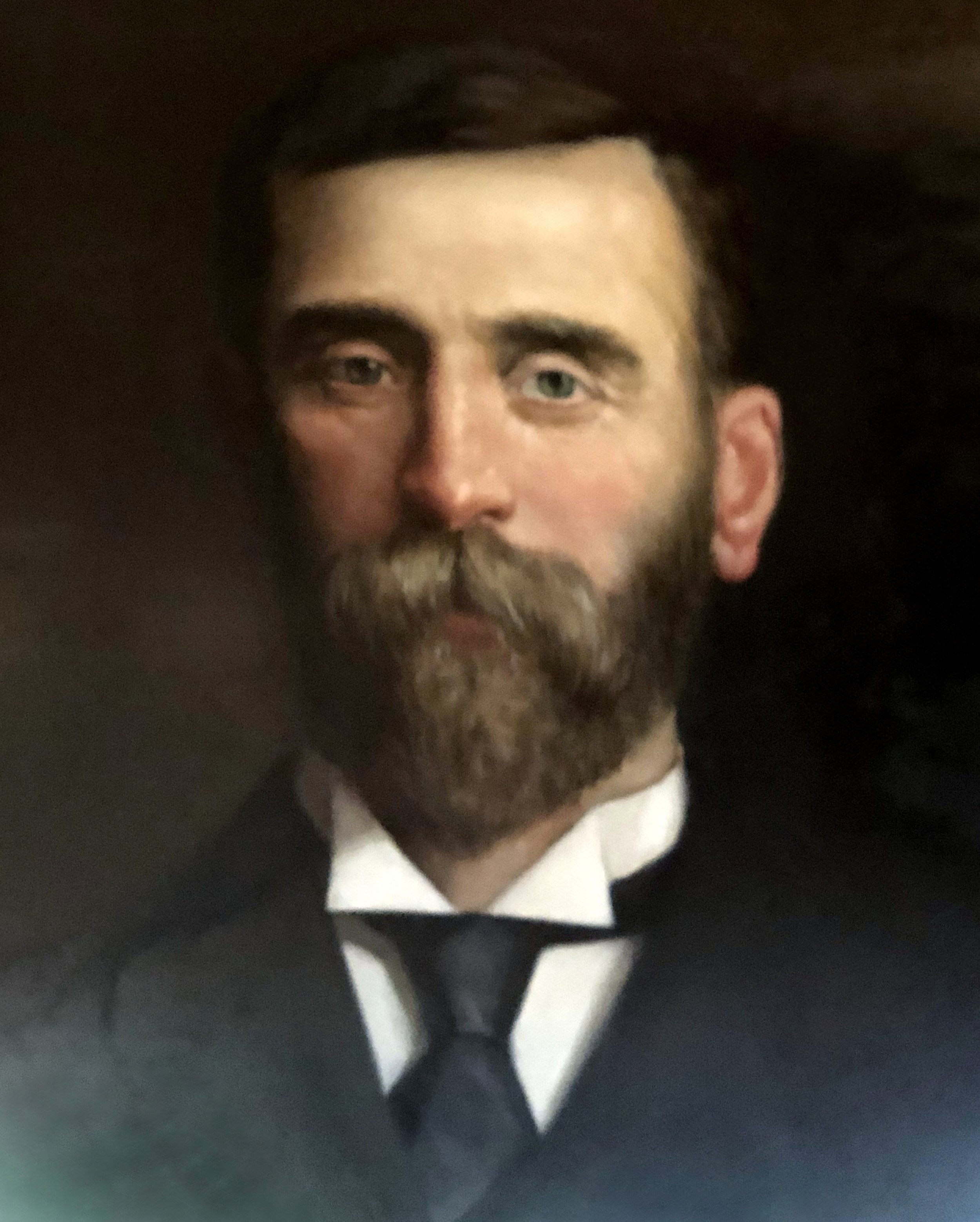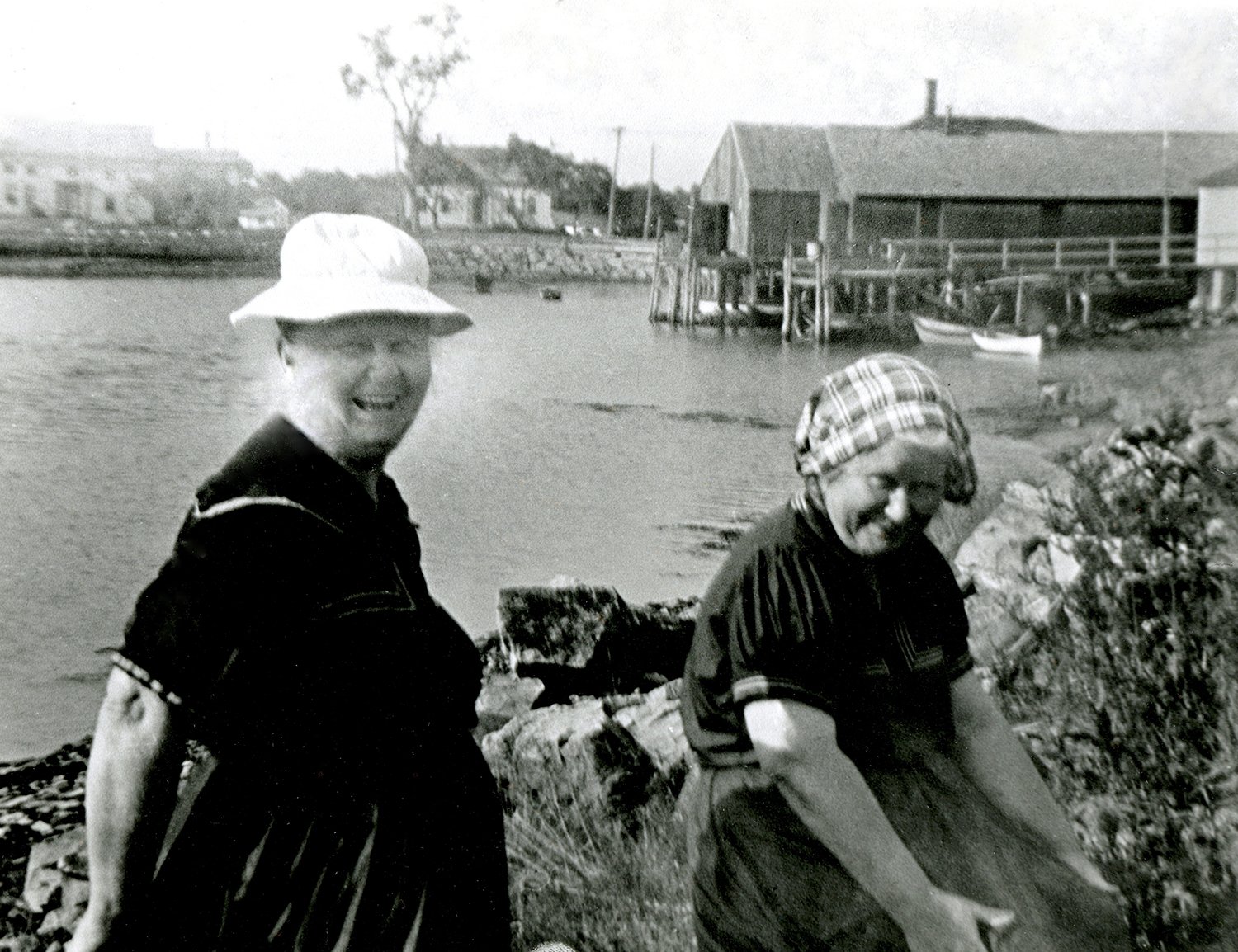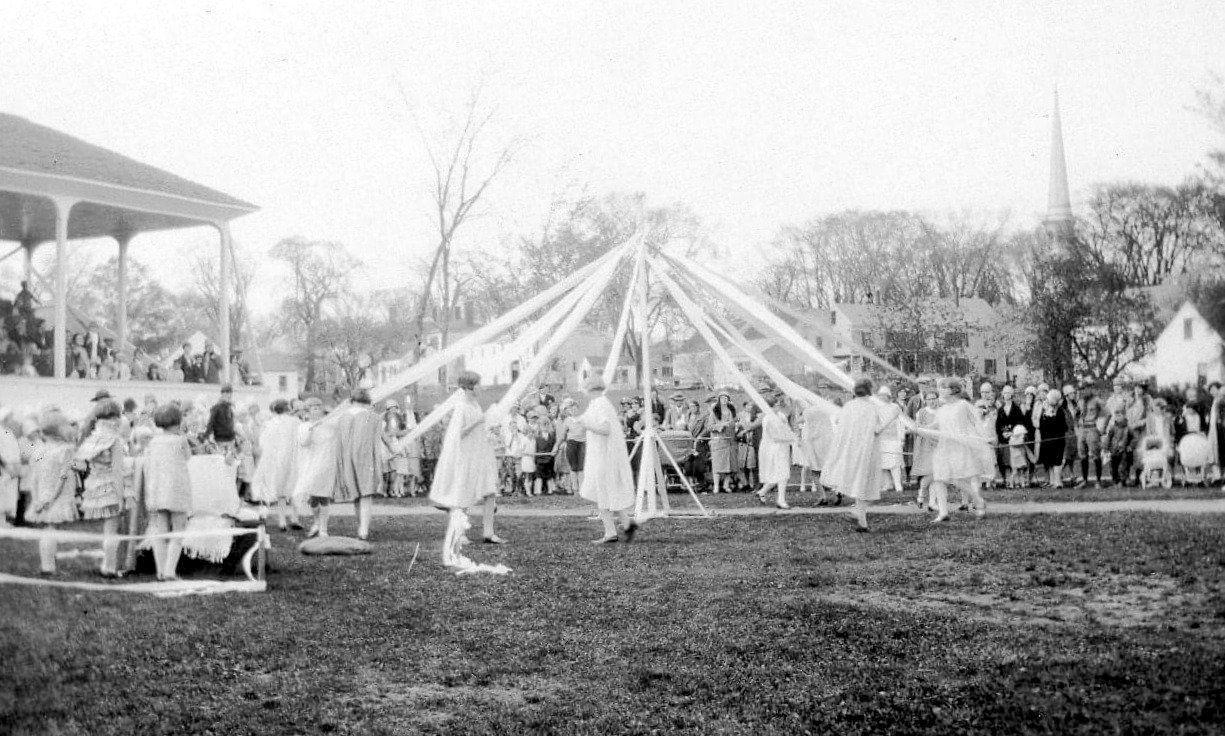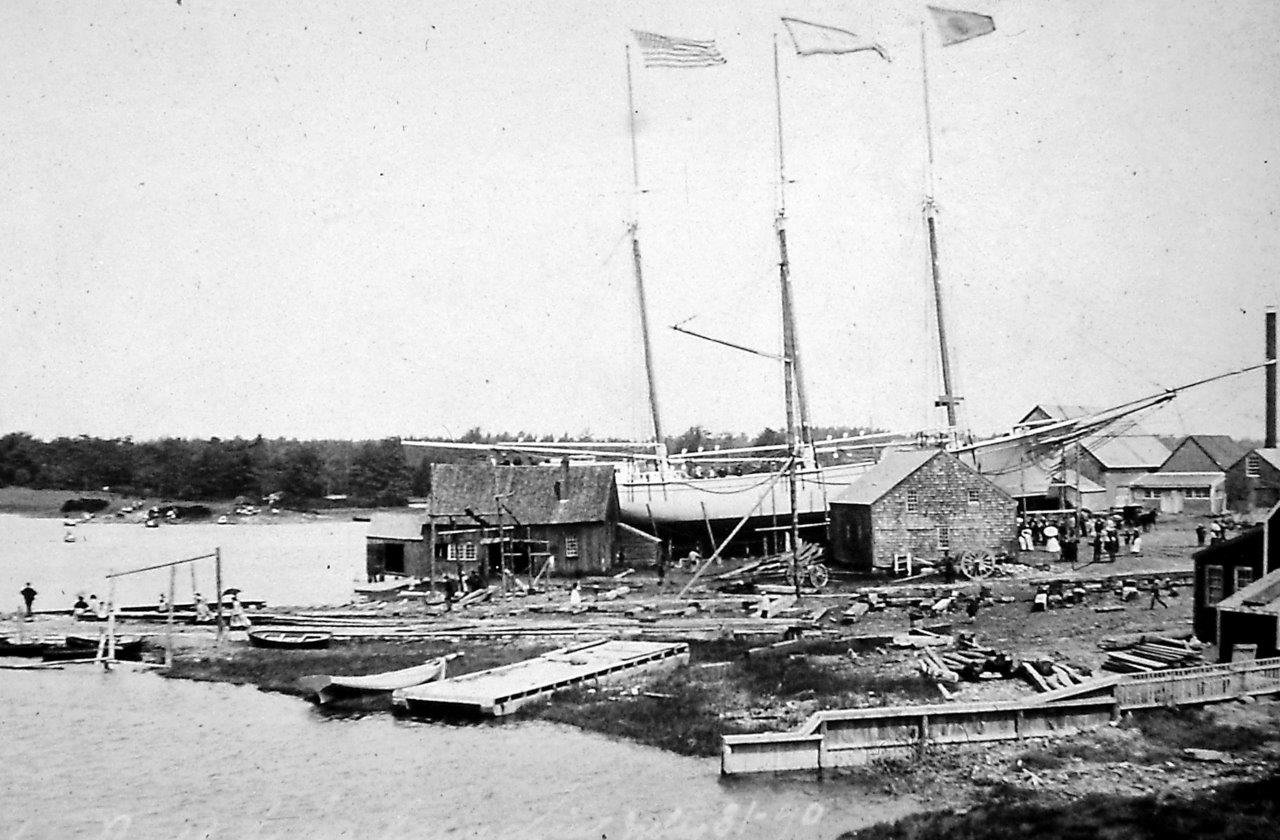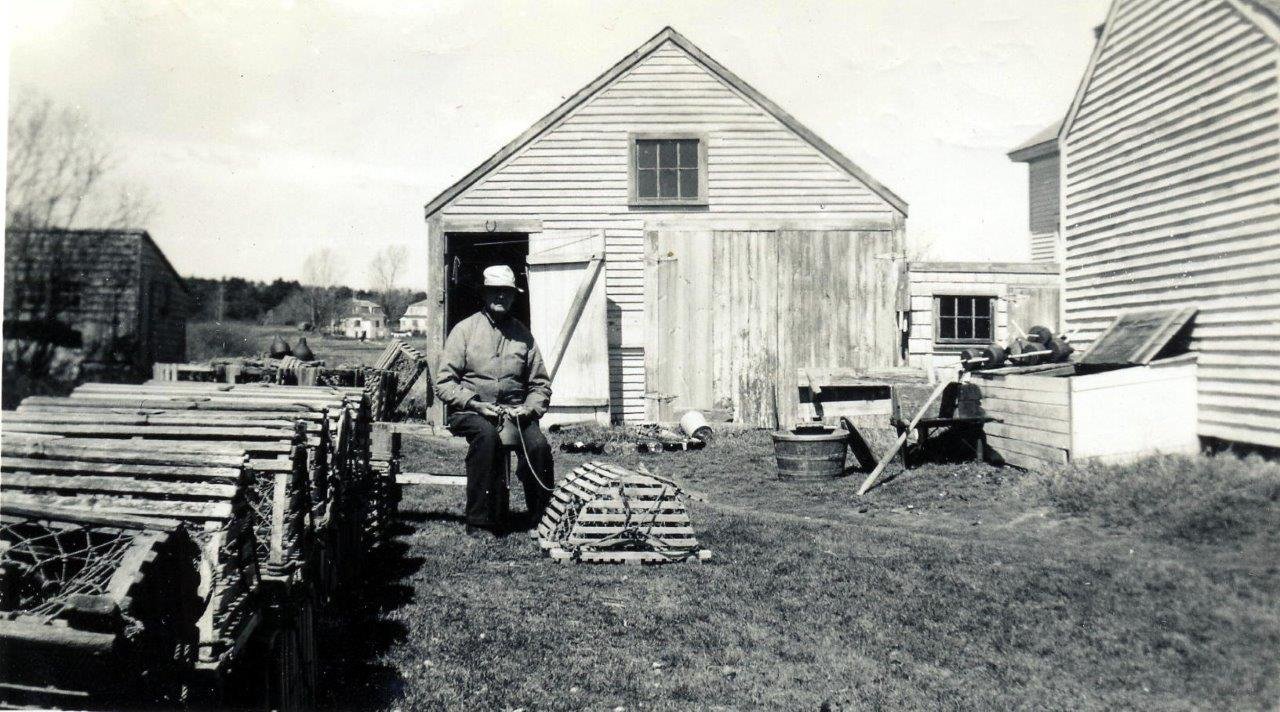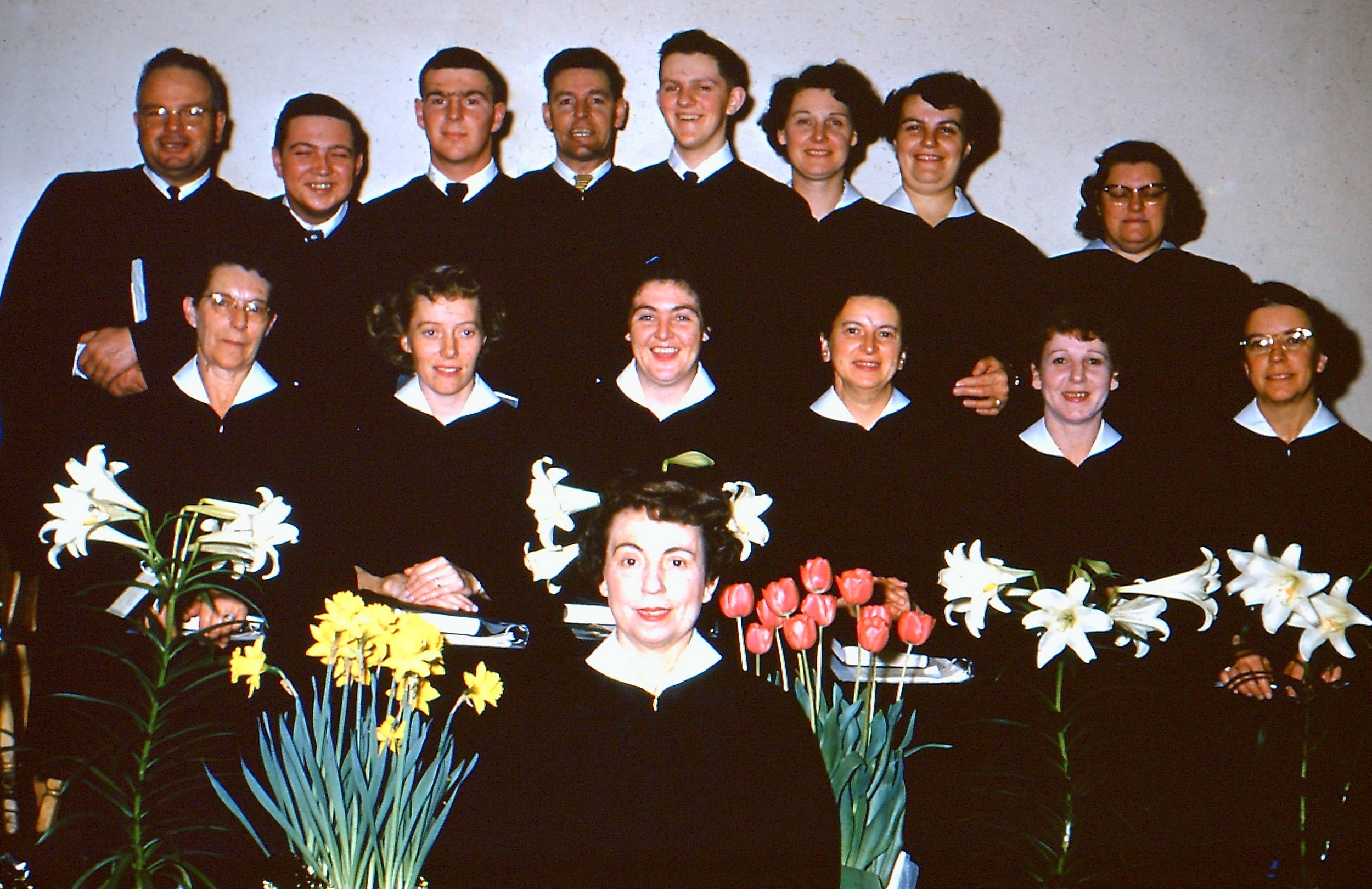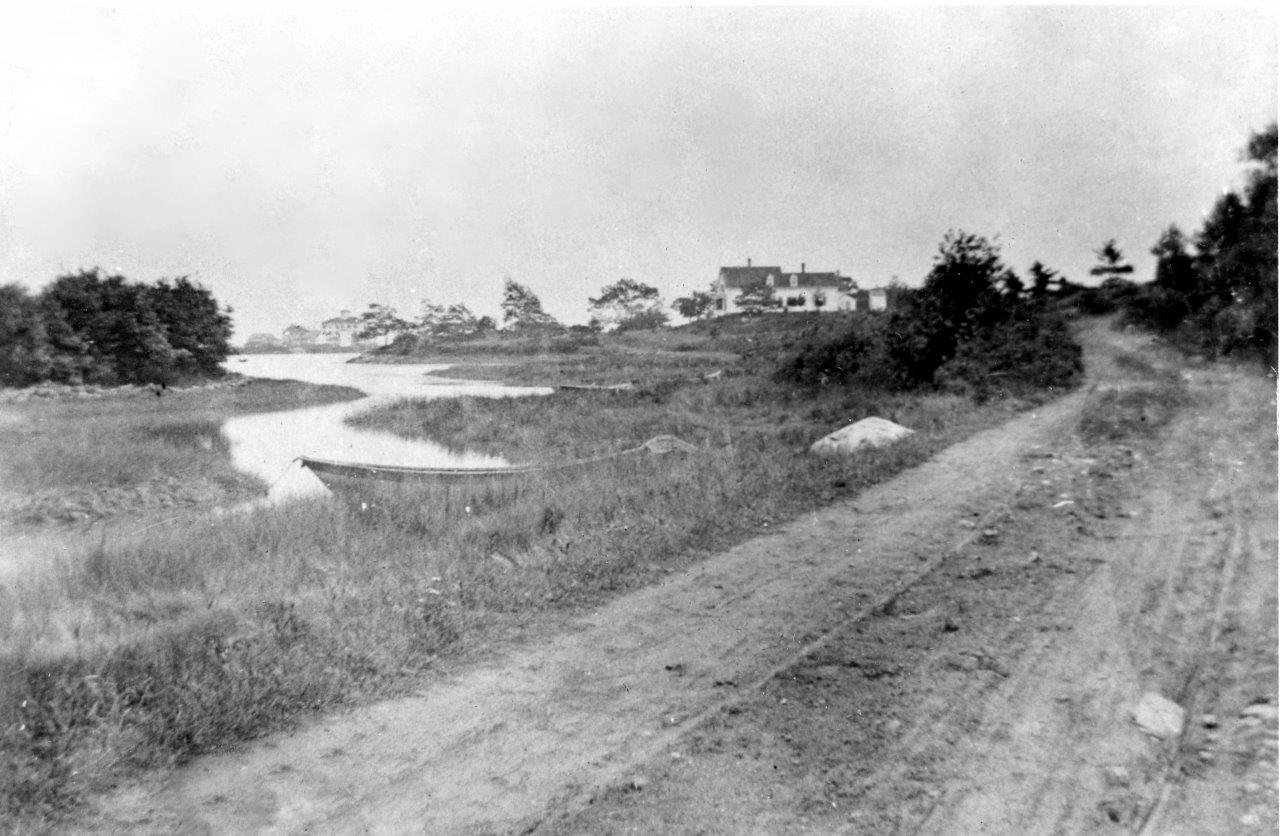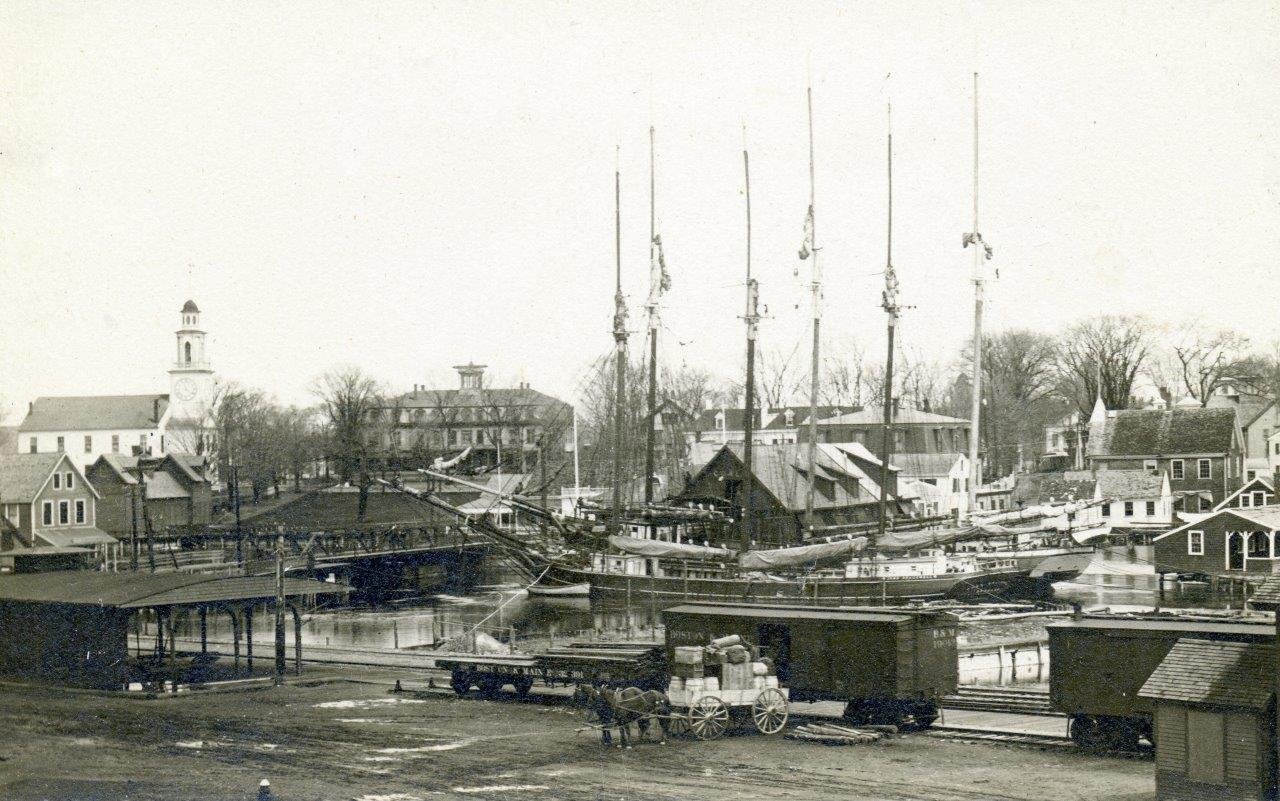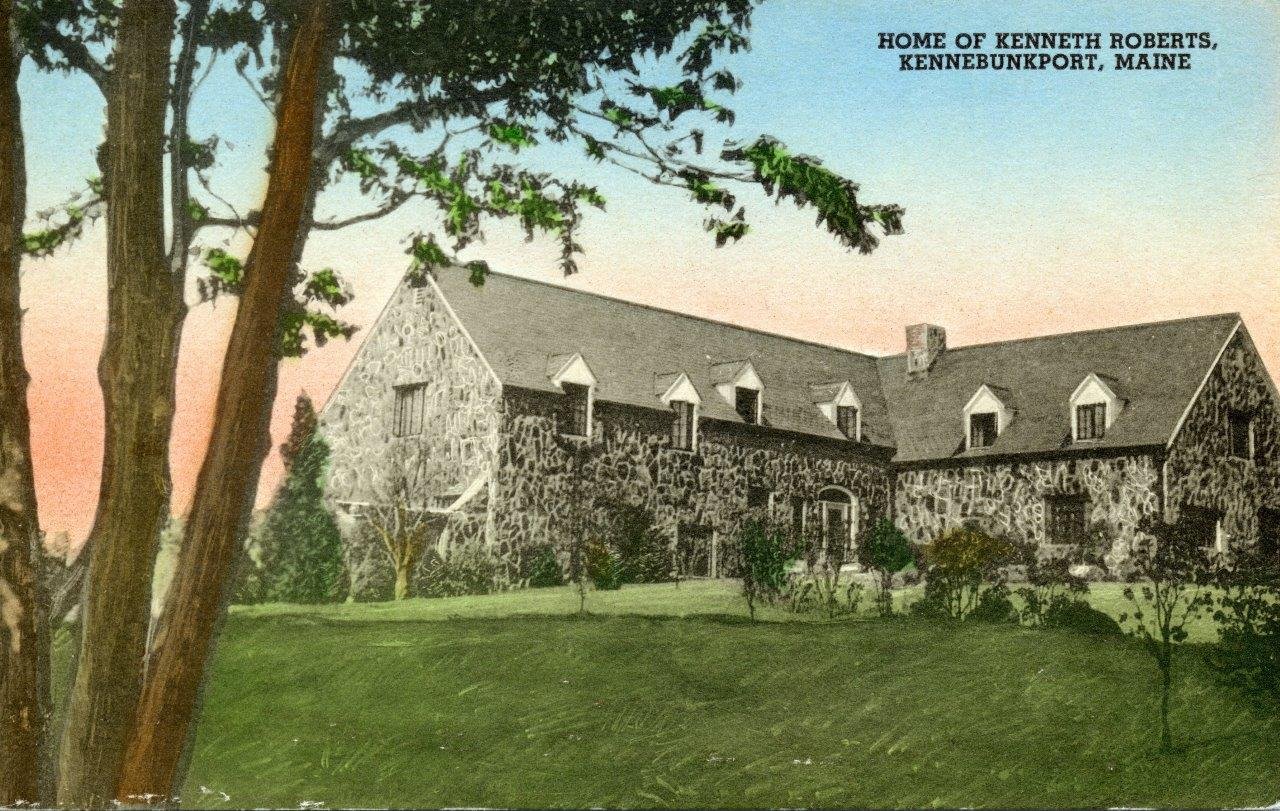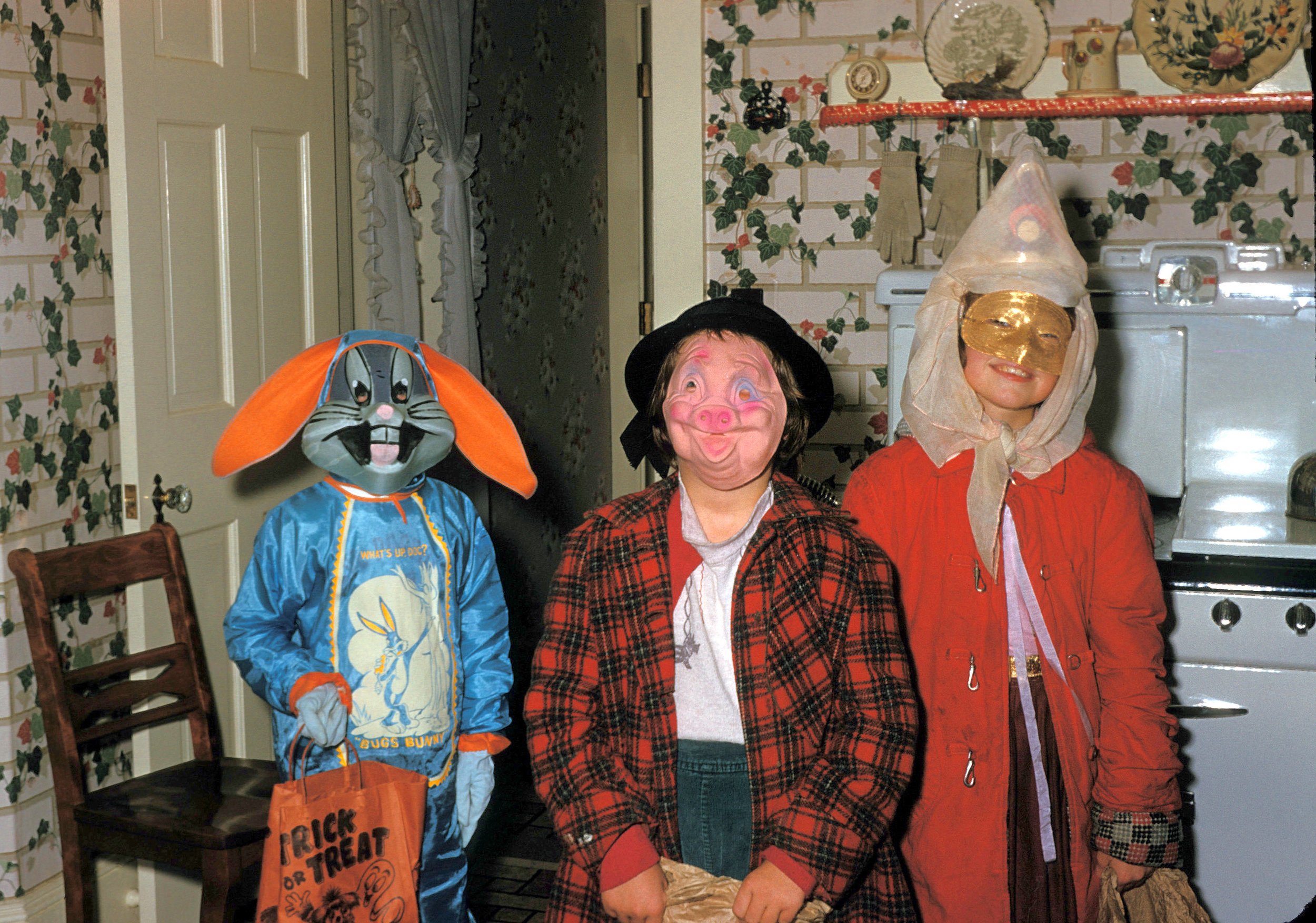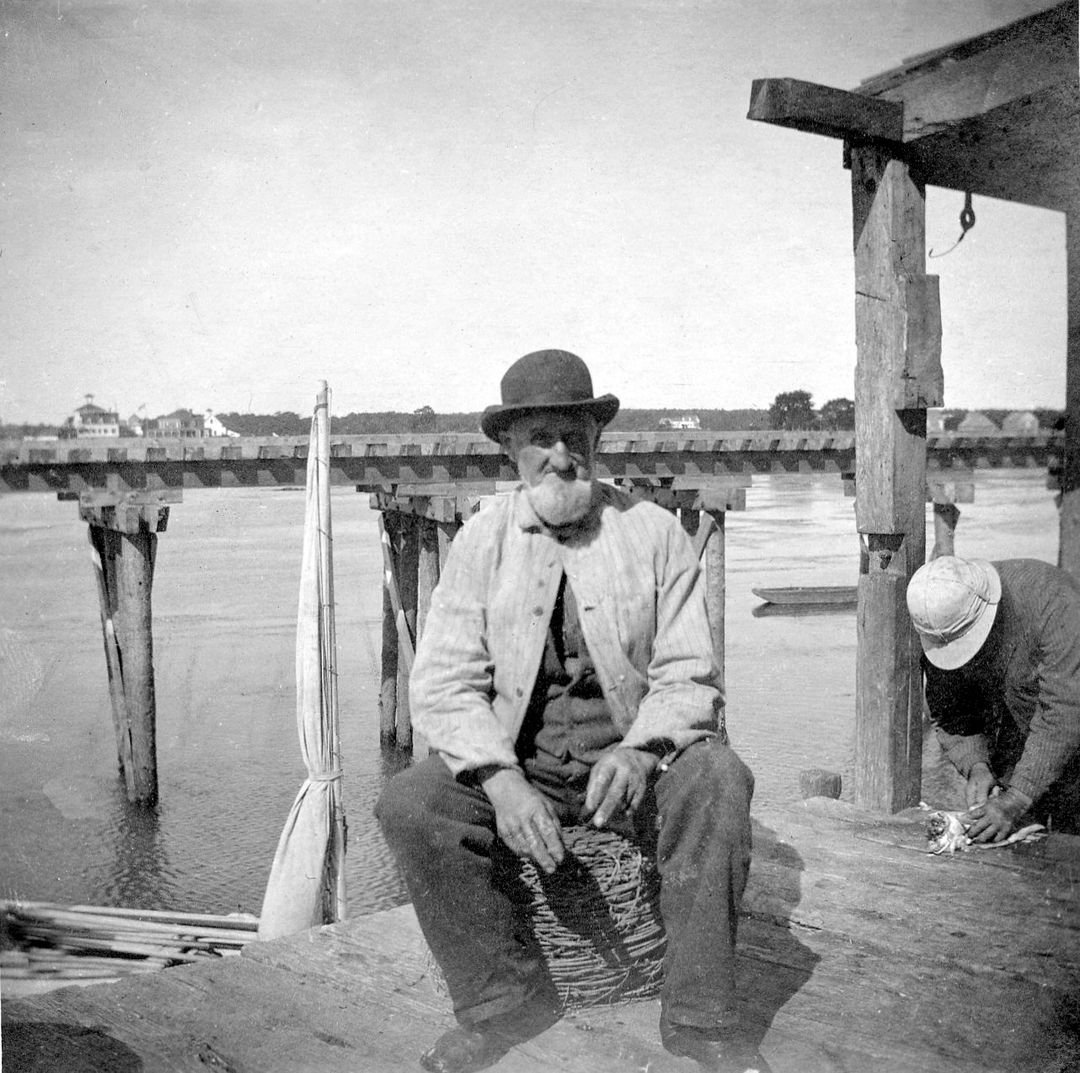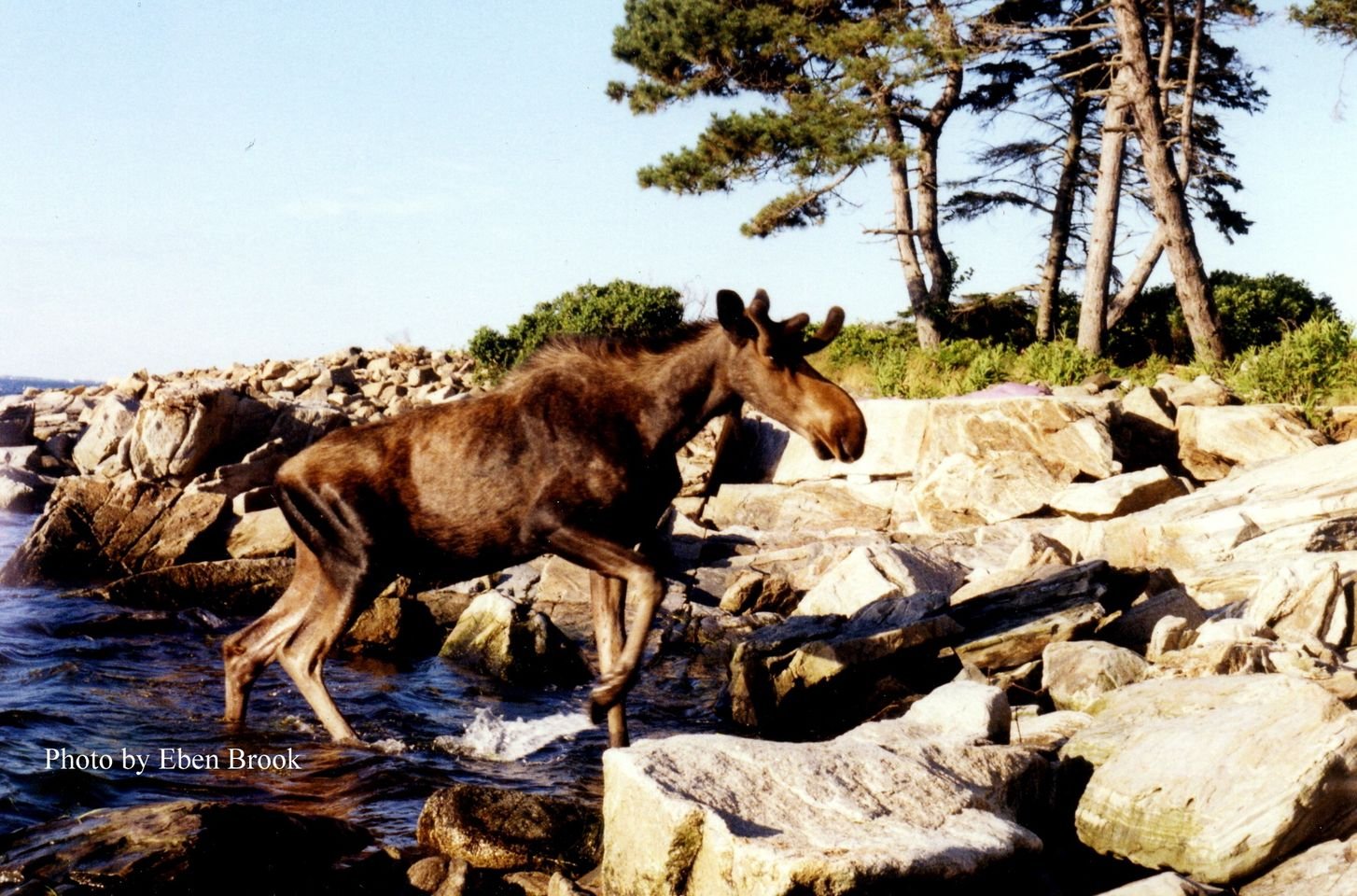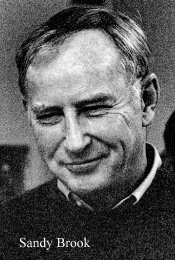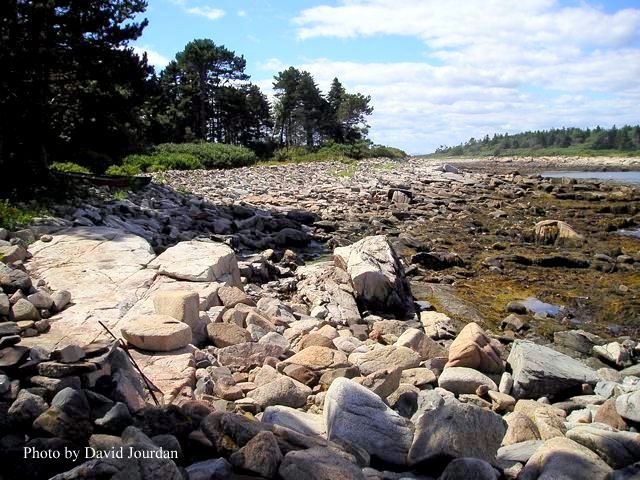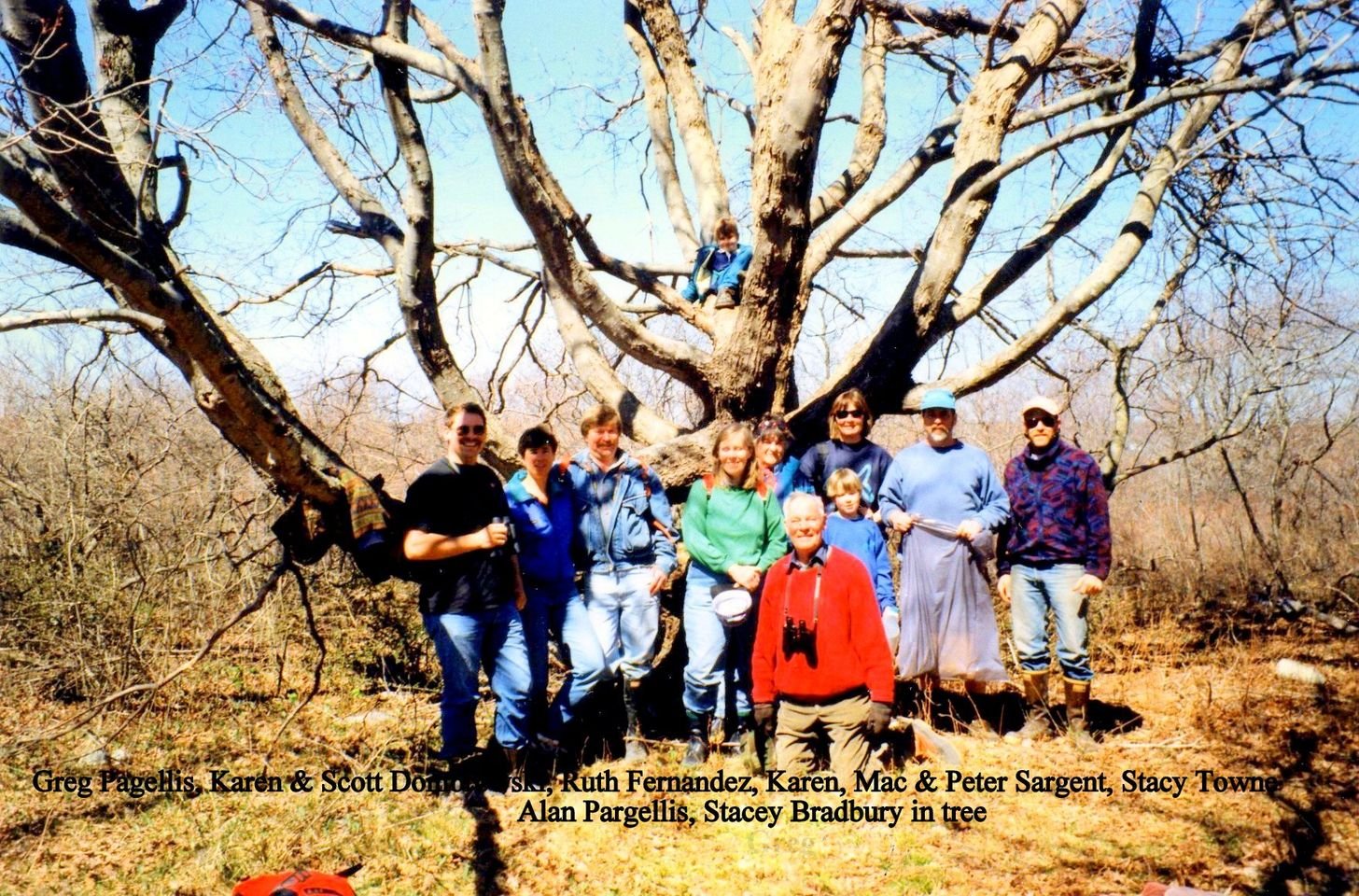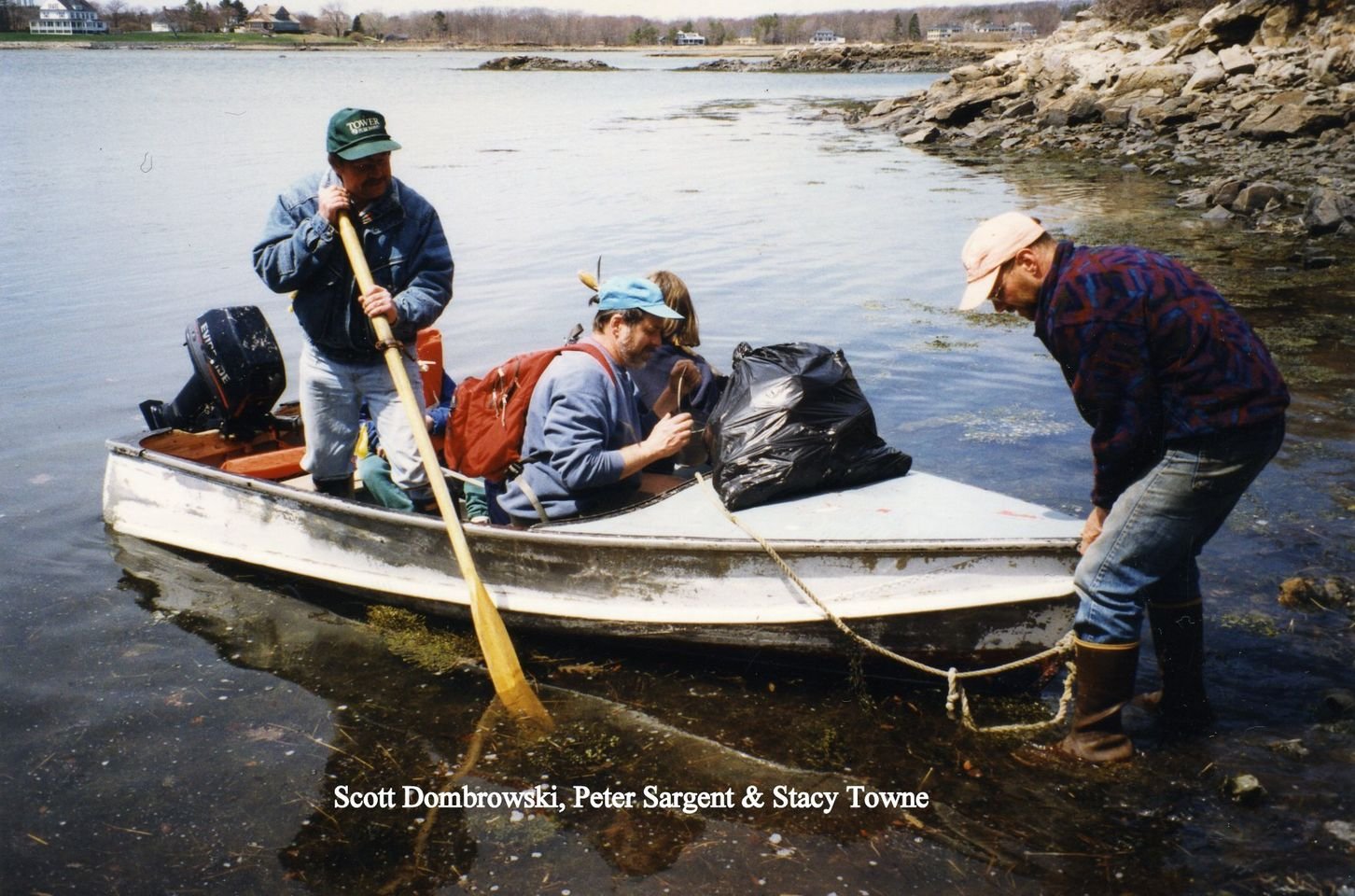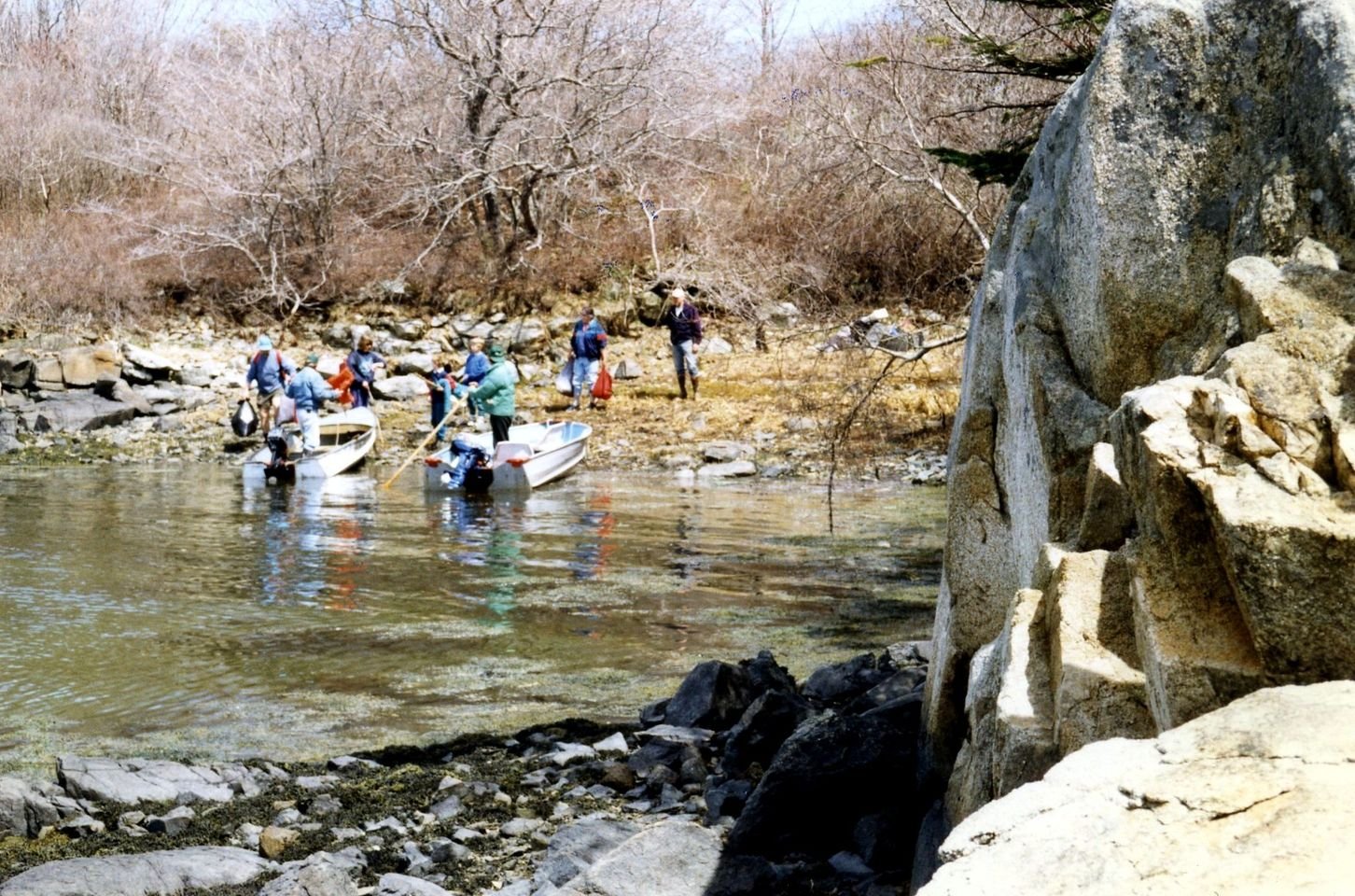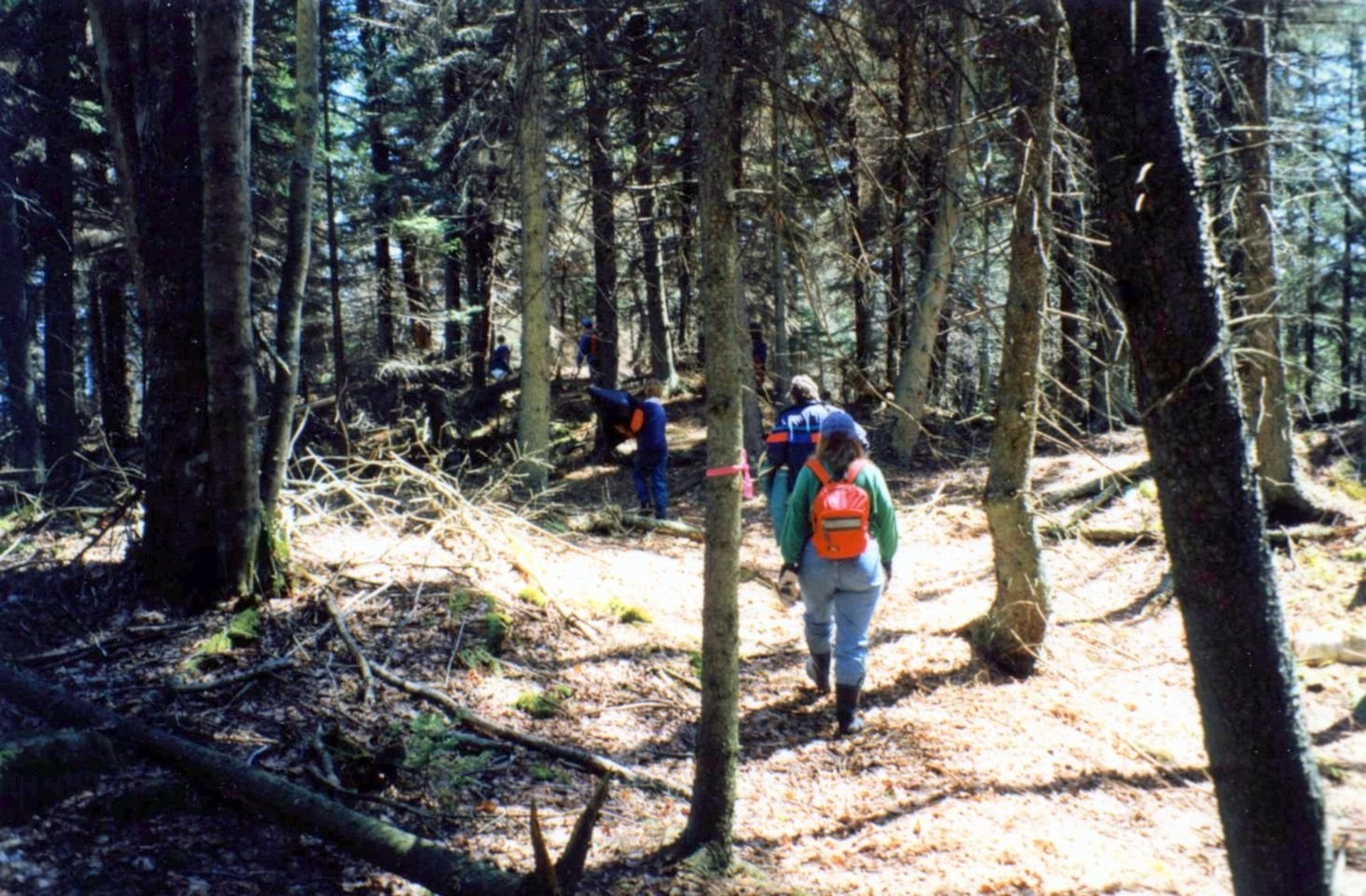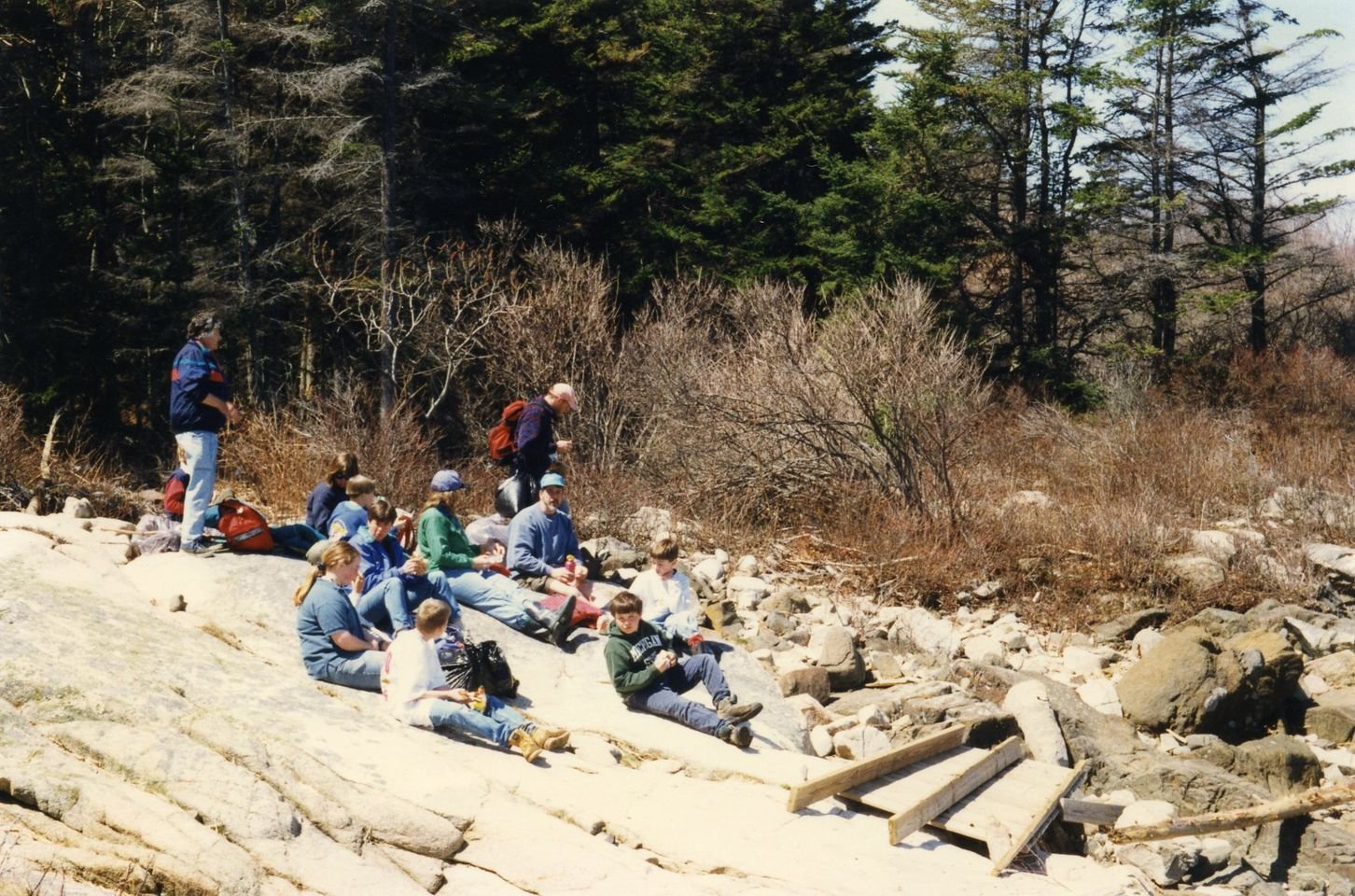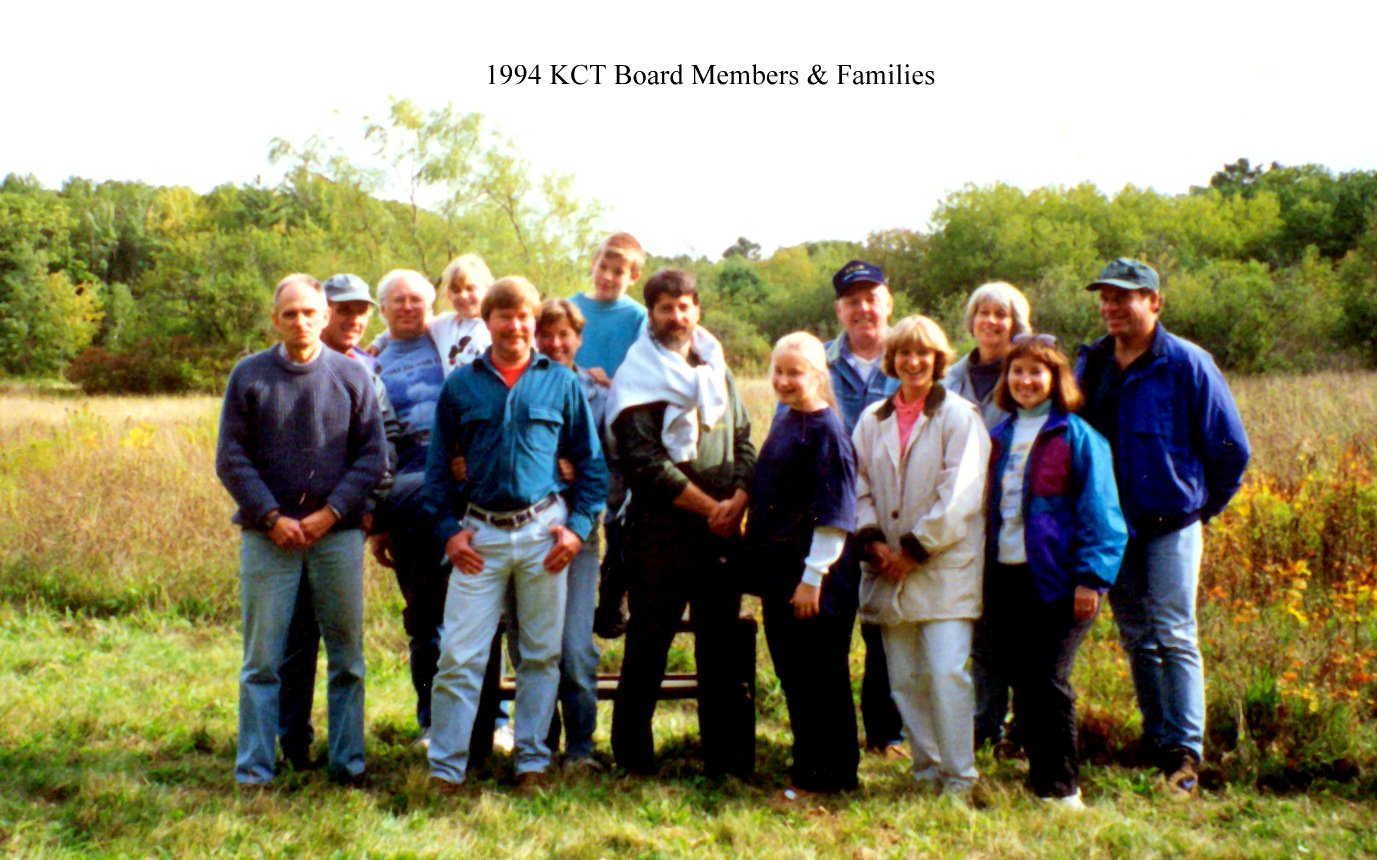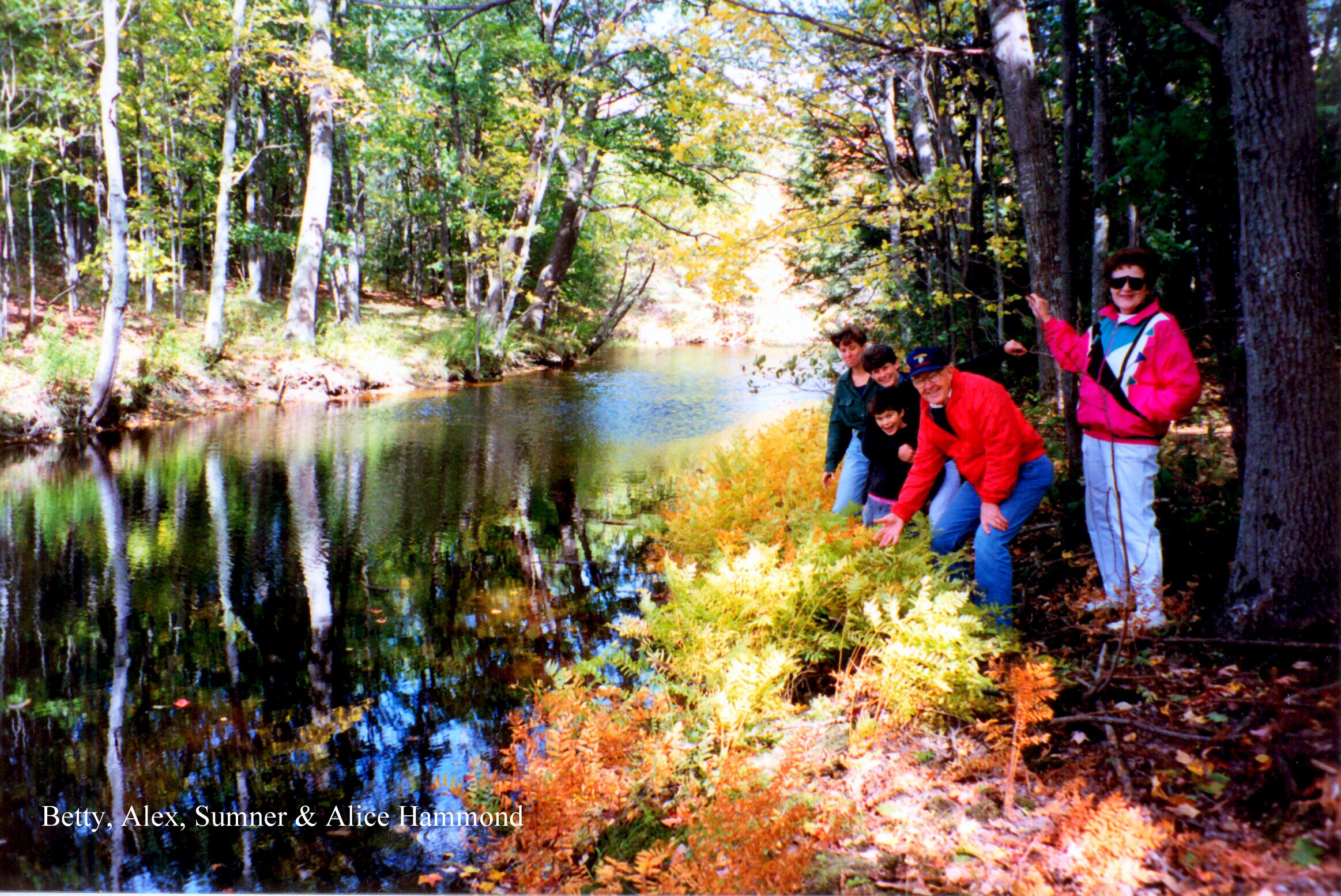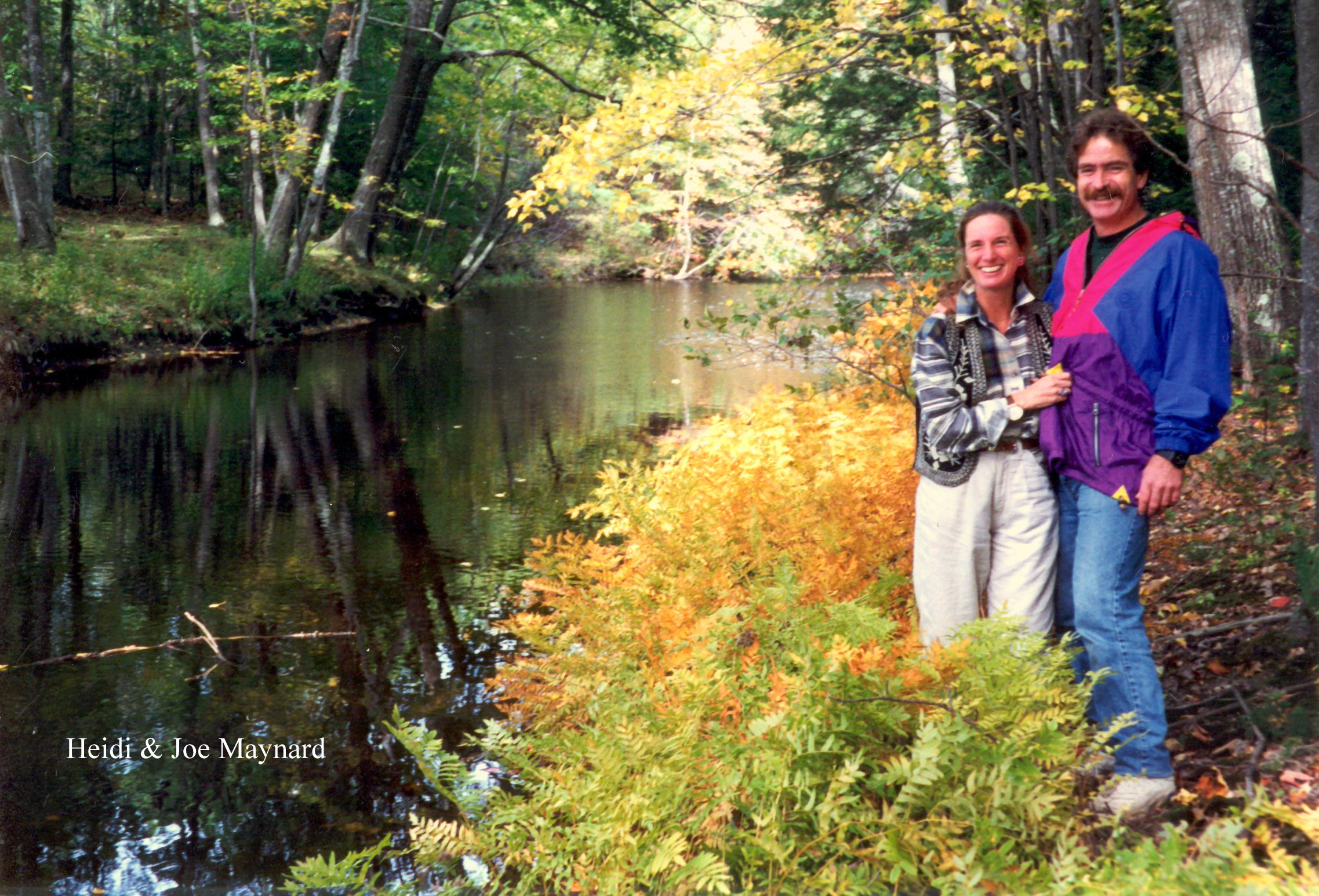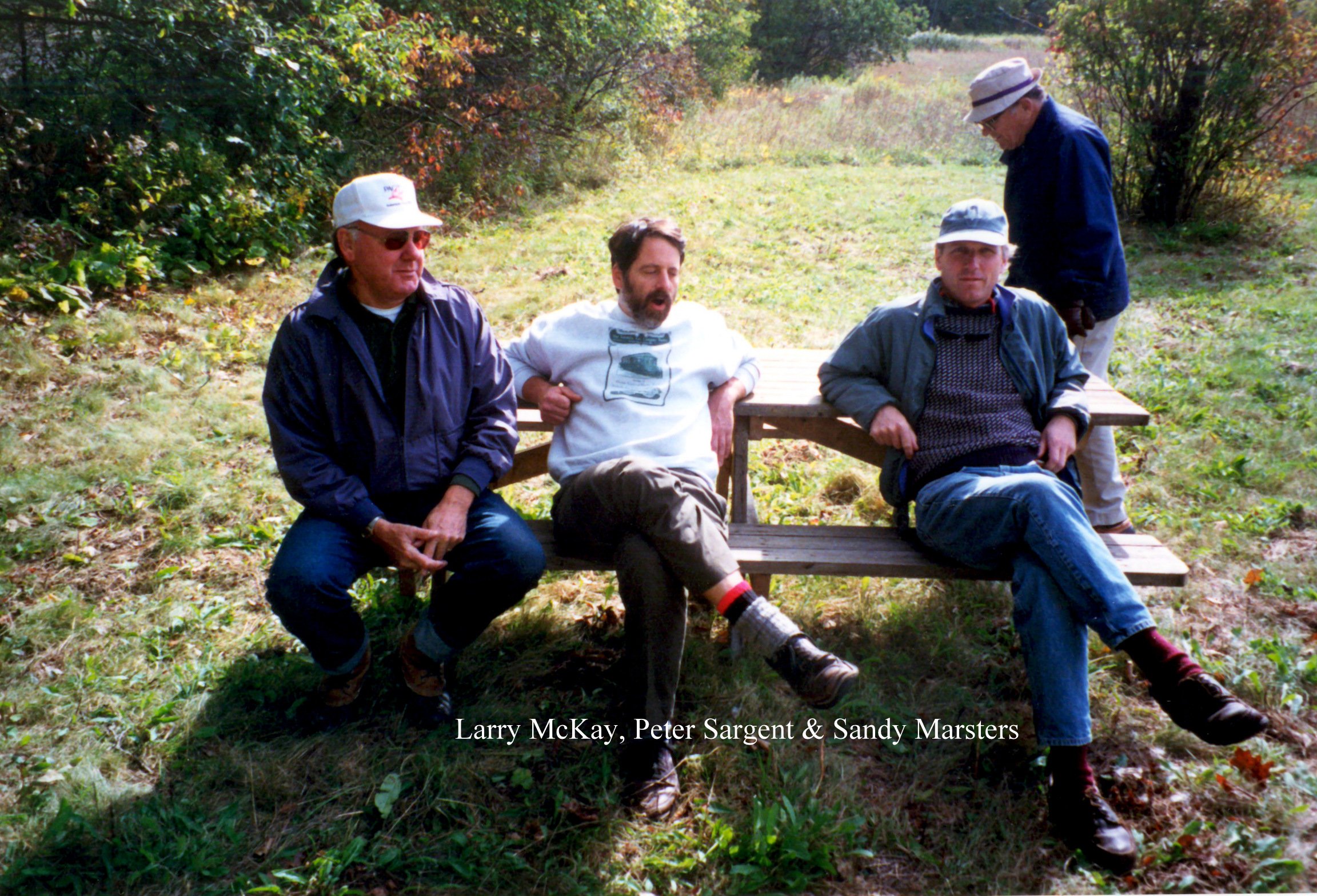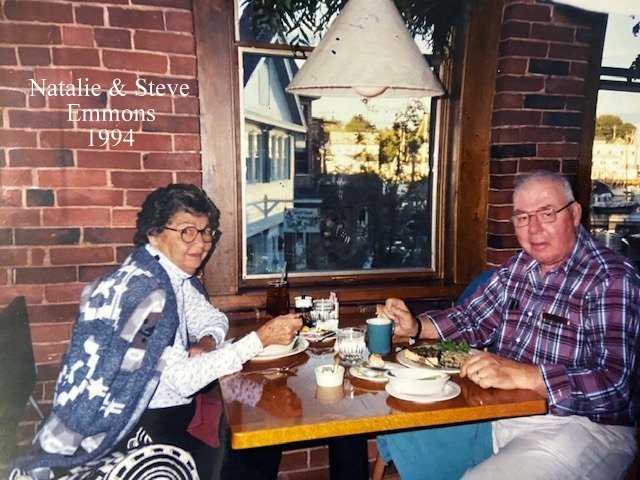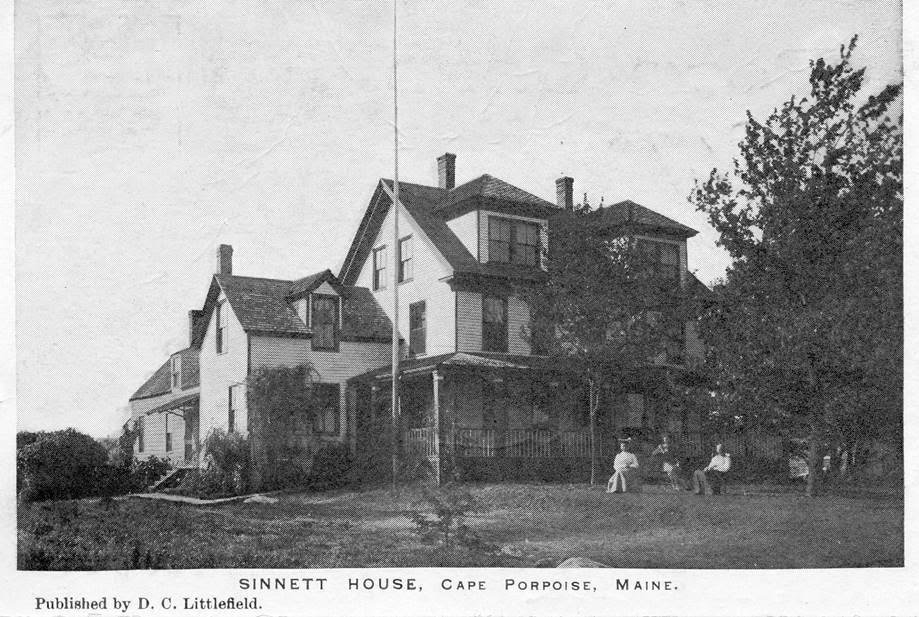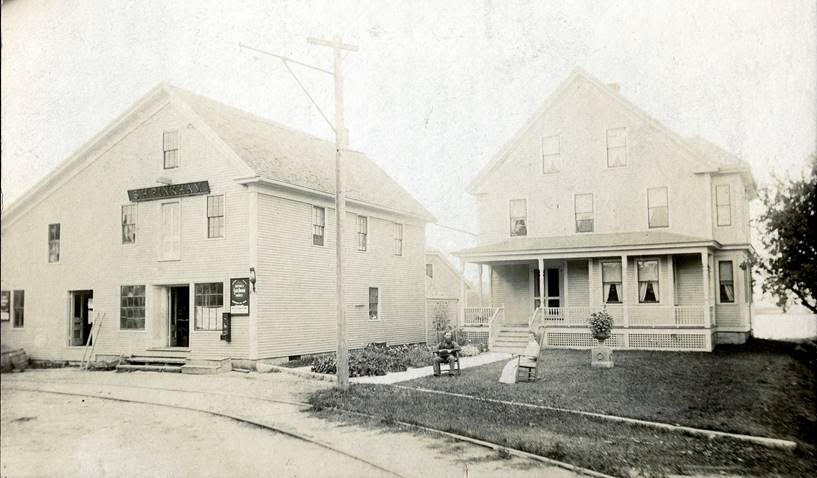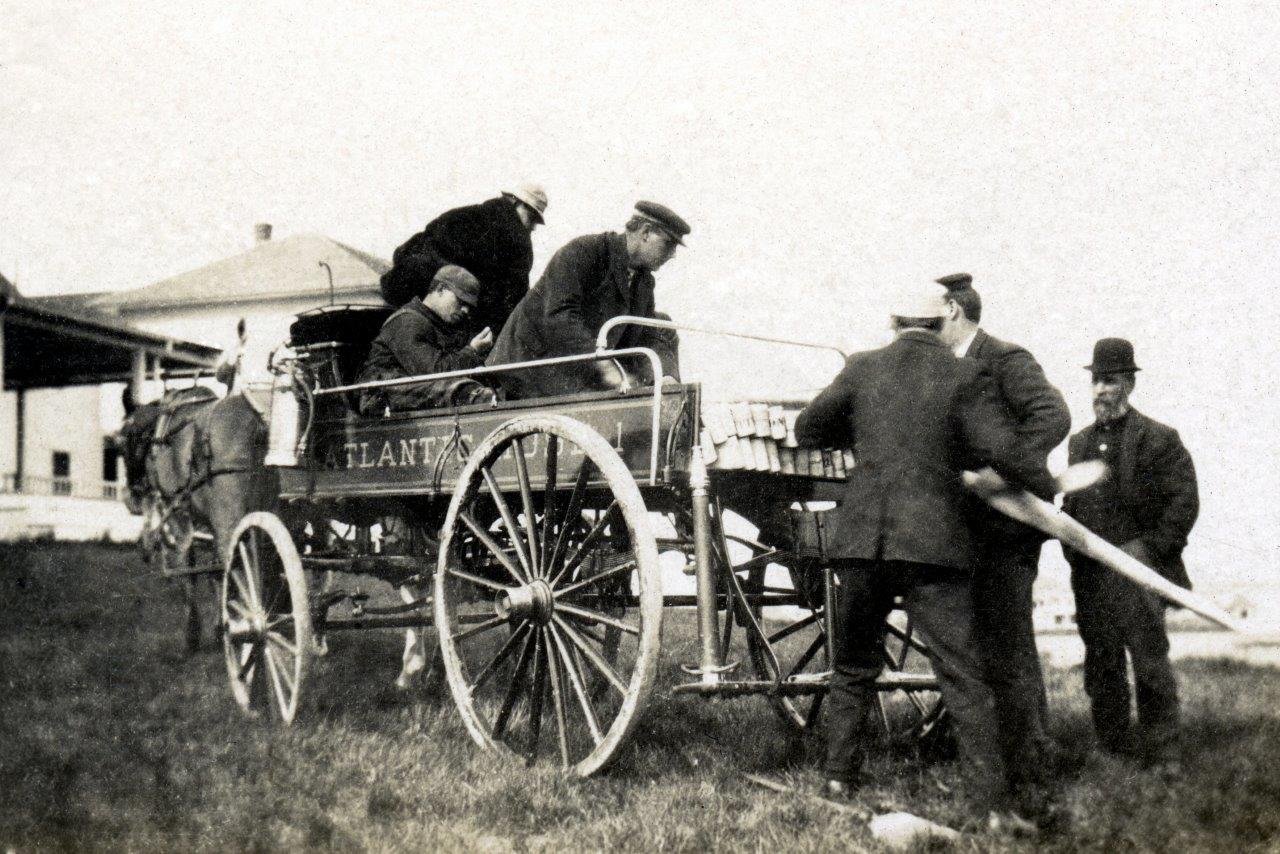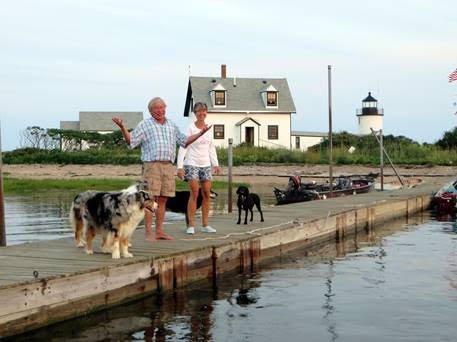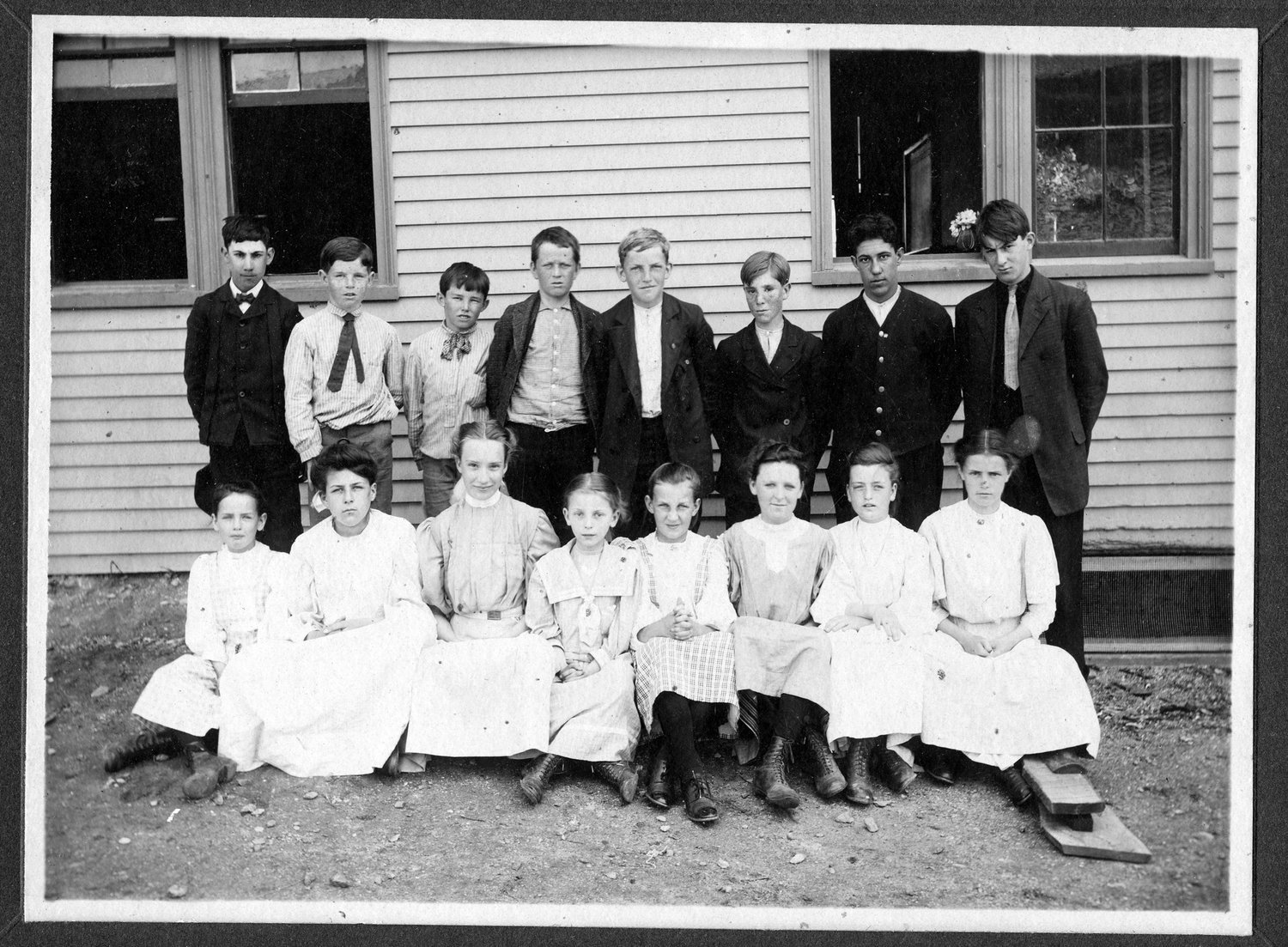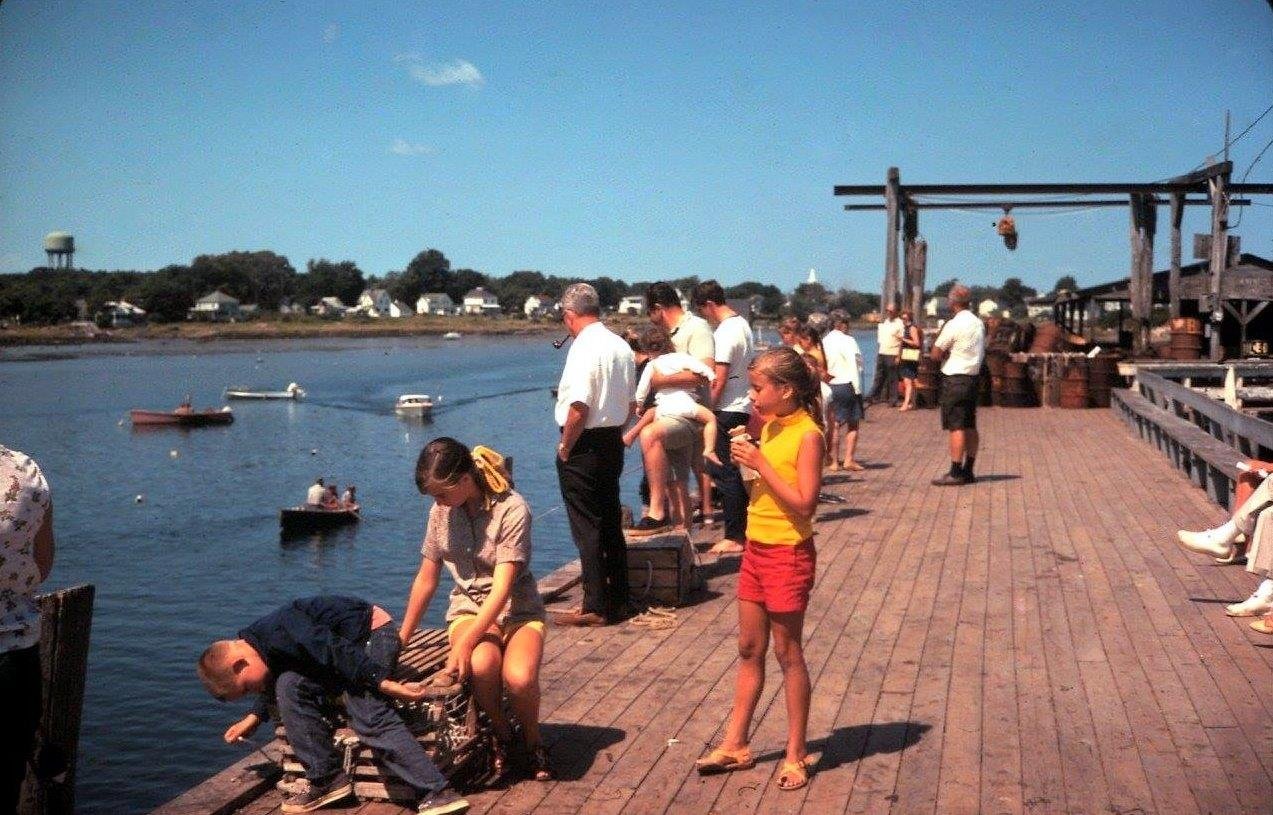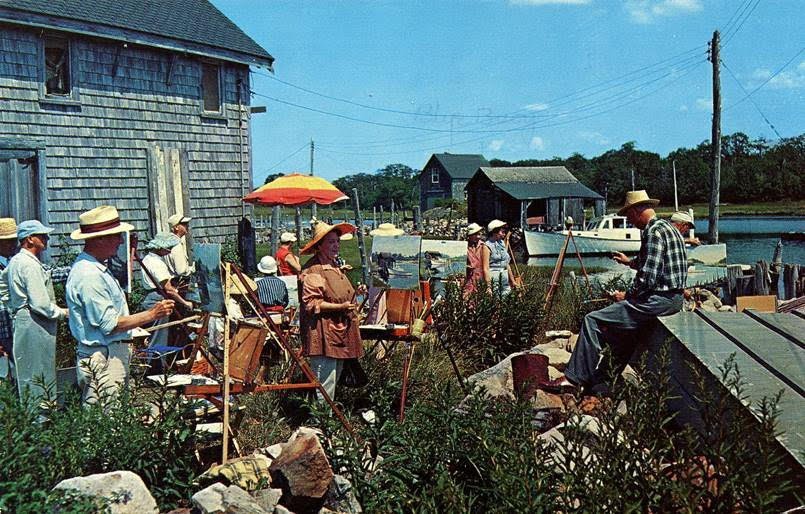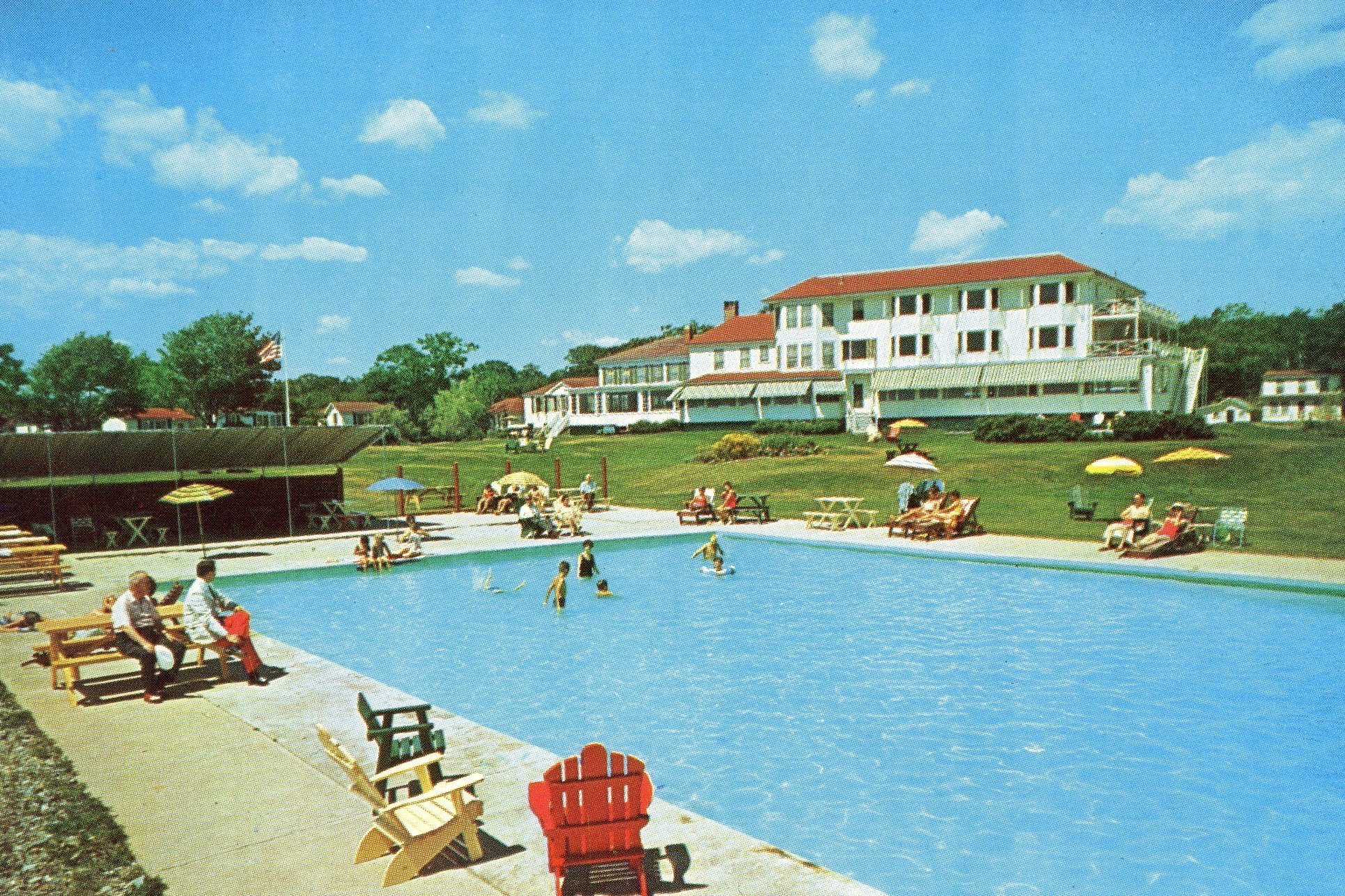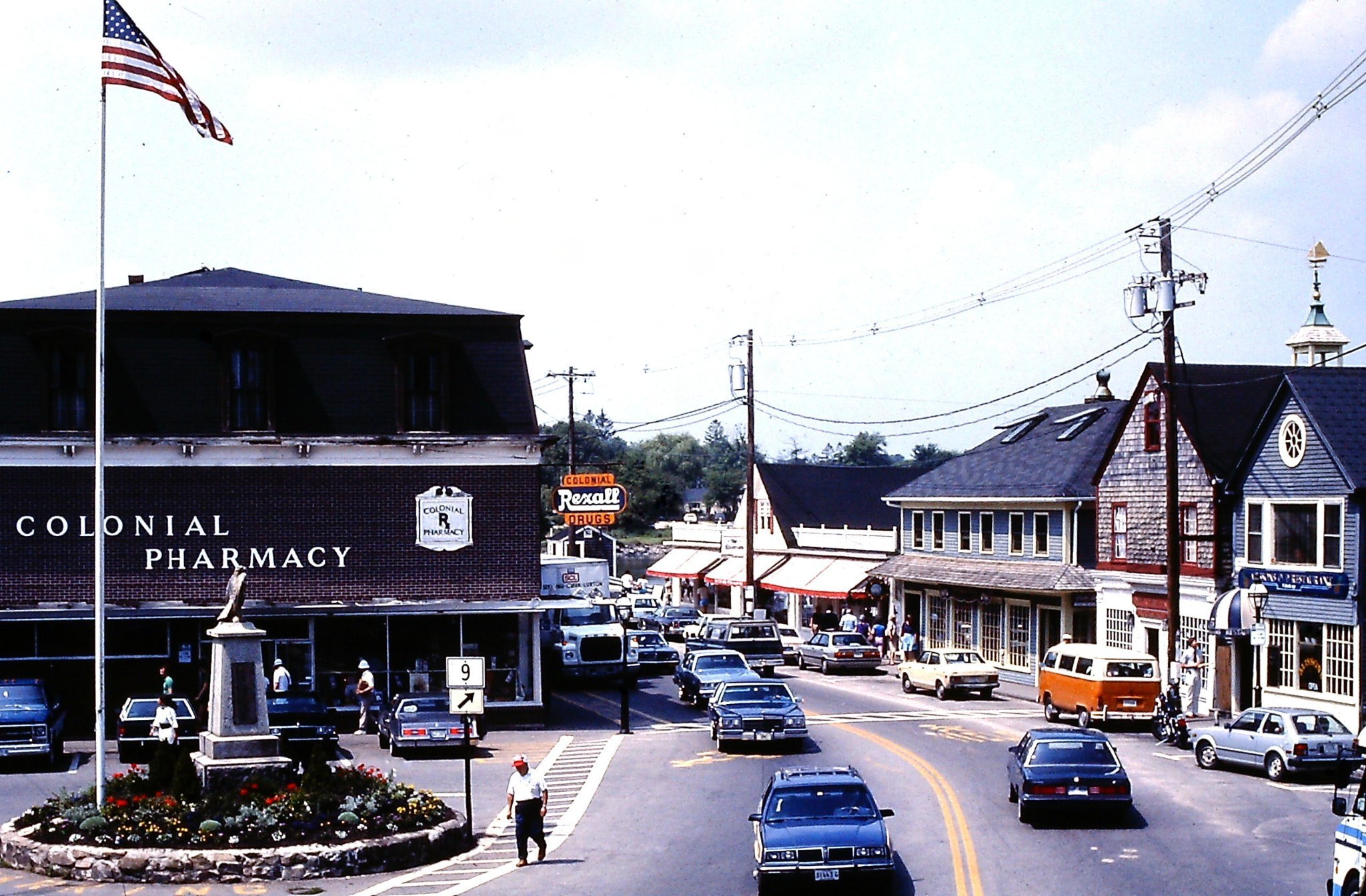Looking Back
DECEMBER 23 2025
"The beauty of a simply and tastefully decorated Christmas tree is very like unto the haunting beauty of the distant horizon at sunset. Insignificant details take on new dimensions as we see them blended together to form an object of beauty--our Symbol of Christmas. To me there is something else important about a Christmas tree. Its life is truly a golden link in our infinite chain of memories that mould our lives and our thinking. It is a fitting monument to our effort to serve our fellow man and with it our resolve to keep the Spirit of Christmas fresh and vital and growing. What finer memorial to annually remind us not to let life become a dumping ground of our dreams, but rather a challenge that we are expected to make those dreams come true. I cannot conceive how anyone--who has seen the look of adoration in the face of a child, gazing at a beautifully decorated Christmas tree--can ever say there is no Spirit in Christmas."
George W. Goodall
December 16 2025
"We did not have a Christmas tree until we were pretty grown up. Few people in the Cape did. The night before Christmas we each chose a special chair or stool in the living room over which we hung one of our long black stockings. Then we went to bed, leaving mother to be
Santa. We were awake a very long time, or so it seemed, but Christmas morning came early, about five o'clock, when we all got up. We had to wash up and eat some breakfast before we could have our gifts and then - what excitement! Mr. Frank Hutchins said he could hear us from his
house." Frances Landry
The Landry home on Paddy's Cove in 1986
Frances Landry
December 9 2025
"Boys will be boys, and so will a lot of middle-aged men." Kin Hubbard
Blasting the ice in Cape Porpoise cove to free lobster boats, 1961
December 2 2025
"Only one major road wound its way through the village of Cape Porpoise. Thus, motorists traveling on U.S. Route 9 invariably found themselves in the heart of the community at what we called the Square. Generally it was a rapid experience. A store on their right, a fire station on their left, one moment of inattention and they were gone. As a friend of mine once said, "By the time I had figured out that I was there, I wasn't!" But for those of us who grew up at the Cape, the Square was a special place, a town common, interwoven into the fabric of our daily lives.-- It was also the place where all the children of the Cape would gather to catch the school bus each morning." Tom Bradbury
The kids from the bus stop pushing Consolidated School teacher Charlene Elliott's car out of the snow. 1961
November 25 2025
I pass before me the main springs of my heritage:
The fruits of labors of countless generations who lived before me,
Without whom my own life would have no meaning;
The seers who saw visions and dreamed dreams;
The prophets who sensed a truth greater than the mind could grasp
And whose words would only find fulfillment
In the years which they would never see;
The workers whose sweat has watered the trees,
The leaves of which are for the healing of the nations;
The pilgrims who set their sails for lands beyond all horizons,
Whose courage made paths into new worlds and far off places;
The saviors whose blood was shed with a recklessness that only a dream
Could inspire and God could command.
For all this I make an act of Thanksgiving this day.
I linger over the meaning of my own life and the commitment
To which I give the loyalty of my heart and mind:
The little purposes in which I have shared my loves,
My desires, my gifts;
The restlessness which bottoms all I do with its stark insistence
That I have never done my best, I have never dared
To reach for the highest;
The big hope that never quite deserts me, that I and my kind
Will study war no more, that love and tenderness and all the
inner graces of Almighty affection will cover the life of the
children of God as the waters cover the sea.
All these and more than mind can think and heart can feel,
I make as my sacrament of Thanksgiving to Thee,
Our Father, in humbleness of mind and simplicity of heart.
A Prayer of Thanksgiving by Howard Thurman
Today, I make my Sacrament of Thanksgiving.
I begin with the simple things of my days:
Fresh air to breathe, Cool water to drink, The taste of food,
The protection of houses and clothes, The comforts of home.
For all these I make an act of Thanksgiving this day!
I bring to mind all the warmth of humankind that I have known:
My mother’s arms, The strength of my father,
The playmates of my childhood,
The wonderful stories brought to me from the lives
Of many who talked of days gone by when fairies
And giants and all kinds of magic held sway;
The tears I have shed, the tears I have seen;
The excitement of laughter and the twinkle in the
Eye with its reminder that life is good.
For all these I make an act of Thanksgiving this day
I finger one by one the messages of hope that awaited me at the crossroads:
The smile of approval from those who held in their hands the reins of my security;
The tightening of the grip in a simple handshake when I
Feared the step before me in darkness;
The whisper in my heart when the temptation was fiercest
And the claims of appetite were not to be denied;
The crucial word said, the simple sentence from an open
Page when my decision hung in the balance.
For all these I make an act of Thanksgiving this day.
A Mother & Playmates from a Generation Past
November 18 2025
“Gladys says, ‘Your education is never complete ‘til you’ve spent a season at the Shawmut Inn.’ Graduates of Shawmut Inn reciprocate Gladys’ enthusiasm and affection. Kirk Damborg who worked there fourteen years ago drops by Gladys’ house once in a while. Kirk worked three or four summers when Shawmut still had dorms for employees. Both of them can remember how Gladys used to wake up all the kids.
‘I’d g’ down the hall bangin’ on doors first one, second, then th’ other, ya know. Get ‘em all out a bed and you’d hear ‘em holler, ‘Here comes Glad,’ the first door I’d bang on.
‘Glad’s here,’ they’d say. ‘And it would go all over the dorm.’
‘Everybody’d be up, so the next door you’d hit, they’d say, ‘I’m awake.’
‘And I’d say, ‘You be sure ‘n stay that way.’
‘And so Mrs. Small (owner of the Shawmut) would say, ‘God, I never saw these kids. They all get outa bed on time lately, what struck ‘em?’
‘But nobody ever let on. They’d all be grinnin’ t’ themselves that I was the character that was runnin’ through the dorm every mornin’ on the way int’ work t’ wake ‘em all up.’”
November 11 2025
“Stilly Griffin finishes off one of his yarns with a laugh and a sly nod as he stands in the bait shed of Government Wharf in Kennebunkport. Before he goes on to the next story, Stilly sizes up his listeners to see if they get it—that’s part of the game. Stilly is the acknowledged but unofficial boss for the wharf because of his seniority here and because there probably is no one else the fishermen trust enough that they’ll let him call the shots. Today, in 1973, Stilly has been lobstering for 40 years. He first worked out of a small power dory with the help of his father, hauling 50 traps. Now he owns his second boat, the Lorraine E., named after his only daughter, and he has increased his stock to 230 traps. He has had this boat since 1954. It is 30 feet long and pretty near 10 feet wide. He just had his boat hauled up to have a new engine, new ribs, and a new floor put in.”
Herbert Baum III & Kristy Bunnel in “Salt Magazine” 1974 -Reprinted in Across Generations, 350 Years of Life in Kennebunkport”
November 4 2025
"How many choices, how much chance, how much error, how much hope have made that place and people that, in turn, made him? He does not know. He knows that some who might have left chose to stay, and that some who did leave chose to return, and he is one of them." Wendell Berry in "Remembering: A Novel (Port William)"
Henry Hutchin’s fish house on the Pier Road, C. 1898. L to R: Merton Hutchins, Pharaoh Perry, Dana Cluff, child & two men unknown, Henry Hutchins (sitting—father of Merton Hutchins), Clara Pinkham Stone (Tom Bradbury’s great-grandmother) with twin sons Carl & Earl (Tom Bradbury’s grandfather) Stone
Trick or Treaters at the Lyman & Louise Huff home in Cape Porpoise, 1955.
October 28 2025
“Some people gave out fruit on Halloween, apples mostly. Though most of these parents said they were doing it to promote our good health, we knew better and shunned them. On the other side of the spectrum were Seth and Ruth (Pinkham). Theirs was the gold standard of treats, not bite size, not miniature, not cheap rip-offs of traditional candies, but real, honest to goodness, full size candy bars brought directly from the shelf of Bradbury’s Market. We’d be limited to one apiece, but with so many relations and friends around the trading possibilities were endless, as was the admiration of the Pinkhams.” Tom Bradbury in “Our Harbor Home”
A Ship Being Built in the David Clark Shipyard.
David Clark (seated) & Capt. William Gould
October 21 2025
“Although during the 1870’s no less than three shipyards on the Kennebunk River were building three-masted schooners, square-riggers or both, by 1880 only one yard building anything larger than fishermen remained in the field. It was David Clark who contributed most to his final chapter of large vessel construction on the Kennebunk River though his contribution to the earlier era of square-rigged shipbuilding was by no means insignificant. His productive career embraced a period of a half century, all of it devoted to shipbuilding on the Kennebunk River. He contributed to its reputation as the birthplace of many fine square-riggers and for the last twenty years of his life, by building three=masted and four-masted schooners as well as tow-boats, fishermen and even a ferry, almost singlehandedly kept shipbuilding on the River alive, so far as large vessel construction is concerned. Of the many distinguished shipbuilders . . . it is David Clark who, as the outstanding local builder of schooners, is most closely associated with our story here.” Charles S. Morgan in “Shipbuilding on the Kennebunk, The Closing Chapter”
View from where the new Masonic Lodge would rise. A trolley passing in front of Benson's blacksmith shop.
oCTOBER 14 2025
“On October 26 (1929) at 1:00 p.m. Kennebunkport’s Masons had held a ceremony to lay the cornerstone of their new temple. The slab of redstone procured by Brother D. L. Ward from a quarry in Red Stone, New Hampshire, was the same stone used in the Masonic George Washington Memorial Temple in Virginia. A copper box was placed beneath the cornerstone. In the box was a copy of the history of the Arundel Lodge from June 26, 1854, to October 26, 1929, and lists of all members, all deaths, members on the actual date of the cornerstone ceremony, the names of the building committee and the grand officers, and photographs of seventeen members. From this celebratory day the way forward was going to be more challenging than it had been just two days earlier; as a result of the stock market crash, the Lodge would lose its bank loan.” Joyce Butler in “Kennebunkport, The Evolution of an American Town”
October 7 2025
“At the end of April 1929 the Arundel Lodge of Masons filed a plan at the Registry of Deeds in Alfred for what was to be the site on Temple Street beside the millpond where their new temple was to be built. It had been announced in the Kennebunk Star on March 22 that the Masons were going to raise a $12,000 building there. The regularly renewed lease they had held since 1878 on second-floor and third-floor rooms in Dock Square’s then new Brown Block (later the Colonial Pharmacy building) was due to expire in May, and they would not renew it again. The owners of the building had raised the rent to a point almost prohibitive and would do nothing about repairs. It was time for the Arundel Lodge, Kennebunkport’s most vital fraternal society, to put up their own building.” Joyce Butler in “Kennebunkport, The Evolution of an American Town”
Capt. Herb Thompson aboard the Elizabeth Nuna
September 30 2025
“No one who has driven along the shore of Gloucester harbor in Massachusetts has failed to notice one of the most famous memorials in New England, the statue of the Gloucester Fisherman. It is therefore interesting to record here that the fisherman who gave the sculptor his model and his inspiration was Capt. Herbert Thompson of this village at the wheel of his schooner in a northeast gale.” Melville C. Freeman in the “History of Cape Porpoise” 1955
Net Drying on Cape Porpoise Pier, Early 1918
September 23 2025
“As already indicted, the halcyon days of the Nunan fleet and its companions were in the early 1900’s, when there were sometimes five or six {schooners} in the harbor at once, ready to set sail for the ‘Banks’ or just returning from the delivery of their cargoes. As their numbers declined, the business of outfitting them grew less, naturally somewhat affecting the prosperity of the Cape, or at least altering its business. For a while the schooners were replaced in some degree by fast-sailing sloops, cheaper to own and easier to handle. They fished along the coast and marketed their product either in Kennebunkport or Portland. During this period a new type of fishing known as gill netting was introduced, in which Mr. Hartley Huff is said to have been a pioneer.” Melville C. Freeman in the “History of Cape Porpoise”
Martin Cain & family, Photos by Steve Bragdon in Salt Magazine
September 16 2025
“Two destructive storms launched 1978; a hurricane in January and a blizzard in February. The hurricane wreaked havoc in York County. The blizzard, a thirty-three -hour nor’easter that stalled over New England and would be called the “blizzard of the century,” brought near-hurricane-force winds and pounding seas and dropped almost twenty-seven inches of snow. People were trapped in their homes by fifteen-foot snowdrifts. Motorists were stranded on the Maine Turnpike. At Kennebunkport on Goat Island the wooden walkway between the keeper’s house and the lighthouse ‘folded like an accordion’ and was swept to sea just minutes after keeper Marty Cain walked through it. His family would be taken off the island by helicopter.” Joyce Butler in “Kennebunkport, the Evolution of an American Town”
The Breakwater Court, which became the Colony Hotel in 1947
September 9 2025
“Mr. Norton is now erecting a beautiful modern hotel on the site of the old Ocean Bluff hotel, destroyed by fire some years ago. The situation is one of the most commanding on the coast and the new hotel is to be called Breakwater Court. The building was begun last Fall and Mr. Norton had expected to operate both houses, his former success as a hotel proprietor and his great popularity with the summer people at that resort warranting a highly satisfactory management. Then, unexpectedly, came this offer from the gentlemen named (Edwin C. Nevins & Joseph E. Duffield), they having been guests at the Old Fort Inn with Mr. Norton as proprietor. The new hotel, Breakwater Court, will claim Mr. Norton’s time and he means to make it one of the most attractive summer houses on the Atlantic coast.” “newspaper article, c. 1913”
September 2 2025
“Transfer of Property—The sale of the Old Fort inn at Kennebunkport, owned and conducted for many years by Ruel W. Norton, marks a property transfer that is of interest to residents throughout York county and especially to summer visitors at the Port, representing nearly every state west of the Mississippi river. Ye Old Fort Inn was built 15 years ago and was one of the finest hotels on the Maine coast. From its opening the house has had a great patronage and its owner operated it very successfully until it was sold, the papers having been passed Dec. 29. The new proprietors are Edwin C. Nevins, the well known attorney of Philadelphia, and Joseph E. Duffield of Camden, N.J.” “Newspaper article, c, 1913” to be continued
Romanascho Hall Arrives at Goose Rocks Beach, 1951
August 26 2025
“Looking for a meeting place large enough to accommodate the whole Goose Rocks family at the same time led to one of the strangest stories of 1951, for that was the year the Romanascho Hall went to sea. The Goose Rocks Beach Association, formed in 1946, found a building that was just about right, over at Kennebunk Beach. This was a good ten miles away, as the cars go, and the road is hilly and winding and narrow. But the nearby Atlantic was broad and smooth, most of the time, and flat, at least by comparison. Furthermore, there were no overhead wires to interfere and no bridges to cross. Thus, a difficult undertaking, met with imagination, soon found the building afloat and on its way to a new foundation. Newsreel cameras and microphones followed its progress, and columns were written by reporters who had seldom been out on a story like this.” From the “300th Anniversary of Kennebunkport” Program, 1953
Watching the Water Sports, 1911
August 19 2025
“The Kennebunk River Club was founded and the Clubhouse built in 1888, though its real beginning was the ‘Lobster Boat and Canoe Club’ started almost ten years earlier. For three-quarters of a century this has been the boating and yachting center of ‘the Port.’ Here were held the famous ‘water sports; and here originated the wonderful ‘Carnival Night.’ As the river is the real ‘soul’ of Kennebunkport, so is the River Club the real center of summer live at ‘the Port.’” From the “300th Anniversary of Kennebunkport” Program, 1953
August 12 2025
The first major event that I was involved with (other than my wedding, which is a story for another day) took place during the American Bicentennial. The town had appointed me co-chairman of the town’s Bicentennial Committee, and I got it in my head that we should re-create the Battle of Cape Porpoise, an engagement that took place in August of 1782, when a British vessel entered Cape Porpoise harbor, determined to seize a schooner and sloop as prizes of war. Long story short, they didn’t, and the committee we put together wanted to re-enact the reason why. After much planning, on a Sunday afternoon in 1976, we were prepared to once again go to war. The Church on the Cape’s congregation dressed for the occasion that morning. Frank Handlen schooner “Salt Wind” became the English craft. We had riders on horseback to spread the alarm, cannons to drive back the enemy, drummers, worried wives, militia men from near and far who marched to the harbor to join in the battle, and a large crowd to watch it all. The morning of the event a thick fog covered the harbor. You couldn’t see the lobster boats on their moorings. I asked a lobsterman with radar if he would go to the Port to lead Frank Handlen to the Cape. “We have to call it off,” many said. “Too many are already here,” I replied, hiding my nerves. We decided to move the action as close to the pier as possible. It didn’t look good, but then, just before the action was set to take place, the fog lifted, not slowly, it just lifted, and the event went on as planned. Divine intervention. Tom Bradbury
The Langsford House
The Langsford House Crew (Charles M. Bradbury standing on far right) 1938
August 5 2025
“I remember that I worked in the old Langsford House during the summers of 1935-36 and 1937. The first year I washed dishes and peeled potatoes. The second year I washed pots and pans. The third year I was called assistant chef, which meant that I did a lot of work for just the title. We worked hard but it was a lot of fun. I received a dollar a day, from which was taken the price of any dishes that I broke.” Charles M. Bradbury in “One Life Out of Millions”
A Trolley Museum Photo by Tom Bohsen, 1959
July 29 2025
“The New England Electric Railway Historical Society, Inc., has at its Seashore Electric Railway on Biddeford Road one of the largest and finest collections of trolley cars in the world. The collection includes the open cars that made summer trolley rides a joy, closed cars of all ages and sizes, and a liberal assortment of freight and work cars. This museum was founded July 5, 1939, by a dozen railroad hobbyists, to preserve an open car from Saco. They leased a plot of land from Mrs. George Hill and moved the car to it. The present Society was incorporated in 1941, and in 1942 it bought the land from Mrs. Hill. From the “300th Anniversary of Kennebunkport” Program, 1953
George & Clayton Nunan
,Bertha on right c. 1960's
July 22 2025
“George Nunan’s (the founder of the Lobster Hut) son Clayton was also a lobsterman. Clayton married Bertha in 1956. Bertha began working at the Hut that summer. She would waitress while George and Clayton worked in the kitchen. George asked Bertha to make desserts for the restaurant. She made her apple pie, lemon meringue pie, and her famous blueberry pie. Bertha would continue to make these plus chocolate cream pie, brownies, and shortcake biscuits for the next 47 years. It is estimated that Bertha has made more than 80,000 pies for Nunan's with the majority being her blueberry pie.” From the Nunan’s Lobster Hut Website
Luman Fletcher & Ivory Cluff on Trott's Island in this Post Card
July 15 2025
“Mr. Fletcher (from Fletchers Market, now Bradbury Bros. Market in Cape Porpoise) will also be remembered as the man who had so many scenes of Cape Porpoise made into post cards. He was an avid post card collector and had cards from all over the country. He would tell all of his summer visitors to send him a card when they got home just so he could add one more location and scene to his collection. This interest in post cards also led to him having a photographer come each year to Cape Porpoise in order to take pictures.” Charles M. Bradbury in “One Life Out of Millions”
July 8 2025
“O’Hara Season Starts Weith Record Opening Class—Although Eliot O’Hara’s 1945 students totaled 160, he gave his opening ‘brush drill’ last year to only 21 students. Last Monday, however, 53 enthusiasts, with men, including fifteen Veterans, for the first time in the majority, took up their one-inch brushes. A Goose Rocks delegate was Janet Manter, who has specialized in art at Lasell Academy. From Augusta came the Supervisor of Art, Mrs. Edith M. Bononfant, who is a member of the Guidance Committee. . . A Children’s class will begin this week under the direction of Mr. Murray, who last year was flying a Navy Torpedo Bomber in the Pacific. Mr. & Mrs. Murray and their two small children are now living at the Wundorlich cottage. The Galleries, which are at the East end of the Beach, are open daily from 10 to 6 o’clock.” From “The Goose Rocks Beach Beachcomber” July 1, 1946
The Goose Rocks Beach July 4th Bike Parade, 2005
July 1 2025
“We have within our reach the promise of a renewed America. We can find meaning and reward by serving some purpose higher than ourselves, a shining purpose, the illumination of a Thousand Points of Light. And it is expressed by all who know the irresistible force of a child’s hand, of a friend who stands by you and stays there, a volunteer’s generous gesture, an idea that is simply right.” President George H. W. Bush, State of the Union Address, Jan. 29, 1991
A Fall Tour of the New Emmons Preserve, 1994
June 24 2025
"Habitat changes produced two areas below the house and near the river that have perfect cover and escape routes for does to give birth and they return for just that purpose year after year. Beavers have now tamed a half-mile of the Batson’s river, greatly improving the habitat for fish, ducks and other aquatic-seeking residents. Watching all the activity, my wife and I grew to appreciate and admire the intelligence of our wildlife neighbors.
Aldo Leopold said, ‘when we see land as a community to which we belong, we may begin to use it with love and respect.’ The land is still as my wife and I found it, a very active, wonderful wildlife community.'”
The Olde Grist Mill restaurant
June 17 2025
“The Olde Grist Mill restaurant marked its twenty-fifth anniversary in 1964. A Star article in June, which paid tribute to the milestone, reported that David Lombard, Arthur and Louise’s oldest son, had assumed responsibility for running the summer business and credited it as the oldest family-owned business in Kennebunkport. The article described the equipment—the old millstones, hopper, elevator cups, etc.—that had produced flour from ground corn, which was still intact, and the restaurant’s rustic, intimate atmosphere. The waitresses, ‘almost all local girls,’ at ‘Maine’s most unique eating place’ served up Indian pudding, clam chowder, lobster in various forms, steamer clams, a variety of fish, as well as chops, steaks and chicken.” Joyce Butler in “Kennebunkport, The Evolution of an American Town”
June 10 2025
“Barbara Pierce and Poppy Bush became engaged on the rocks along the Atlantic on a moonlit night. She was funny and pretty and frank; he was dashing and handsome and kind. It had been roughly a year and a half since Bush had asked to be introduced to her at the Greenwich Country Club Christmas dance. He was nineteen; she was eighteen.” Jon Meacham in “Destiny and Power, The American Odyssey of George Herbert Walker Bush”
Barbara Pierce Bush
June 3 2025
“She was, he said later, ‘a strikingly beautiful girl.’ It was the 1941 Christmas dance at the Greenwich Country Club; the band was playing Glen Miller numbers. Turning to a fellow guest named Jack Wozencraft, Poppy Bush asked if Wozencraft happened to know the girl in the pretty red-and-green holiday dress. He did: ‘That’s Barbara Pierce.’ Born in New York City in 1925, she had grown up in Rye and was in boarding school at Ashley Hall in Charleston, South Carolina. Her father, Marvin—a tall, kind man—was an executive at the McCall Corporation, a publishing company; , . . Barbara was the third of the couple’s four children.” Jon Meacham in “Destiny and Power, The American Odyssey of George Herbert Walker Bush
Memorial Day, 1930
May 27 2025
“The town’s Memorial Day observance in 1930 included special honors for its five surviving Civil War veterans: Charles F. Tarbox, George H. York, Warren Howard, J. W. Lake, and Justin M. Leavitt. Only Leavitt was living in Kennebunkport, at Cape Porpoise. Each was presented with a three-by-five-foot American flag on a nickel-plated pole with an eagle at the top. The flags were for street or yard display.” Joyce Butler in “Kennebunkport, The Evolution of an American Town”
Seth Pinkham our for an Early Spring Sail, 1955
May 20 2025
“Now and then, someone will tell me that although they like to look at old photos, they don’t give a hoot about local history—their own or anyone else’s. This attitude I cannot for the life of me understand. If you had a happy normal childhood, as most of us did, you can’t help but enjoy thinking about it. And invariably you also recollect people and events connected with it. I’ll admit there are things in my past I’d just as soon forget: such as the time the school bully knocked me fizzle end up because I tried to stop him from torturing a turtle, or the time the teacher blistered my hand with a leatherboard ruler sixteen inches long and a half-inch think because I was the only one laughing when she returned to the room and saw her caricatures drawn on the blackboard. But all in all, I think when folks approach middle age and begin to get a little bit tired of the high-speed, hectic age we live in, they have a tendency to look back to the days when life was a little slower, and taxes didn’t seem to come quite so hard. And usually at this stage of life we begin to show a little more interest in where our ancestors came from.” Kenneth Joy in "The Kennebunks, Out of the Past
Cape Porpoise before 1902 (Before the church steeple)
May 13 2025
“It is a pleasant, quiet village, with well-kept homes and summer estates, and a neat white church with pointed steeple whose clock marks the flow of time and tolls the passing hours. There are two hotels which have long and successfully catered to summer guests, and at the harbor is the large fleet of lobster boats and the busy pier. These are the material things seen by the casual visitor, but for those interested, there is more to know.’ Melville C. Freeman in the “History of Cape Porpoise, Maine” 1955
Along the Kennebunk River
may 6 2025
“OUR town of Arundel, at the mouth of the Arundel River in the Province of Maine, halfway between Portsmouth and Portland, is a small place; and those who live there think that nothing happens in it, ever. It is to escape from that dullness, no doubt, that so many of my townsmen have taken to the sea, knowing it and using it as landsmen know and use their front yards and back yards and farms and warehouses and highways.” Kenneth Roberts in “The Lively Lady”
The Cape Porpoise Trestle: Turn of the Century
April 28 2025
“While the building of the Mousam River Railroad solved the textile mills’ problems in receiving raw materials and shipping finished goods to market, it apparently was not the answer to another major problem—fuel. The mills consumed great quantities of coal and the cost of all-rail transportation of the thousands of tons used annually was deemed to be prohibitive. The least expensive method of shipping coal was by water—but Sanford was more than 20 miles from the Atlantic Ocean and the Mousam River was not a navigable stream. Once again the solution was found in the building of an electric railway—the Sanford & Cape Porpoise Railway. . . The proposed route, which had been surveyed in April, was to begin at the Hotel Sanford, at the terminus of the Mousam River Railroad, and extend through South Sanford, Alfred, Lyman, West Kennebunk and Kennebunk to Cape Porpoise in the town of Kennebunkport, a distance of about 21 miles. . .the harbor of which was to be dredged by the federal government. It was planned to bring coal in schooners and barges for transfer to Sanford via the new electric railway.” O.R. Cummings in “Atlantic Shore Trolleys”
The New Cape Porpoise Water Tower, 1950's
April 23 2025
“Huge Elevated Water Tank Nears Completion AT Cape Porpoise—Nov. 13—Iron and steel work on a 750,000 gallon elevated water tank, largest of its type in the state, is due for completion next week at the Crow Hill location of the huge new landmark. The record capacity amounts to 3,125 tons. Built by the Kennebunk, Kennebunkport and Wells Water District, the storage tower is expected to maintain more even pressure on the mains in this area, which has suffered at times of heavy use, according to Leander G. Smith, superintendent and treasurer. With another elevated tank at Biddeford Pool, it also will balance over the entire area served by the water district, one of the largest in the state. . . Although there are a number of elevated water towers in the state, the radial-cone type here is believed to be unique in style. It is 74 feet in diameter and stands about 140 feet. The steel supporting ‘legs’ are about 100 feet high. Located on the top of the 65-foot Crow Hill, the tower dominates the landscape and can be seen for a considerable distance from both land and sea. Now a brilliant orange, it will be painted forest green, probably in the spring, Smith said. Mains to the tower were started last June and the actual construction began in mid-July. The contractor is the Chicago Bridge and Iron co. Total cost of the project will be about $135,000.” From a 1954 Newspaper Article
The Kennebunk Port Custom House
April 15 2025
“In the year 1813, the merchants of Kennebunk conceived the idea of establishing a bank, and an act of incorporation was obtained in June 1813, authorizing a capital of $100,000. A brick building was erected at Kennebunkport for a cost of between three and four thousand dollars. This was known as The Kennebunk Bank. Joseph Moody was elected President and Henry Clark Cashier.
This bank never proved of any material benefit to the stockholders, and it closed in 1831. . . In 1815, the Custom House was removed by joseph Storer from Garden Street, in Kennebunk, to the second floor of the bank building in Kennebunkport. When the bank closed its doors, the government purchased the building for about eighteen hundred dollars, and The Custom House was removed to the lower floor of the building. This is the building purchased by Mr. & Mrs. Abbott Graves in 1921 to be The Louis T. Graves Memorial Library of Kennebunkport, in memory of their son.”
Kenneth Joy in The Kennebunks: Out of the Past
Downtown Kennebunk, C. 1870
April 8 2025
“Kennebunk about 1870. The Mousam House is shown left center, with part of Charles Webber’s gristmill showing left. The fence, far left, probably extends from Water Street to the present location of the I.O.O.F. block. (The Downing Block was not built when this photo was taken.”
The ‘warp’ mill, center, where the Kesslen Shoe office is now, was built about 1840 by John A. Lord (Kate’s father), and Oliver Littlefield and others operated it until 1854, then it was vacant until 1865, when it was enlarged and a bell was placed on the roof. This building was moved to Water Street in 1885.
The building at the corner of Main and Water Streets (east corner) is now on Storer Street almost directly across from Saywards. The next store is the present System Store, rebuilt by Charles Dresser after it was destroyed by fire in 1858. The next store is the site of the Fisher-James office supply store. This building, torn down, was built by Samuel Clark. Net to the Clark building is the old Blue Store which goes back probably to the Civil War. It is presently occupied by E.R. Warren Co. The next building shown was built in 1872 by Christopher Littlefield. The last store on the triangle was built in 1862 by John Getchell. These last two were removed after the fire of 1923, and a brick block was built by Curtis-Roberts (present Mathieu Jewelry).” Kenneth Joy in “The Kennebunks, Out of the Past” 1967
The Kennebunk Port Post Office
April 1 2025
“‘Kennebunkport’ Becomes Legal Town Name” April 1, “The U.S. Post Office here bowed to tradition today and changed the name of the town to fit the popular version. Since the Government established an office here in 1816 the town has been known as Kennebunk Port. Popular name for the town, however, has been Kennebunkport—a difference of one word. Today the cancelling machines were changed over and the bronze lettering on the building slipped into place. The orders came from Assistant Postmaster General N. R. Abrams. How the townspeople came by their one word version is still a mystery, local Postmaster Howard M. Martin says; but the fact is that they did and the name has officially been recognized by the U.S. Government.” Kennebunk Star, c. 1955
In Front of Miller's Drug Store, Dock Square, Kennebunkport
March 25 2025
“Quart Of Molasses His Start In Life-- Kennebunkport, Me. March 26—One of the interesting men of this town is Charles E. Miller, veteran newsdealer and formerly engaged in business as a druggist. He has been active in political life. He is a deacon in the Congregational church, and has never used tobacco or liquor.
Mr. Miller was born of poor parents, being one of 11 children. At the age of 10 his father gave him a quart of molasses, with which he made candy and peddled in the shipyard. He continued at this, adding apples and corn. Later he became a clerk for Andrew Luques. He had worked as a chore boy for James Smith, at Cape Porpoise for 15 ½ cents per day. In 1844 he was working for 37 ½ cents per day, doing odd jobs in connection with his little store. In 1851 he owned a store where the post office is now located, and in 1860 he bought the drug business of Seth E. Bryant. He was sexton of the Congregational church for 20 years.
As a newsdealer Mr. Miller has handled the Boston and Portland papers since 1840. He has seen the Globe circulation grow from a small number of papers into the hundreds.
Speaking of food prices, Mr. Miller has a diary commenced in 1838. Flour was then $5.25 a barrel, pork 6 ½ cents per pound, tea 50 cents, lard 9 cents, molasses 25 cents, coffee 8 cents a pound, sugar 10 cents a pound. . .” From an early newspaper articl
Warren Roberts, shoveling Cape Porpoise square, March 17, 1956--and probably wishing that he was in the tropics.
March 18 2025
"The hard soil and four months of snow make the inhabitants of the northern temperate zone wiser and abler than his fellow who enjoys the fixed smile of the tropics." Ralph Waldo Emerson
The Wandby on the Rocks by Walker's Point, March 9, 1921.
march 11 2025
“Freighter Stuck On Maine Rocks, Kennebunkport, Maine, March 9, 1921—(By Associated Press}The big freight steamship Wandby bound from Algiers for Portland, crashed on the rocks at Walker’s Point off this port in a heavy fog today. She had apparently mistaken her position as her captain thought he was at the mouth of the Kennebec river, according to radio dispatches. The steamer, whose master is Captain Simpson, cannot be saved according to persons familiar with the point where it struck. At low tide it is possible to walk within 30 feet of the rocks on which she was driven. . . . From a newspaper article of that day.
A Winter's Day in Cape Porpoise Harbor, Early 1900's
March 4 2025
Ah, much it may mean when the ropes are loosed,
For who can the day foretell;
And a smiling sky may frown anon,
While rings out the harbor bell.
The wind is light but a something warns
That Jeffrey’s too far may be;
Boone Island promises safer ground
When facing uncertainty.
The Fourteen Mile Ridge, a safer goal,
And the Perkins Ground invite;
The vessels that leave the pier today
With flurries of snow in sight.
Helen Ward Nunan in “Clouds of February”
February 25 2025
March 24, 1954 “The Old Timers of Kennebunkport, unsuccessful in their last outing against the Consolidated School, return to basketball is Friday night in a benefit game against the Skippers, another group of oldsters, who have declared they will provide energetic opposition. The Old Timers, garbed as hoboes, lost by one point in a whirlwind finish two weeks ago, and will try to play it straight without beach balls, ladders and unusual trappings. Friday’s double bill will have the Emerson School of Sanford playing the Consolidated School in the nightcap. The local grammar school boys will be trying for their eighth win in nine starts.” :Kennekbunk Star"
First Row, left to right, Coach Alonzo Towne, Ed Mayo, Lew Perry J. Nichols. Second Row, Roy Ward, Raymond Seaward, T. Ames, M Maling, Stan Meserve, Clifford Higgins, D. Walley, Gordon Hutchins & Eddie Bilderback. Third Row, Ken Higgens, Chaddie Brown, Norman Hoff, Sonny Hutchins, Herbie Baum, Booth Chick, Cecil Benson, Sr., & Arthur Hendrick. Absent when picture was taken: C. McCabe, E Graham. (George Stevens photo)
A Robert Dennis photo from 10 years ago.
February 18 2025
"The snow was endless, a heavy blanket on the outdoors; it had a way about it. A beauty." – Cambria Hebert, 'Whiteout'
Louise Clark & Lyman Huff Courting at the Clem Clark Boatyard, c. 1930's
February 11 2025
“I love you not only for what you are, but for what I am when I am with you. I love you not only for what you have made of yourself, but for what you are making of me. I love you for the part of me that you bring out.” – Elizabeth Barrett Browning
The Clem Clark Boatyard
February 4 2025
"Clem Clark had been building boats since 1921 when the first load of lumber was delivered to the Mill Lane yards, then owned by David Abner and George Clark. Clem's first hull was built for lobstering and sailed by Captain Merton Hutchins of Cape Porpoise, who named her the Flo B. Since then the builder's skillful hands turned out twenty-seven 24-foot and 30-foot lobster boats, ten of which are moored today in Cape Porpoise harbor." Kennebunk Star, 1959 in "Across Generations"
Clem & Delia Clark
Pinkham's House & Store in Cape Porpoise
W. H. Pinkham
January 28 2025
"Small town storekeepers often found themselves in the position of banker for their neighbors. Win Pinkham was no exception. When storms destroyed the fishing gear of local fishermen, they knew Mr. Pinkham would ‘set them up’ with new supplies and wait for money until they could get their feet financially. Mr. Pinkham also helped his neighbors by buying potatoes by the carload lot, in order to give them a better price. He filled his coal shed in April, when prices were lowest, encouraging his customers to reserve their next winter’s coal early so they could take advantage of the spring prices. Winfred Pinkham was a man of sterling worth: charitable and unostentatious in his charities and a friend to all. When he died in 1910 at the age of 51 in an accident on Crow Hill, it was a shock to the community.” Joyce Butler in “Across Generations, 350 years of life in Kennebunkport”
Lyman P. Huff at the Pier, c. 1960's
January 21 2025
KCT Looking Back: "Louise and Lyman Huff, owners of a guest house in Cape Porpoise, grew fond of their returning guests as they did of them. Each night the couple would sit at their kitchen table in the bay window of the house next door and keep an eye on the comings and goings of the Garrison House. When the last border had settled in for the evening, sometimes quite late, Lyman would go over and lock up. He would be up early the following morning to go lobstering. Before heading out he would go and open up the building.
One morning, two ladies had risen early to witness the beauty of the sunrise and were there to greet Lyman on his morning routine.
“Oh, Mr. Huff,” one said as she walked across the lawn. “Look at this glorious sunrise. Have you ever seen such a sight before?”
The lifetime lobsterman simply said with a twinkle in his eye, “Twice” and continued on his way." Tom Bradbury in "Our Harbor Home"
January 14 2025
"For if there are no signposts on the sea in storm, there are certain ones in calm, and the lobster bottoms were distributed in calm before any of us can remember, and the grounds my father fished were those his father fished before him and there were others before and before and before." Alistair MacLeod "The Boat" in "Island, The Complete Stories"
Lyman Huff, Sr., 1972
January 7 2025
“The Dombrowski’s said they are proud of what they have accomplished and what they have been a part of preserving for future residents of our community and visitors to enjoy. Passing on what they have learned to another generation is also a rewarding experience. Karen concluded, ‘The most important part of our job is to share the rich history with anyone who wants to learn about it and experience it. This place belongs to all of us, and that is why we are here. There has to be someone on the island to keep it safe and cared for, and to share it with anyone who comes out. This island has been our life, our love, our passion, and our mission to share, and we hope it stays open and welcoming for all to experience forever.’” Shelley Wigglesworth in “Trust in Our Town”
Scott & Karen Dombrowski c. 1995
Rose Seavey & Annie Milner leaving for Washington D.C. on Boston Globe trip, 1902
December 31 2024
“In whatever sense this year is a new year for you, may the moment find you eager and unafraid, ready to take it by the hand with joy and gratitude.” Howard Thurman
Photo by Tess Johnson
December 24 2024
"Silent night holy night
All is calm, all is bright."
Amy & Peter Landry, 1950's
The Landry Family Christmas Meal, c. 1970's
December 17,2024
A Cape Porpoise Christmas by Peter Landry:
The Christmases of my childhood were a moveable feast of great meals and family gatherings. It helped that we had a big family to work with — my father was one of nine Landry children and all but two of them lived most of their lives in Cape Porpoise and Kennebunkport. The clan began at the Cape, when my grandfather Alex contracted to have a house built at the head of Paddy Creek just after 1900 at the turn of the century. We didn’t know it as children, but the square house with its pointed roof looked just like the houses of Arichat, Nova Scotia, where Grandfather was born and where he lived before coming to the United States and a life at sea.
That house was central to the family gatherings of my memory. When my sister Amy and I were little, and Grandmother Olive was still alive, we went there for breakfast on Christmas morning for hearty meals of eggs and bacon, muffins and homemade breads. While breakfast was going on, my sister and I always got one gift from the spangly Christmas tree in the front “parlor” before heading home for our own family tree and presents.
The break was short, because we were due back at the Paddy Creek “homestead” for Christmas dinner in the afternoon. This was a command performance for the Landry’s, as all the siblings of the first generation came back with their families to honor grandmother. The table was expanded so much it filled the old dining room, and there were overflow “children’s tables” in the kitchen as well.
The house was rich in the smell of turkey roasted in the old, black cast iron stove, plus all the winter vegetables — onions, mashed potatoes, carrots, squash, turnip and more. My sister and I wondered why there weren’t more fresh green vegetables — maybe a salad, for goodness’ sake? — but we later learned that the menu was dictated by what our relatives had grown and stored in the cellar before there was wide refrigeration or supermarket selection.
After Grandmother died, the routine shifted a bit, with the breakfast moving from the homestead to the home of my parents Woodrow and Drusilla. To amuse my sister and I until breakfast was over, my mom cooked up a tradition of wrapping each item in our stockings and tagging them with clues. We couldn’t open the little packages, until we had guessed the item from the clue, and it kept us quiet and busy. As kids, we were annoyed that we couldn’t just dump out our stockings and enjoy the contents like some of our friends. But as we got older, we came to cherish the clues and carried on the tradition with our own families. We still write them to this day, often working late into Christmas Eve
Even with breakfast at our house, the Christmas dinner still remained at the homestead when we were older, carried on by my Aunt Fran and Uncle Justin who lived there. Each year, as the original siblings aged, there were more gray hairs and hearing aids, but always there was joy, laughter, and warm family ties.
Exiled to the children’s tables, we never appreciated how much a gift those gatherings were, until we moved away as adults and didn’t have them anymore. They remain the foundation for the best memories I have of Christmas in Cape Porpoise.
Repair Work at Cape Porpoise Pier, 1955
December 11 2024
"In 1954 two hurricanes, Carol in August and Edna in September, would inflict serious damage on the pier. At the 1955 town meeting the voters would be asked to appropriate funds for its repair or rebuilding and also once again to agree to a lease. The budget board recommended an appropriation of $10,000, providing that the town negotiate a five-year lease with an option of renewal for five years. The voters would go along with the recommendation. Because the selectmen arranged for 'resident labor' to do the work, the repairs would only cost $5,563, which left a substantial balance for future repairs." Joyce Butler in "Kennebunkport, The Evolution of an American Town"
Christmas Prelude, 1999
dECEMBER 3 2024
“The only real blind person at Christmas is he who has not Christmas in his heart.” Helen Keller
The Scale in Dock Square
nOVEMBER 26 2024
“There used to be a scale in Dock Square where local farmers brought their wagon loads of hay to be weighed. Originally the scale was in a high frame building with a steep flight of stairs from which the weigher looked down to a ‘steel yard beam, so counterpoised that a heavily loaded cart could be lifted.’ The scale was owned by Eliphalet Perkins who installed it sometime between 1775, when he built his Dock Square store, and 1823 when it is referred to by deed. Although called a hay scale, Eliphalet may also have used it to weigh the goods brought to his store by ships coming from the West Indies, and Eliphalet’s descendant, Captain Fordyce Perkins, used it in the 1890’s in conjunction with his coal business. The frame building was gone by then and the simpler weighing mechanism was enclosed in a wooden frame (or weigh box). This left room on the plot of land where the scale stood for a wooden water pump. After water mains were laid in the village, in 1896, the old wooden pump was replaced with an iron drinking fountain.” Joyce Butler in “A Kennebunkport Album”
The 1988 President Elect Bush Welcome Home
November 19 2024
“On Wednesday, November 23, 1988, the first test of the new era was held. The Bushes had arrived home and were going to speak on the River Green. All of the new players were in attendance. The national press corps was well represented. The local police force had been augmented by a large contingent of state troopers. The Kennebunk High School Band played Rudy Vallee’s ‘Maine Stein Song’ in eager anticipation of the new first family’s arrival. And the Secret Service had roped off the small River Green and were asking all who arrived to pass through the town’s first metal detector. This attempt failed, however, due in large part to the overwhelming popularity of the new president and first lady. In a town with a year-round population of under 4,400 people, over 3000 citizens made their way to the space in front of the Captain Lord Mansion. Though all tried to go through the proper security checks, the effort was soon abandoned. It didn’t really matter, the police concluded. The Bushes were among friends, and one metal detector just couldn’t handle them all. As the entourage arrived and the proper dignitaries made their way onto the newly assembled stage, State Representative H. Stedman Seavey, Jr. took the microphone and addressed the crowd. Tom Bradbury in “An Anchor to Windward: The Maine Connection”
The Richard J. Nunan, c. 1917
Ken Hutchins, 1974
November 12 2024
“’In the fall of the year (c. 1917), last trip swordfishin’ we always used to go to Cape Breton Island. We used to make port there, in Lewisburg. We would fish down there off Scattery Island. That was a great place to fish in them days. When we first come down there, the people were scared to death of swordfish. After we had been down there four or five years, why they started to catch’em. The swordfish are so close to the shore down there you can go in behind the big rocks with a dory and chase’em. We ironed’em.’ Seeing I looked perplexed, Ken (Hutchins) stopped to explain that ironing meant harpooning. He explained how it was done. ‘Well, the Captain, he had to stand out on the end of the bowsprit. We had a mast headman and he used to put the vessel on’em. You’d spear ‘em with a harpoon with a dart on one end of it and a keg on the other end. You put a rope right through the dart and attach it to the keg. When it hit the swordfish, it toggled in so it can’t pull out. He explained that there was a flag on the keg so that you could see where the swordfish was headed. ‘One day we saw 64 swordfish and caught 63 of’em. In the summers o’course, we’d get anywhere from 15 to 18. That day we caught the most. I saw Mary Pickford and Douglas Fairbanks. Probably you don’t remember them from the movies. They’d been over abroad on their honeymoon. When we came to Boston, we didn’t know they were aboard at the time. They came so close to us that day they were all waving their handkerchiefs at us when they came by.’” “Across Generations, 350 Years of Life in Kennebunkport”
Pinkham's Hall (now the Wright Gallery) Pier Road, Cape Porpoise
November 5 2024
“Dear Rufey, I read your letter and was very glad you had not forgotten me. We had a great time down here. After the election (Benjamin Harrison?) the folks went up to Crow Hill to meet the Port procession and then marched down to our house. The horses came first, quite a lot of them. Next came the drummers, 7 or 8 drums, torch lights and transparencies. Your Granny stood on the one corner of the house and I on the other corner with red lights. We had the new house all lighted up. Cufrold (?) and all the procession marched down in front of the house and turned around the trees. Your Granny and George went up to Pinkham’s Hall to supper and I kept house. I had to look out for lights. I let them have your saddle to use. I wish you had been here to ride Johnny. I think you could beat all of them. . . From Your Grand – Father” From a letter dated: “Cape Porpoise, Dec. 11th, 1888
Halloween in Cape Porpoise, 1956
October 29 2024
“The Halloween party was held, of course, at Atlantic Hall. It took us a while to get there, for as a grandfather clock I was lacking a certain mobility. Having to shuffle along took a lot of energy and made it kind of hot in the box. When we got to the base of the hall stairs, I didn’t know quite what to do. They should have sent me up the dumbwaiter, but that probably would have fit only a mantle size time piece. Instead, my mother took one arm and my sister the other and they kind of dragged me to the second story.” Tom Bradbury in “Our Harbor Home”
Ronnie Leach, Peter Eaton, George Hobbs, Ernest Julian & Donnie Brooks talking at the pier. c. 1969/70
October 23 2024
Of engines they always talked and talked,
How somehow they wouldn’t spark.
They cranked and cranked, and oiled and oiled
Ofttimes till after dark.
They couldn’t see what the trouble was
They’d tell you between the puffs;
But they felt more content whenever they’d spent
A half hour up to Cluff’s. (or talks at the pier in later years)
Helen Ward Nunan in “The Wayward Shrine”
The Clement Huff boat house and wharf at the end of what is now the Langsford Road, Vaughn's Island is in the distance.
October 15 2024
"In 1881 or 1882 Henry Lewis Langsford of Gloucester, Massachusetts, purchased the Clement Huff property, consisting of a dwelling, a large fish house and wharf, and a considerable acreage between the end of the highway and the back cove. This place had been owned and occupied by members of the Huff family for two hundred years. A Ferdinando Huff kept a public Inn there in 1682 (it was near the old King's Highway); and the first garrison house in town after the re-settlement in the early 1700's was probably the Huff Garrison." Melville C. Freeman in "History of Cape Porpoise.”
The Kittredge brothers inspect their new gift to the community, 1958
October 8 2024
"The foundation for the new Fire Station at Cape Porpoise is being constructed for the Kittredge Family. Upon completion the land and building will be turned over to the Atlantic Fireman's Educational Association by the Kittredges. The building will house the three trucks of the Fire Company in the Cape area. The building will afford better quarters for the apparatus and allow more space in the present Association building for all other Association and Fire Company activities. The new building is to be of brick construction and expected to be ready for occupancy around the first of the year. It is located on Main Street almost opposite the present station and next to the small park on the corner of Cape Square." "Kennebunk Star", October 17, 1958
Ethelred Hutchins' Sawmill on the Batson River
October 1 2024
"Eighteen thirty-five was a decisive year for the Methodists. They were ready at last to build their own chapel. Oliver Bourne made available a lot on Maine Street next to the Custom House, which he sold to his fellow parishioners just before the new building was dedicated. Construction of the modest one-story chapel with a belfry began on April 20. Some of the lumber came from Ethelred Hutchin's mill on the Batson's River. Joyce Butler in"Kennebunkport, The Evolution of an American Town"
If you had taken the time to stroll down Lover's Lane at Goose Rocks Beach in years past you would have come across these camps.
September 24 2024
"Art began his walk plenty early, giving himself time. It was not that he needed time, so early in the day, for anything in particular. He needed time only to take his time, to have time for the day and the weather, to walk in his own time, unhurried, with no reason not to stop and look around, or to take a 'long cut' off the knapped stone of the road and into the woods. In his own time, time asked nothing of him except to live in it and to keep alert, to watch, to see what he could see, the day and its light coming to him unburdened." Wendell Berry in "A Place in Time: Twenty Stories of the Port William Membership"
A Mom's Lunch in Cape Porpoise, 1956
September 17 2024
“One of the differences between his family and my own is the way we’ll listen to a story. It’s hard to finish more than a few sentences at a time when talking to his mother, who likes to interrupt either to accuse you of exaggerating—‘ Oh, now, that’s not true’—or to defend the person you’re talking about, someone, most often, she has never met. A stranger could hit me across the face with a sawed-off table leg, then kick me until my spinal column snapped, and still Joan would say, ‘Well, I’m sure he meant well.’” David Sedaris in “Calypso”
Ye Olde Grist Mill, Kennebunkport, 1879
September 10 2024
"Ye ancients built ye olde grist mill
To serve ye old-tyme needs,
When grists were carried on the backs
Of settlers or their steeds;
Women were known to carry them
In quaint old-fashioned ways,
Afoot, on horse or ox-back,
So common in those days. . .
Time brings amazing changes,
Perhaps it always will;
For thrilling stories of the past,
Consult Ye Olde Tyme Mill;
It tells of men and all they did
In all the long ago,
In words and scenes more picturesque
Than motion pictures show.
So give imagination ears,
And open wide her eyes,
Ye Olde Grist Mill in one brief hour
Will make you truly wise."
Rev. William Wood (pastor of Methodist churches in Kennebunkport & Kennebunk) in "Kennebunk and Vicinity In Poetry and Pictures" 1927
Inside Kennebunkport High School, Which Used to be Located on the Site of Today's Town Office.
September 3 2024
"The townspeople's usual strong support for education was reflected in the annual reports (c. 1930) of Superintendent of Schools Chester C. Tuttle and the new Kennebunkport High School Principal John C. Philbrook. Tuttle praised the students of the Kennebunks in general for their highly satisfactory performance in all subjects on the state's high school entrance examinations. Principal Philbrook described Kennebunkport high school students as above average in behavior and scholarship.Moreover, he had found the school excellently equipped with textbooks and supplies and the teachers to be superior." Joyce Butler in "Kennebunkport,The Evolution of an American Town"
Kennebunk Beach Between Then & Now
August 27 2024
“The (Kennebunk) Beach shore is very smooth and sandy with all the advantages possible for bathing. The privileges of the river and ocean are shared equally with the residents of the “Cape” (Cape Arundel), and all the evidences go to prove that before many years there will be two similar and not unequal summer-settlements, nestling beautifully by the sea on each side of the Kennebunk river. May that day soon come, and so far from the Cape’s losing prestige, influence or privilege from it, each place would share in the other’s prosperity, and gather new laurels by each other’s advancement in mutual exchange. When each side of the river shall have been at all adequately developed, then will Kennebunk and the ‘Port” become in size what they have long been in character, one of the leading and greatest watering places on the Atlantic coast.” Leading Business Men of Kennebunk and Vicinity” 1888
Captain John Smith
August 20 2024
“Its name (Cape Porpoise) is commonly supposed to date from the visit of Captain John Smith in 1614, who, it is said, found many porpoises off the harbor. But this must be mere myth for a map published in England four years before Smith’s voyage names the peninsular Cape Porpoise, and doubtless early explorers and fishermen came here prior to that period.” .” Herbert G. Jones in “The King’s Highway from Portland to Kittery” c. 1953
The Cape Porpoise Post Office (right), 1955
Ardell Maling & Florence Nunan
August 13 2024
"Behind the Captain’s Restaurant sat the local post office. It was housed in a small square building with a bay window on either side of the front door across from the Church on the Cape. Inside was a small lobby with two bar-covered half windows directly ahead, on either side of which was a wall of small, numbered boxes where the citizens of the community would come each day to pick up their mail. . . Miss Nunan and Mrs. Mailing were the ladies who tended the post office each day, one for each of the windows, and it was from there that they would greet the incoming fishermen, merchants, housewives and children. I would notice at times a bemused look pass between them as I approached the window. I assumed it to be a look of respect, for it was in those days that I had become a proud member of the Rocky and Bullwinkle Savings Bond Club. Along with my Rocky and Bullwinkle collectable certificate came a small booklet which contained spaces where stamps could be pasted. Those ten cent stamps could be purchased at the post office and when the booklet was full it could be turned in for a $25.00 savings bond which was, we were given to believe, the direct step to eventual success and happiness. In the short time I had been a member I had made frequent visits to see Miss Nunan and Mrs. Mailing as I cashed in redeemable bottles, ran errands for neighbors and sold baseball card doubles to gullible friends for the where-with-all to produce my bright future." Tom Bradbury in "Our Harbor Home"
Children at Play by Turbat's Creek in Years Past
August 6 2024
"Goodbye to the creek where the full tide flowed,
To the cool, deep well by the side of the road,
Where we lost the pails and with many a shout
We helped each other to draw them out.
Goodbye to the punt, every dory and boat
We watched on the glittering waves afloat.
Goodbye to the fisher-folks, quiet and grave,
The island, the light-house beyond the gray wave,
To the white spray that leaps, the wet periwinkle,
To the sun going down and the soft stars that twinkle,
Oh, deep as the heart of the woods is the sigh
That breathes in its wistful remembrance "Goodbye!'"
Edith Northin Hamer "Goodbye" in "Kennebunkport Poems" 1939
A KCT Treasure Hunt on Goose Rocks Beach, 1992
July 30 2024
"Buried somewhere in the sands at Goose Rocks Beach you could find a Roman Bronze Coin (complete with Certificate of Authenticity) of the Roman Emperor Constantine I, The Great. A.D. 307-337. Hand struck more than 1500 years ago,this enduring coin has been set in an 18 karat gold pendant of timeless beauty handmade by one of Kennebunkport's own hidden treasures; Fretz Goldsmiths. Treasure maps will be handed out to participants at 2 p.m. Registration fee: $10 (for family, couple or individual}"
The Shack, Cape Porpoise Pier
July 23 2024
"On the other end of the wharf Sam (Wildes) ran a lobster pound in the summer, selling lobsters by the pound to whoever wanted them. In between the two was a takeout selling hamburgers, hot dogs, french fries and similar delicacies in season. It was run by Hazel Wildes, Sam’s wife, and one of the most fun and gregarious persons in town. Hazel loved life. She loved to laugh, and everyone loved to laugh with her. She always seemed to have a story to tell as you placed or picked up your order." Tom Bradbury in "Our Harbor Home"
Game Day at the Kennebunk River Club
July 16 2024
"The Kennebunk River Club was founded in 1888 by members of the summer colony at Cape Arundel who shared an enthusiasm for boats of all kinds. During the spring of 1890 construction was begun on a clubhouse near the mouth of the river. It was to be the scene of dances, card parties, musical 'evenings', fairs, theater, dinners--all types of social events; but, the predominant interest of the Club's members was boats and related activities. The River Club sponsored the annual Carnival, a parade of decorated canoes, floats, and boats. During the years when most of the members owned a canoe, canoe races were held upriver in July. The Club sponsored yacht races and rowing contests, and in the 1890's tub races were held at the clubhouse in August." Joyce Butler in "A Kennebunkport Album"
Delighted Kids Having Fun at the 1972 Goose Rocks Beach Firemen's Fair
July 9 2024
“Kids like to believe that their parents will get lonely after they leave the house, but I think my mother actually did. She delighted in her children and always enjoyed talking to our friends and the people we were going out with. “Why don’t you invite Jeff to dinner?” I remember her asking (my sister) Gretchen one night in the late seventies. “Because we broke up a month ago and I’ve been in my room crying ever since?” “Well, he still needs to eat,” my mother said.” David Sedaris in “The Best of Me
July 2 2024
The town presented an altered appearance to returning vacationers (in 1942). In May lighting regulations for the New England seacoast.had been issued. All lights within three miles of the coastline had to be shaded, shielded, or dimmed. This included not only street lights but residential windows and porch lights, shop windows, and all advertising signs. Compliance, especially by stores, would be uneven. . . . One of the duties of air raid wardens was to patrol the streets and warn residents if their lights were showing." Joyce Butler in “Kennebunkport, The Evolution of an American Town”
Mrs. Clara Fairfield & Mrs. Lilian Carr
Sisters & Friends, Summer Fun in Cape Porpoise Cove
June 25 2024
"Remember me when this you see,
And always bear in mind
That I will ever be your friend,
True friends are hard to find."
Elisha Nunan to Clara Pinkham in her autograph book,
Cape Porpoise, Oct. 12, 1878
Kennebunk Beach, c. 1960's
June 18 2024
“Another thing I love about the beach is sitting in the sun, mainly for the lazy kind of talk it generates. A person can say anything with lotion on, and I’m more than willing to listen.” David Sedaris in “Calypso”
A Place That Knows a Thing or Two About French Fries, the Clam Shack, 1973
June 12 2024
“(Thomas)Jefferson, incidentally, was also a great adventurer with foods. Among his many other accomplishments, he was the first person in America to slice potatoes lengthwise and fry them. So as well as being the author of the Declaration of Independence, he was also the father of the American French Fry.” Bill Bryson, in “A Short History of Private Life”
June 4 2024
Down to ‘Lando Cleaves’
By Silar Perkins
In “On Shore Ballads,” 1937
Do you remember, old Chum of Mine,
When the air was tingling like bubbling wine,
And the scent of summer drifted by,
When hearts were light as clouds were high,
And the world just plum-jammed full of joy
To meet the steps of an eager boy,
How our mothers (God rest them today)
Would call us in from our romping play,
And hand us a lunch and we’d away
Down to ‘Lando Cleaves’?
Do you remember the rock-girt cove
Where the wheeling seagulls screamed and dove,
And the white surf rose in dizzy foam
From the seething deeps of its tossing home?
And the goodies within each battered box
There in the lee of the tumbled rocks!
We feasted as never a king may dine ---
Let him boast of his groaning board and wine ---
Give me the zest that was yours and mine,
Down to ‘Lando Cleaves’!
Langsford Road, Cape Porpoise, 5-23-1955
May 28 2024
The Old Home Town
By Silas Perkins
The old home town, the old home town wherever it may be,
Though lacking in a world renown, by hill or rolling sea,
By the great woods which stretch away, or on the grassy plain,
We long to visit it some day and tread its paths again.
To hear once more in peaceful hours the boom of sounding sea,
To wander ‘neath its shady bowers and each familiar tree.
To clasp the hand of friends of old, to walk the well-known ways,
Top leave pursuit of fickle gold, and as in other days,
The richer, purer boyhood days, to seek the quiet nook
Where the clear rippling waters play along the winding brook;
To dream again the dreams of youth when as a carefree boy
We thought of fame, of shining gold, of coming years of joy.
What if the dream is vanished now, and cares have left their trace
Upon the once smooth white of brow, upon the wrinkled face?
Today you are a boy once more, today the skies of blue,
The flowers in bloom with fragrance sweet, are smiling there for you.
Memorial Day in Cape Porpoise, 1950's
May 22 2024
"There were special occasions held in the Square too. We enjoyed attending the Memorial Day parade there. In honor of the occasion, we’d decorate our bikes with red, white, and blue crepe paper. If we were particularly inspired, we’d even use clothespins to attach baseball cards to the spokes. That created a very desirable motor sound when the wheels turned. The high school and junior high school bands, our veterans, who were greater in number after the war, the Boy Scouts and Girl Scouts and a host of fire trucks, which had also grown in number since the devastating Fire of 1947, would make their way down the street. We’d solemnly watch Alberta Redmond as she placed a Memorial Day wreath by the flagpole, listen to the mournful bugle playing taps, jump at the retort of the rifles as they fired a salute, wait an agonizing few seconds out of respect, and then dive beneath the feet of the soldiers to grab the empty shells." Tom Bradbury in "Our Harbor Home"
May 14 2024
“English speakers dread silence. We are all familiar with the uncomfortable feeling that overcomes us when a conversation palls. Studies have shown that when a pause reaches four seconds, one or more of the conversationalists will invariably blurt something—a fatuous comment on the weather, a startled cry of ‘Gosh, is that the time?’—rather than let the silence extend a fifth second.” Bill Bryson in “Mother Tongue: English and How it Got that Way
No Problem With Conversation Here: Abbott Graves,“The Country Store” Kennebunkport, 1897 In This Painting: Thomas Chisholm, Capt. Henry Bennett behind counter, Edward Hutchins, Frank Peabody, Hiram Towne with egg basket.
Pinkham’s Cove, c. 1900
May 7 2024
“It is now part of the nearby town of Kennebunkport but it must be difficult for one who visits the ‘Port’ with its hotels crowded by summer visitors and the general atmosphere of activity, to realize that the tranquil village of Cape Porpoise was once the original and only inhabited place in the neighborhood and was actually a flourishing community long before the present towns of Kennebunk and Kennebunkport were in existence.” .” Herbert G. Jones in “The King’s Highway from Portland to Kittery” c. 1953
May Celebrations in Kennebunk 1928
Girl With May Basket, c. 1930
April 30 2024
The first thing many people think of when they hear May Day is the Maypole. Originally, the Maypole was a living tree brought in from the woods with much merrymaking. Ancient Celts danced around the tree, praying for good crops and fertility. In the Middle Ages, all villages had Maypoles with towns competing to see who had the tallest Maypole. The other popular tradition associated with May Day is the making and delivering of May Baskets. People would leave a paper basket or cone with spring flowers and sweets on each other’s doorsteps, usually anonymously. This tradition was popular through the 19th and into the early 20th century, when people would hang the May Basket on the doors of friends, neighbors and loved ones.
Leanne Hayden, Brick Store Museum
An Early View of the Kennebunk River
April 23 2024
“I am glad, in late March or early April, when the first thunderheads of the year roll up over the long blue coast line of Wells, and the rumble of distant thunder comes to us from the towering masses of silver-edged clouds. We know then that within the week the last of the drifts and the slabs of ancient ice must vanish from the easterly side of ledges; that the salmon are in the rivers; that mayflowers will soon lie hid among their rough leaves at the edges of clearings; that before we know it the baby frogs will set up their pipings in the roadside pools.” Kenneth Roberts in “Arundel”
April 16 2024
“’It’s been a good life for me—I’ve really enjoyed meeting all the people,’ said Leighton Perry with a ready smile, recalling the past 21 years he has spent as the owner of the Texaco station on Ocean Avenue in Kennebunkport. During Perry’s tenure, which ended Friday, the price of regular gasoline went from a low of 22 cents to a high of $1.29 a gallon and supply went from bountiful plenty to scarcity, resulting in gasoline lines which stretched over the length of Ocean Avenue to the Colony Hotel in one direction and up Route 9 toward Cape Porpoise in another during the summer of 1979. Through it all, Perry has taken events in stride, never losing his sense of priority. Asked whether he had a celebration planned for Friday night, he replied good-naturedly, ‘No, tonight’s my bowling night; I don’t have time to fool around.’ To Perry’s left is Earl Beauchemin, who took over the operation of the station Saturday.” York County Coast Start, 5-11-1980
The “Golden Ball”, Launched 7-31-1890
April 9 2024
“there were eight shipyards between our house and the new toll bridge, all busily engaged in turning out the schooners, sloops and brigs that made our town of Arundel the busiest and the wealthiest in the province of Maine, next to Portland.” Kenneth Roberts in “The Lively Lady”
Charles Averill at the Olde Garrison House, c. 1930’s
April 2 2024
“Once was the time when Charles would haste
Down to the Shore Line Pier,
In quest of livers, if by chance
A vessel should appear.
Afraid was he some man had brought
Ere he the vessel struck;
But when he heard; ‘They’re all for you,’
He said, ‘That’s just my luck.’. . .
Our stalwart Oilman started home
But icy was the way;
His load of livers overturned
And on the beach rocks lay.
In sudden wrath he quickly threw
His pitchfork in the sea;
Then tossed his mittens after it—
An angry Charles was he.
With empty sled he reached his home,
But soon a step he heard;
There at the door a small by stood,
Nor for a moment stirred.
‘I’ve brought your livers up, he said,
‘And chased away a duck;
And here’s the mitten and the fork’-
Said Charles; ‘That’s just my luck.’. . . .
Tried was his patience oftentimes
For sometimes checks were slow;
The Postmaster could give no hope,
Where ’twas he didn’t know.
‘O what a life, O what a life.’
You’d often hear him say,
What was the use to work at all,
You couldn’t get your pay.’
‘The money’s gone,’ he said. ‘Tis gone,
The oil and money, too.
That’s just the luck I always have
In everything I do.
Just thirty dollars that was worth
If I’d a market struck.’
But when the check came forty-five
He said; ‘That’s just my luck.”
Helen Ward Nunan in ‘In Other Days”
March 26 2024
“Easter was almost always in April and came when it was really getting warm. Then we could shed winter underwear and don a few spring clothes. We always had an Easter concert at the church in which each one of us ‘spoke a piece’ or sang a song. My mother worked several weeks ahead that we might each wear something new on Easter: for the girls a dress, a coat, or a hat and for the boys a shirt, a jacket, new trousers or shoes. The significance of Easter was emphasized in our church classes, and to us it was the glorious awakening of new life and a beautiful season.” Francis Landry in her “thoughts about our family”
No Labor Saving Devices This Day: Shoveling Snow in Cape Porpoise Square, March 18, 1956
March 18 2024
“Soon (in the 1950’s) millions of people were caught in a spiral in which they worked harder and harder to buy labor-saving devices that they wouldn’t have needed if they hadn’t been working so hard in the first place.” Bill Bryson in “The Life and Times of the Thunderbolt Kid: A Memoir”
March 12 2024
“By good fortune the next day was one of those fine unseasonable March days especially made for the loosening of the bands of ice that bind our Maine fields and streams. There was a sweet, warm, smoky breeze out of the northwest, a breeze that flattened the ocean near to shore, so that the waves were small and weak, dropping wearily on the sand as though they lacked the strength to press onward to the high-tide mark.” Kenneth Roberts in “The Lively Lady”
The Causeway to Bickford Island, c. 1890’s
March 5 2024
“At Cape Porpoise (in 1816) John Bickford was excused from paying seven years of taxes for his faithful keeping up of the causeway and the road that crossed it. . . Cape Porpoise’s Pier Road from the bridge near Israel Stone’s house (Stone Haven Hill) to the wharf near Mr. Bickford’s store on the neck had become a town road in 1837.” Joyce Butler in “Kennebunkport, The Evolution of an American Town”
February 27,2024
“At town meeting in 1895 old issues remained, new issues were raised, and change was the constant. Money was spent to repair roads, bridges, and all twelve of the now town-owned schoolhouses. George Wildes was paid for providing food and lodging for 257 tramps. The Superintending School Committee was renamed the School Board, and Charles H. Pope and then George B. Carll were elected to the post of superintendent. The board of health dealt with four cases of typhoid (one fatal), four of scarlet fever, five of diphtheria, and one of measles. The selectmen tried to get the voters to agree to a new real estate valuation and failed.” Joyce Butler in “Kennebunkport, the Evolution of an American Town”
Benson’s Restaurant in Dock Square, c. 1935
February 20, 2024
“A favorite upriver excursion was a picnic at the Picnic Rocks, which always included a large box of homemade potato chips from Benson’s in Dock Square and chocolate brownies form the Women’s Exchange. There were also picnics at The Point (although poison ivy along the path to the rocky shore was a hazard) or at Cleaves Cove.” Joyce Butler in “Kennebunkport, The Evolution of an American Town”
Winthrop Baston at the Cape Porpoise Post Office
February 13, 2024
“During our growing-up years at the Cape, we got our mail at the Cape Porpoise post office, a small building opposite Arthur Nunan’s store (and the Church on the Cape), and still in existence though not in use at the present time. Frank Nunan was postmaster for many years, and later, Florence Nunan, Postmistress, until the building was closed and our post office made a branch of the Kennebunkport Post Office with a small office in Bradbury’s store. We all remember when the mail came on the trolley cars and was picked up by a little man named Winnie Baston, who carried the mail in a wheelbarrow from the trolley stop to the post office, and always boasted about his “government job”. Francis Landry in her “thoughts about our family”
Lyman & Louise Huff Skating on the Batson River, 1940’s
February 6, 2024
“Some winter nights we skated on the pond.
The milky way above, the ice its own
kind of milky mass below our blades.
Our hands and feet got cold, then colder.
Cloudy angels flew from our mouths.
Stars haloed everyone.
Sometimes we shouted and played red rover
or found an old shoe or a hockey puck
to play a cobbled game. Sometimes we circled
without a word, listening to the quiet
frosty darkness. Now and then
there was a thunderous crack from somewhere
far below and you couldn’t but quake
and wonder at the deep on either side.”
“Skating” by Kate Sorba
The Olde Grist Mill Restaurant in Winter, c. 1970’s
January 30, 2024
“Since 1751 the Perkins grist mill has been a landmark in Kennebunkport. It was built by Thomas Perkins and his sons, Eliphalet and Abner, on Long Creek, an estuary of the Kennebunk River. Eliphalet was the first miller. Eliphalet and Abner, and their brother James, who acquired part ownership of the mill, eventually deeded their shares to their sons, beginning a progression of ownership that kept the mill in the hands of their descendants for over 100 years. Fathers deed to sons, uncles to nephews, cousins to cousins, brother to brother until 1862 when a great-great-grandson of Eliphalet sold the mill to Simon Nowell Perkins, who was not a relation, but was descended from a Perkins family that owned land at Cape Porpoise since 1719. Simon and his son, James D. Perkins, and his grandson, James C., or ‘Mr. Jim’ as he was called by his neighbors, kept the mill in operation until 1939 when illness caused Mr. Jim to end its 188-year history as a functioning grist mill. In 1940 it was opened by his daughter and her husband as ‘The Olde Grist Mill,” a restaurant, which it still is today.” Joyce Butler in “A Kennebunkport Album” 1984
Cape Porpoise Harbor, 1955: Seth & Ruth Pinkham Family Photo
January 23, 2024
“We walk in the shadows of all those who came before. We witness daily the glorious reminders of what they accomplished and are respectful of the traditions that have been handed down. Though many generations have come and gone, the places that touched their lives remain, reminding us of each of their unique stories. The roads they walked, the fields they worked, the homes in which they lived and loved, the landscapes they held dear, the islands and beaches on which they played, all are now ours to enjoy. We are now the stewards of this beautiful place. What will be passed on to those who will follow is now in our hands.” Tom Bradbury
January 16, 2024
Whose woods these are I think I know.
His house is in the village though;
He will not see me stopping here
To watch his woods fill up with snow.
My little horse must think it queer
To stop without a farmhouse near
Between the woods and frozen lake
The darkest evening of the year.
He gives his harness bells a shake
To ask if there is some mistake.
The only other sound’s the sweep
Of easy wind and downy flake.
The woods are lovely, dark and deep,
But I have promises to keep,
And miles to go before I sleep,
And Miles to go before I sleep.
Robert Frost, “Stopping by Woods on a Snowy Evening” 1923
January 9, 2024
It was while living and working here in her hometown of Kennebunkport in the late 1960’s and early 1970’s, that she (Dorcas Zeiner) connected with a group of like-minded individuals who loved the natural beauty of the area and realized the benefits of preserving places which could be open for all to share and enjoy, always. She and a handful of others who shared this belief and passion began a grass roots effort to form what would become the Kennebunkport Conservation Trust. . . Close to a half century later, Dorcas is still involved, interested, and continues to support the Kennebunkport Conservation Trust. She said her favorite Trust property is Vaughn’s Island. ‘It will always be my favorite spot. Even before the Trust acquired the property, we had picnics and cook-outs there. It was a sea glass hot spot too.’” Shelley Wigglesworth in “Trust in our Town”
The Trolley Car Tracks in Snow Leading into Cape Porpoise Square
January 2, 2024
KCT Looking Back: “Coasting was a winter activity enjoyed by young and old at the Cape (Cape Porpoise). We small children in the family loved to slide on our hand-made sleds on the little hills around our house and in the lane and, when the top of the snow was frozen and glittery, we enjoyed the crust-sliding. As we got older we were allowed to slide on graveyard hill (on the Wildes District Road near Paddy’s Creek) with many other young folks—in the daytime, but not at night. The teen-age and young married folks went coasting on Crow Hill at night on long bobsleds. They could coast in the middle of the road, since there were no cars, the few cars in the Cape having been put up for the winter. They tell of coasting from the top of Crow Hill through the village to Pinkham’s store, and sometimes around the head of the cove. We younger folks could hear the shouting and laughing as we lay in bed on a cold winter’s night.” Francis Landry in her “thoughts about our family”
live Littlefield Landry (Fran’s mother) with 7 of her 9 children. There were many to Christmas shop for!
Her husband Alex worked on the fishing schooners. Cape Porpoise, 1911
December 19,2023
“We did not have a Christmas tree until we were pretty well grown up. Few people in the Cape (Cape Porpoise) did. The night before Christmas we each chose a special chair or stool in the living room over which we hung one of our long black stockings. Then we went to bed leaving mother to be Santa. We were awake a very long time, or so it seemed, but Christmas morning came early, about five o’clock, when we all got up. We had to wash up and eat some breakfast before we could have our gifts and then—what excitement! Mr. Frank Hutchins said he could hear us from his house.” Francis Landry in her “thoughts about our family”
Santa Arrives in Cape Porpoise, 1995
December 12, 2023
“People trooped in and out of the church parlor for the Holly Tea as they kept watch on the harbor. At three o’clock Santa was due to appear on a lobster boat to dispense candy to the kids.” Amy Frazier in “A Bundle of Miracles”
Flying Santa George Morgan on Goat Island, 1997
December 5, 2023
“'Twas the week before Christmas in 1929, float plane pilot Bill Wincapaw was lost at nightfall in a major Nor'easter. He was returning to his home base, the Rockland, Maine airport, after spending the day delivering supplies and mail in the Penobscot Bay area. He was flying in a white out, with freak winds. The plane was icing up and running low on fuel. Captain Wincapaw realized the seriousness of his predicament. Bringing his plane lower and lower he spotted through the murk a blinking light. Banking around and dropping even lower, he spotted the light of the Dyce Head Lighthouse at Castine, Maine. With this as his landmark, he was able to set a safe course for home using the beacons of six other lighthouses. Just before that Christmas, he loaded his plane with carefully wrapped gifts, and with his son, Bill Jr., retraced his route back to the Dyce Head Light, dropping the gifts onto the lawns of the lighthouse keepers who had saved his life. Thus a tradition (the Flying Santa) was born.” “Boothbay Register” Dec. 24, 1998
Jane Morgan
November 28, 2023
“The (Kennebunkport) playhouse was the brainchild of a man named Bob Currier who had graduated from the New England Conservatory and formed a repertory group in Newton, Massachusetts, called the Garrick Players. During a summer visit to Kennebunkport, Bob met Booth Tarkington, who at the time was already a Broadway playwright and Pulitzer Prize winner. Tarkington was impressed with young Currier and became a sponsor of the Garrick Players. . . During the 1950s, the playhouse also hosted distinguished singers in musical productions. One favorite singer of the day was Bob’s younger sister, Jane Morgan. Jane had established her singing career in Paris, Rome, London and other foreign cities. She first appeared in Kennebunkport with actor Russell Nype in Cole Porter’s Paris. It was a complete sellout! After that, Jane would return each season for at least one performance. By this time, the company had ceased to use the name Garrick Players. Kathleen Ostrander in “Remembering the Kennebunks”
Church on the Cape, Cape Porpoise: Happy Thanksgiving!
November 21, 2023
”Make us ready for the great adventure of living. We do not pray for immunity from risks; we pray for courage to face risks. We do not ask to be saved out of the world; we ask for strength to ally ourselves with the savior of the world. Among the immediate and incidental problems of personal life, give us the courage to face the facts which confront us without evasions or self-deceptions; to atone for our blunders, not by repentance only, but by braver determination and decision. Among the perplexities of daily life give us equanimity and self-control, that we may be not the slaves of circumstances but their masters, with the exhilaration of conflict and the joy of victory. Finally, we pray that the adventure of living may be guarded and sustained by an undefeated patience, willing to wait for a new light and to re-enforce duty by loyalty. We do not know what a day may bring forth. Arm us for the campaign of life with an unperturbed faith and an unconquered hope, that when the end of our adventure arrives, and we face the mystery that lies beyond, we may have some tranquil courage to meet the things which eye has not seen, nor ear heard, nor have entered into the heart of man; but which thou hast prepared for them that love thee.” Francis G. Peabody (1846 – 1936} “Courage”
The Lower Village Train Station: Turn of the Century
November 14, 2023
“You are standing in Kennebunk’s Lower Village looking over the railroad tracks and station, lower left, and across the Kennebunk River with two schooners tied up to a dock, to the village of Kennebunkport with the Congregational Church on the left side of the photo and the Parker House facing the harbor. The origin and date of the photo are unknown. It would have been taken after the Boston and Maine spur into the Lower Village in operation in 1883, and before cars and trucks replaced horsedrawn carts. It shows the transition from sea to land transportation underway at the end of the 19th century.”
Madge Baker in “Woven Together in York County Maine”
The Kennebunkport Home of Kenneth Roberts
November 7, 2023
“The best known of Roberts' nine novels are Arundel, Rabble in Arms, Oliver Wiswell, and Northwest Passage, which was made into a 1940 movie starring Spencer Tracy and Robert Young. "Kenneth Roberts established and maintained a reputation throughout his literary career as an author whose books were not only enjoyable to read but were models of historical writing and accuracy," writes Jack Bales. In 1957, one month before he died, Roberts was awarded a special Pulitzer Prize citation for having ‘long contributed to the creation of greater interest in our early American History.’'' An excerpt from “The Lively Lady by Kenneth Roberts
Trick or Treating at the Huffs, 1956
October 31, 2023
“Like all kids in the 1950’s, we had turned trick-or-treating into a science, blending our allotted time with a maximized yield. Doing that required many nuances. A lot of kids shared the same plans, so a hundred or more children might show up at any given front door. Would any of the key givers run out of goods early? Should we go counter clockwise to the traditional flow or should we not mess with past plans that worked? . . . We discussed all these things as well as the creativity of our costumes when we met in the Square just after sunset. There was no need for our parents to follow us, for everyone in town knew one another and was on guard for any irregularity or problem.”
Tom Bradbury in “Our Harbor Home”
A Benson Family Photo of the Spirit of St. Louis at Old Orchard Beach
October 24, 2023
“For Charles Lindbergh, July did not start at all well. Although he had nobly resisted the crasser of the commercial blandishments waved before him, he did agree to two moneymaking propositions and it was now time to make good on those. One was to undertake a three-month tour of America in the Spirit of St. Louis. The idea was to visit every one of the forty-eight states, partly to satisfy the national craving to see him in the flesh but also to help promote aviation. The Daniel Guggenheim Fund for the Promotion of Aeronautics would pay him $ 2,500 a week during the trip, a generous sum.”
Bill Bryson in “One Summer in America,1927”
The Kennebunkport Methodist Church, Next to the Graves Memorial Library
october 17, 2023
“Even as the new building (the new town hall in 1960) was opened for use, the demolition of another even older landmark, the 1835 Methodist church on Maine Street, began. The Legionnaires, who were the last to use the church and had sold it to the Ecklers, who lived next door, were building their new meeting hall at Cape Porpoise at the intersection of the Old Cape Road and Route 9.”
Joyce Butler in “Kennebunkport, The Evolution of an American Town”
Kennebunkport High School on Elm Street
October 10, 2023
“In 1960 one major challenge was met: the new municipal building on Elm Street was ready for occupancy in April, and the building committee was able to report that the Hendrick Construction Company had built it for less than $70,000 (rather than the high bid of another company of $120,000). Mrs. George Herbert Walker Sr. gave the health council $200 to buy a refrigerator, a table, and card files for their new quarters. Mrs. Kenneth Roberts gave the town three paintings by Anton Otto Fischer that had been created to illustrate The Lively Lady when it was serialized in the Saturday Evening Post in 1931 and paid to have them conserved and reframed before they were hung in the new town offices. The new municipal building had been built on the site of the 1889 schoolhouse that was called Kennebunkport High School, although it also housed grammar school classes.”
Joyce Butler in “Kennebunkport, the Evolution of an American Town”
The Governor Robie Aground off Timber Point, 1889
October 3, 2023
“At 3:50 a.m. on March 5, the day after town meeting (1889), the ship Governor Robie ran aground in a cove between Timber Island, off Goose Rocks Beach, and Biddeford’s Curtis Point. Her Searsport, Maine, shipmaster, Captain William Blanchard, had been returning her from a voyage to Japan and was headed for Portland with a cargo of rags for the Cumberland Paper Mill (S. D. Warren Mill, Westbrook). William Sinnett of Cape Porpoise was one of those who went in his dory to help get crew members and the captain’s family off the distressed vessel. During the day spectators flocked to Goose Rocks Beach. William E. Barry, who went to see the grounded vessel before she was finally floated free and towed by tugboats to Portland on March 15, made a series of sketches of the grounded vessel.”
Joyce Butler in “Kennebunkport, The Evolution of an American Town”
“”Winkie’s on the Langsford Road, Cape Porpoise, c. 1960’s
September 26, 2023
“While photographers and artists, charmed by the ‘typical fisherman’s shack’ Wink had created captured it on film and canvas, Wink passed his days savoring the ‘real’ town. He was befriended by local fishermen and became a supporter of the Fishermen’s Club where the men gathered to swap stories and play cards. He became a bit of a fisherman himself, lobstering 100 traps during the summer. But most of all he was a photographer, and sold his pictures to the Maine Fisherman and other publications with an interest in the Maine coast. Others took pictures of ‘The Periwinkle,; and sold them to postcard companies who printed them for the tourist trade, but Wink photographed the fishermen at work, their boats and gear, and the seagulls that followed them home and came to stand still at his own open window.”
Joyce Butler in “Winkie’s” in” Across Generations”
A Lucky Sunny Day at Mother’s Beach
September 19, 2023
“While at the beach we sensed more than ever that our lives were governed by luck. When we had it—when it was sunny—my sisters and I felt as if we were somehow personally responsible. We were a fortunate family, and therefore everyone around us was allowed to swim and dig in the sand. When it rained, we were unlucky, and stayed indoors to search our souls.”
David Sedaris in “The Best of Me”
State Representative Elmont Tyndale on Left & Game Warden Frank White on Right, Untangling Gear, 1960’s
September 12, 2023
"The lobsters are crawling again. That's the one good word flashing up and down the Maine coast in connection with Hurricane Carol. The big storm stirred up the bottom so much that even the laziest lobster is crawling around, trying to get his share of easy pickings. Plenty of them are crawling right into the fishermen's traps—or pots as they're known in Maine. . . . Tangled gear presents a major problem in resuming work. At Cape Porpoise the pier this week was covered with a small fountain of snarled lines, buoys and other gear. A fisherman would find a buoy that belonged to him and follow the lines back to untangle his gear from that of the other fishermen. The wind and sea tangled hundreds of separate lines into one mass of rope."
"The Boston Sunday Globe, September 12, 1954"
Bill & Anna Simon at the Wayfarer, c. 1959-60: Photos by Tom Boshen
September 5, 2023
“While Anna (Simon) cooked and served, Bill (her husband) always seemed to find the time to sit in the last seat at the bar. He’d listen quietly as we talked to one another, cigarette in hand. If ever our conversation seemed to lag he would pipe in, “Did I ever tell you about the time I met Johnny Weissmuller? He played Tarzan in the movies, you know.” We did know, and yes, we’d heard that story about a thousand times before. And if our sodas were just started, we’d hear it one time more. If we were nearly finished, we’d quickly slurp down what was left and say, “Sorry, we’d love to hear it but we’ve got to go!”
Tom Bradbury in “Our Harbor Home”
The Observation Tower on Stone Haven Hill c. 1944
August 29. 2023
“Due to the lack of enough other volunteers, she (Miss Albania Merrill) was manning it (the observation tower) ten to twenty hours a week. The situation improved after she held an aircraft recognition class in April, which was attended by forty-five potential new volunteers. The difficulty in manning the Fisher’s Lane observation post may have been due to the fact that the army had raised another post (a round, concrete tower) on Stone Haven Hill (c, 1943). Although army personnel were responsible for it, local volunteers were assigned there, too.”
Joyce Butler in “Kennebunkport: The Evolution of an American Town”
The 2009 Phillip H. Matthews Memorial Lobster Bake
A Trust in Our Children Field Trip to Stage Island with Tony Viehmann, 2009
August 22, 2023
“One event that was particularly successful was the Phil Matthews Memorial Lobster Bake, first held in 1995. Phil’s family and friends recognized his long-standing love of the islands of Cape Porpoise and sought to help protect them in his memory. The inaugural affair raised over $6,000, including a curious donation of $50 from the Internal Revenue Service Processing Division Office mailed on official letterhead. The gala featured great food, fireworks (donated by Steve Pelkey), music, and a priceless setting at the end of Langsford Road overlooking the islands. Boat rides to Goat Island Lighthouse were enjoyed. In 1996 the gathering was joined by none other than George H. W. Bush and Supreme Court Justice Clarence Thomas, who were kind enough to sign autographs. Noted bands, including bluesman James Montgomery from Detroit, Nashville’s Bonepony, and local favorite Straight Lace graced the stage. Subsequent lobster bake events were held for many years and generated tens of thousands of dollars for KCT.”
David Jourdan in “To Preserve Forever”
August 15, 2023
“We hope that the discoveries made on Trust properties will help students to open their eyes to those little things that are so often taken for granted. We hope that they will make them think, and wonder and ask questions. We hope that they will use their imaginations, be amazed by what has been and be inspired to what could be. We hope that they will discover that learning is not isolated to a time, a classroom or a single subject. It is lifelong, magically complex and all around us.”
Tom Bradbury
George & Bertha Wakefield & grandson George on Goat Island: Early 1900’s
August 8, 2023
"This was similar to the Lighthouse Service's regulations requiring keepers to respond to a tender's salute. If there was no salute from the light, the question was, ‘Where is the keeper? He should be there.’ Even a stag or one-man light was not supposed to be left alone, but the keeper had to go for supplies occasionally. On a family light, a member of the family was expected to take over; no extra money was paid for this service."
Connie Scovill Small in "The Lighthouse Keeper's Wife”
A Possible Acquaintance at Cape Porpoise Pier (with the trolley trestle to the pier in the background): Early 1900’s, Goodall Family Photo
August 1, 2023
“I feel so sorry for anyone who misses the experience of history, the horizons of history. We think little of those who, given the chance to travel, go nowhere. We deprecate provincialism. But it is possible to be as provincial in time as it is in space. Because you were born into this particular era doesn’t mean it has to be the limit of your experience. Move about in time, go places. Why restrict your circle of acquaintances to only those who occupy the same stage we call the present?”
David McCullough in “Brave Companions”
A Pleasing Place to Be
July 25, 2023
“I don’t think our father would have cared whether he took a vacation or not. Being away from home left him anxious and crabby, but our mother loved the ocean. She couldn’t swim, but enjoyed standing at the water’s edge with a pole in her hand. It wasn’t exactly what you’d call fishing, as she caught nothing and expressed neither hope nor disappointment in regard to her efforts. What she thought about while looking at the waves was a complete mystery, yet you could tell that these thoughts pleased her, and that she liked herself better while thinking them.”
David Sedaris in “The Best of Me”
Russell, Fred, Alma & Prentice Kittredge, Fire Chief Wilbur Bradbury and Guests at the Dedication of the Cape Porpoise Fire Station: July, 1959
July 18, 2023
“Formal dedication ceremonies Sunday marked the presentation of a new fire hall to the community of Cape Porpoise. The building was given to the Cape by the Kittredge family, who have long been generous contributors to their communities’ welfare. The new fire hall will house three engines. The space in the old fire hall (Atlantic Hall) will be used to expand the community library, which has occupied only a small portion of the ground floor. Some 500 K’Port residents filled the new building on a rainy afternoon and heard Cape Porpoise historian Melville Freeman give a brief address in which he thanked the Kittredge family and presented them with a watercolor painting of the new fire hall. The painting was done by Edward Mayo. Mr. Freeman remarked that the Kittredges had certainly lived up to the adage ‘Whatever is worth doing is worth doing well,’ and he pointed out that the family had also made it possible for K’Port to build their fine Communications Center—which only last week was instrumental in saving the life of a child. Emery Hutchins did the masonry work on the three-bay structure, and the carpentry was contracted for by Gilbert Fessenden. Fire Chief Wilbur Bradbury was in charge of the arrangements for the ceremonies. He was assisted by Mrs. Fred Severance and Mrs. Frank Craig. Also assisting were Mrs. Ruth Thurston, Mrs. Harold Smith, Mrs. Doris McKenna, Mrs. Eleanor Seavey, and Mrs. Mary Zecchini. A plaque bearing the Kittredge name and the date of the presentation will soon be affixed to the new building.”” Kennebunk Star” Friday, July 3, 1959
“SpiderDan” Goodwin from Cape Porpoise, Climbing the Sears Tower in Chicago, 1981
July 11, 2023
“With the race behind us it was time to move on to other types of fundraisers. A raffle seemed to be a good idea. In my teens I had babysat a few times for a young family who lived just down the street from our house. Though my style was ill defined and understated, my hope was that all the young people I came in contact with would one day climb to great heights. In Dan Goodwin’s case that desire went above and beyond and was to bear unexpected fruit. It was with some surprise that I read in the newspaper one day how “SpiderDan” had climbed the outside wall to the top of the Chicago Sears Tower. The good news for us was that he carried with him a few small American flags which he had symbolically planted at the top of the building just prior to being arrested. He was kind enough to give us two of these along with letters of authenticity which we placed in appropriately stylish red, white and blue frames and raffled off to our amazed townsfolk, just as Dan headed off to New York to test his skills on the World Trade Center.” Tom Bradbury in “Together We Can”
A Community Celebration at Goose Rocks Beach, July 4th, 2005
July 4, 2023
“By the luck of the draw, we have all found our way to this special place. We share a history that's rich and deep. We're surrounded by great beauty. And, we have each other. When combined together, these are the building blocks of community-- one that is appreciative, caring and supportive, one that we're proud to call home.” Tom Bradbury
June 27, 2023
“In the early days of the Cape Island campaign, we had decided that we should hold an old fashioned bean supper at Atlantic Hall in Cape Porpoise. Bean suppers on a Saturday night were an established part of the local culture, a time honored tradition that couldn’t fail. The old hall in the center of the square had probably hosted hundreds of such events over the years. . . . We had to find someone who was good around the kitchen and, in this case, the Beards were our first call. Dan and Sarah were beloved staples of the community, known for their volunteerism. Dan was the consummate fireman, and both of them were founders, as well as devoted members, of the local ambulance service. They were known and respected by all, which allowed them to call upon others for help. They immediately said that they would be happy to assist and we spent a bit of time going over the menu. Most things were givens, but there was some debate over hot dogs or ham. If it were hot dogs should they be red or brown? In the end we decided to cook them all in the interest of making everyone happy. They would ask Howie Noyes to help out. Sarah would call the ladies in town to see if they could bake a pie. We would probably need thirty or more of these, she figured, and so we were on our way.” Tom Bradbury in “Together We Can”
Photos: Our First Cape Island Bean Supper, c. 1982
June 20, 2023
“About a dozen or so Nantucket Indian class sailboats remained attached to the Kennebunk River Club. They were sleek wooden vessels, twenty-one feet in length with trim lines, a classic look and a proud racing history. It was true that all of them suffered in one way or another from the effects of age, but wouldn’t it be great, we thought, if we could convince their owners to participate in one more race. . . We contacted all of the owners and all agreed to take part. We were on our way. . .We knew it would be a great event. And since we were using Indian sailboats to promote the protection of Cape Island the name became obvious, “The Great Cape Island Indian Race”. . . We picked a date based on the tide, hoped the weather would cooperate and then began to discuss rules. . . “When the boats turn to enter the cross channel they’re going to collide,’ someone stated. ‘There is just no avoiding it.’ Several similar points and complications were offered and discussed until we finally decided on the easiest course of action. We would have no rules. Anything goes and the winner will be the first boat across the finish line. Such a decisive conclusion to a complicated matter made us all feel like Solomon. . . ‘What about the excitement factor?’ another person asked. Everyone wanted to know what he meant. The race was the excitement we thought. ‘Well,’ he explained, ‘a sailboat is quiet and if the wind is wrong this could also be very slow. Won’t that make the whole thing boring?’ He did have a point, and the answer we came up with was music. But since the race moved along a prescribed course then the music would have to move too. It had to be something lively and fun. Someone had a friend who knew a friend of a Portland jazz band that would be perfect. Their name even suggested the type of group we were looking for, The Fanfare Soufflé Over Easy National Sidewalk Band, with Strings. We would load them on to the back of the Goose Rocks Beach antique fire truck, decorate it with balloons and follow the race along the shore.”
Tom Bradbury in “Together We Can”
June 13, 2023
“There was a beautiful summer home overlooking Stage Harbor with a view of Cape Island, which happened to be owned by Tad’s father, Professor Sterling Dow II. Tad and Tom sat with him and convinced him of their cause (the KCT Purchase of Cape Island), and he agreed to work with his neighbors, the Pargellis family, to host a neighborhood cocktail party in the summer of 1981. The well-attended event was the first of many fundraisers.”
David Jourdan in “To Preserve Forever, The History of the Kennebunkport Conservation Trust”
June 6, 2023
“It was my good fortune to be present at the River Green Friday, Aug. 18, for the unveiling of Kennebunkport’s new landmark, the Frank Handlen sculpture ‘Our Forebears of the Coast.’ I am moved to express my appreciation publicly for this fine gift to all of us. How fortunate we are to share our life here in the Kennebunks with an artist of Frank Handlen’s ability and vision. How lucky we are that Catherine and John Rinaldi had the means and desire to fund this outstanding memorial to her husband and his father, Fred J. Rinaldi. My deepest thanks and heartiest congratulations to them and our friends and neighbors who made the sculpture and event possible. . . . . The event was one of the fine moments in small-town life. To be there with so many friends and acquaintances of longstanding to witness the presentation was exhilarating. Those of us who value the Kennebunks can take comfort in the wholesome public manifestation of the life we enjoy here. Those who choose to follow us as residents of these towns as well as visitors here will gain from ‘Our Forebears of The Coast’ not only as awareness of the history of this place, but an appreciation for the community that supported and valued its creation.”
Joyce Butler in the York County Coast Star, August, 1995
The Eagle Wing Leaving the Kennebunk River
May 30, 2023
“Our river is small—so small that we build our vessels parallel to its channel and slide them in sideways. Yet it’s large enough to accommodate a brig of two hundred tons, which is as big as a man needs, no matter to what part of the world he wishes to sail.” Kenneth Roberts in “Rabble in Arms”
Cape Porpoise Square, 1962, Remembering Those That Mattered
May 23, 2023
"When people who mattered to me died I began to feel that something was required of me. Sometimes something would be required that I could do, and I did it. Sometimes when I didn't know what was required, I still felt the requirement. Whatever I did never felt like enough."
Wendell Berry in "A Place in Time: Twenty Stories of the Port William Membership"
Goose Rocks Beach in Earlier Days
May 16, 2023
“A trend in this direction (great generosity) started in the 1980’s with the donation of a number of parcels along the beautiful Goose Rocks Beach. The two-mile strip of sand and surf had been enjoyed by visitors and residents for many decades, but all of it was owned by private landholders. This began to change when Desmond and Joan O’Hara donated three Sand Point lots the summer of 1981, followed soon by beach lots from C. Bader and Marjorie Brouilette, and Clare I. Starr. The following year several beach lots were contributed, including from Gilbert and Vivian Fessenden, Anna Larkin, and Mary McLean. In 1983 Suzanne Newell Lofredo joined the ranks of beach lot donors, as did William and Cynthia Nixon in 1985. Board member Kathy Kubiak encouraged the Trust to pursue these properties and worked hard to keep the beach accessible to the public. These nine properties amounted to a modest acre and a half, but they were the foundation of a stretch of beach of inestimable value to the community.”
David Jourdan in “To Preserve Forever – The History of the Kennebunkport Conservation Trust
Remembering Kennebunkport’s Past Along the Banks of the Kennebunk River
May 9, 2023
“Only students of forgotten things would guess the meaning of the ponderous and barnacled posts that still remain, here and there along the banks, all the way from the harbor mouth to a jumble of half-submerged granite above the village. Long useless, these big posts and stones are what is left of the great days of Mirthful Haven (Kennebunkport); though, of the busy shipyards they served, there is now no token at all, and pine thickets have grown high upon the ground where the old square-riggers were launched above the granite locks to be warped by those sturdy posts down to the sea.”
Booth Tarkington in “Mirthful Haven” 1930
Out of the Past on Main Street, Kennebunk
May 2, 2023
“The photo opposite will show you youngsters how an electric car looked coming down Main Street, Kennebunk. It will also show you something that will never happen again, Main Street without a single auto or horse in sight. The date had to be between the big fire of 1903 and the time Kent Cleaner’s building was erected in 1912 by Nat Thompson.”
Kenneth Joy in “The Kennebunks - Out of the Past” 1967
The Church on the Cape, Cape Porpoise c. 1940’s
April 25, 2023
“One of the remarkable features of this community (Cape Porpoise) has been the unusual unity and self-sacrifice of its members in any common public project. Recently for example, a new heating plant was needed for the church. A modern plant was installed at considerable cost and paid for within a year, not through large gifts, but through the unselfish and concerted efforts of many. Although in name and in supervision the church is Methodist, being under the general direction of the General Conference, it is a community church, in which all are welcome to have a part regardless of creedal difference—a genuine Christian organization.”
Melville C. Freeman in the “History of Cape Porpoise” 1955
The Tradition of a Benson Family Picnic
April 18, 2023
“It was the goal of the Trust, Tad (Dow) taught me, to recognize those pieces of property which most clearly contributed to the feel of the community and set them aside for all to enjoy. By so doing, it was reasoned, even as the town grew and evolved, its essential character would remain the same. Natives would not be shut out from their traditional places of recreation, newcomers could continue to enjoy those special attributes that had brought them here, businessmen would not lose the major asset upon which our tourist based economy was built and those here for but a short time would be able to continue to appreciate the beauty for which we were known.”
Tom Bradbury in “Together We Can”
April 11. 2023
“Soon, a first draft was written of the Articles of Agreement of a new organization to be called the Kennebunkport Conservation Association. The draft stated purpose was…’the acquisition of primarily undeveloped land within the county of York, with particular emphasis on islands, coastal land, Marsh, and tidal areas, to be held forever in its natural state…’ In the application to form a corporation the word ‘Association’ was changed to ‘Trust.’ It took some time for Tad (Dow) and his busy cohorts to hold a formal organizational meeting but plans continued to gel over the following year. The entity was finally created in March of 1973, with an official date of incorporation of April 13, 1973. The Kennebunkport Conservation Trust (KCT) was born.”
David Jourdan in “To Preserve Forever”
April 4, 2023
“Well,” said Sandy Brook as he leaned back in his living room chair and looked around at those of us who had gathered at his home to discuss how we were to come up with the funds necessary to purchase the island (Cape Island for $100,000 c. 1980) we had just agreed to buy. “If we had some bacon we could have some bacon and eggs,” he said, pausing purposefully before adding, “if we had some eggs.” That was indeed the position we were in. At the moment, the organization didn’t have enough money on hand to pay the postage of a very small mailing, no less the funds needed to print brochures, envelopes or any of the other initial costs of a fundraising campaign. Then, of course, there was the $20,000 first payment that was due just a few short weeks away. The thought of it all made me shiver.
We did have some things working in our favor. Tad Dow had been through it all before, and had worked with others to purchase and preserve nearby Vaughn’s Island ten years earlier. He volunteered to talk to some of those past supporters to see if he could get enough cash on hand to get us going. And Sandy Brook was the owner and editor of the “York County Coast Star,” a well-respected weekly newspaper that was read by most everyone in the area. He was deeply committed to the cause. Just how deeply was witnessed further in our conversation. Upon finding out the dire straits of our bank balance and the immediacy of our needs, he offered to loan the Trust the initial payment. In addition, he would give us strong editorial support along with reasonable coverage of our cause and events. A collective sigh of relief could be heard in the room. Such generosity had been unexpected but was incredibly welcome. The campaign would be difficult, but there was reason to hope.” Tom Bradbury in “Together We Can”
March 28, 2023
"While we (all volunteers) were raising money for the Emmons Preserve, Trott’s Island became available for the bargain sale price of $260,000. It was risky, but the KCT board voted to try and by that property too. The problem was where would the money come from? “I called up the Portland Press Herald and asked the reporter who answered the call to meet me by the harbor in the morning. He agreed to do so and the following day we stood at the end of the town pier looking over to Trott's. ‘Now here's the plan that I'd appreciate you helping me with,’ I said. ‘We have a once in a lifetime opportunity to forever preserve this island and with it the beauty of the harbor, but there's a problem. In order to do so we need to raise $60,000 in the next two weeks. I'm not very good at asking for money,’ I continued, ‘so I'm hoping that twelve individuals within the community will step forward, give me a call, and be willing to donate $5,000 each.’ The reporter, who had been scribbling notes onto a tiny pad of paper, stopped writing and looked up at me skeptically.
"Is that your plan?" he asked.
"That's my plan," I replied with far more confidence then I felt.
He shrugged his shoulders and continued writing. "O.k.," he said, "it's up to you." After asking for a few more details about the Trust and the island he snapped a picture and then wished me good luck.
When I arrived at work early the next morning one of my fellow workers was quick to greet me. "President Bush (41) just called looking for you," he said excitedly. "I didn't believe it was him at first, but anyway, he said that he was calling from the car on the way to the airport. He said that he saw the article in the paper and wanted to know if he could be a contributor, and something about he'd put a check in the mail." We were off to a good start.
A short time later another local resident came into the store. "I just read the article," he said, "and I can't afford to give you $5000 but I can afford to give you $500. Would that help?" I assured him that it certainly would and thanked him for his generosity. Several more people called during the day, some offering large gifts and some small. By the end of the second week, fourteen people had pledged $5000 and many more had contributed lesser sums. The down payment was made, the island put under contract and within a year it was paid off. With the courage to try, the willingness to work and a public that cared, another piece of the conservation puzzle had been put into place.”
Tom Bradbury in “Together We Can”
Emmons Preserve Open House, 1994
March 21, 2023
“Steve (Emmons) was encouraged by the progress at KCT and Tom’s (Bradbury) forward thinking about education, endowments, and community engagement. But his love of place was shaken in October 1993 when he learned that a ten lot subdivision was being proposed on the 38 wonderful acres that bordered his land along the Batson River. His desire of having the land which abutted the Gravely Brook Road kept forever preserved for nature and learning was in jeopardy. When that deal fell through, he quickly came to the Trust with a proposal. If KCT would buy the Chick parcel, he would donate his 108 acres. For KCT, it was a dream come true. A price on the neighboring land was negotiated, and in August of 1994 the Trust finally closed on a $214,000 deal on the property.”
David Jourdan in “To Preserve Forever”
A Snow Day in Cape Porpoise: Turn of the Century
March 13, 2023
I Like Snow
By Silas H. Perkins
(1927)
I’m a most peculiar guy,
Tell you why:
I like snow.
Like the winter’s storm,
When I’m snug and warm,
As you know.
Don’t care what the people say,
It’s my way,
Let it blow!
Others may bemoan,
Whine and pine and groan;
I like snow.
Like it when it fills the air
Everywhere,
Falling slow,
Covering the ground,
Soft without a sound,
Gentle snow.
Like the song that winter sings
When it brings
Winds that blow.
Like it when it shrieks
“Look out ears and cheeks!
I like snow!”
Let the poor deluded leave,
I don’t grieve;
Let them go
Where the winter’s hot.
Here I cast my lot,
I like snow
Houses on Vaughn’s Island, Turn of the Century
March 7, 2023
“In 1888 Vaughn’s was sold by Seth and Sarah Warren to a syndicate aiming to develop a cottage colony. Planning to use stone from the island’s shores to cut costs, the group envisioned a warren of 134 postage-stamp-sized lots placed shoulder-to-shoulder in a neat grid. They imagined a bevy of tourists drawn by the advertised delights of the “mosquitoless” coastline. To that point, access to the island was by boat or by crossing the shallow Turbat’s Creek at low tide, but the developers planned to construct a bridge and promised the town they would maintain it for ten years. A drawbridge was built in 1891 across the creek and the first cottages were erected. However, the folly of this scheme was revealed over the next few years as the bridge was washed away at least twice in winter storms and the developers failed to find an adequate supply of fresh water from briny wells. By 1895 the cottage project was stalling. James Strout, a member of the syndicate, was keen to press on and bought out the other investors. Five cottages were eventually built, but by 1910 the bridge was gone and only vacant shells remained on the island along with one deserted house said to be more than two hundred years old.”
David Jourdan in “To Preserve Forever – The History of the Kennebunkport Conservation Trust
Cape Porpoise Fish House & Former Bowling Alley, March, 1955
February 21, 2023
“The fish house that was next door was long and narrow. Surprisingly, when the schooner fishing fleet was in its heyday, this building had been built as a two lane bowling alley. It provided a good deal of competitive entertainment when the schooner fishermen were in port, seeing how many pins they could knock down, as well as how close they could roll the ball by the pin boy without actually breaking his leg.
The pin boy stood on a small raised platform at the end of the alley between the two sets of pins. After the three balls had been thrown on either side of him, he would hop down to reset those pins that had been knocked over. At the time, it was considered one of the more dangerous jobs in town, for there were those who found more pleasure in seeing the pin boy scurry for safety than in seeing the pins go down. They also had to be on the lookout for the occasional accidental lobbed ball that would come their way. Most of the time it was just good fun and a job was a job.” Tom Bradbury in “Our Harbor Home”
Construction takes place on the grounds that are now part of the Franciscan Monastery
February 14, 2023
In the 1700’s, this area was originally farmland. The first ‘settler’ was John Mitchell who bought 200 acres of land and built a farmhouse on it. . . . In 1906, the Roger’s family from NY purchased the land, building a 6,000 square foot Tudor mansion called Fairfields. In addition to the impressive home, he had the grounds landscaped by Frederick Law Olmstead Brothers who are well known for having also designed gardens in Central Park, the Boston Commons, the White House and Capital Building in Washington DC.
The property remained the summer retreat for the Roger’s family until it was sold in 1937. Following a brief 10 year ownership by the daughter of a Maine textile baron, the property was sold to the Society of Franciscan Fathers of Greene, Maine. Franciscan Father Justinas Vaskys from Lithuania came to Kennebunk and first established the monastery in the name of St Anthony. While a number of Grotto’s and Chapels have been erected over the years throughout the grounds with a Lithuanian style, the Monastery remains in the original Tudor from the home first built there more than 100 years ago. From the 1802 House Bed & Breakfast Inn website
The Mitchell Garrison, 1906, Once located on the grounds of the present Franciscan Monastery in Lower Village, Kennebunk
February 7, 2023
“Under the house is a dry cellar, stored with crocks of mince meat made from properly cooked bear and venison haunches—which is to say scarcely cooked at all—mixed with French brandy and chopped apples from the tree that shades our kitchen windows: also smoked goose breasts, hams, smoked eels, dried apples, dried corn, salted codfish, pickled tinker mackerel, bags of onions and potatoes, racks of squashes, jars of brandied peaches, barrels of corned beef, cucumbers in brine, tubs of pigeon, plover and partridge breasts packed in melted fat, so they can be eaten when fresh meat is scarce in the winter.” Kenneth Roberts in “Rabble in Arms”
Pier Road, Cape Porpoise: 4th man from left, Ed Huff, who spoke of eating a new vegetable called summer squash, “You can eat it guts, feathers and all.” Man with stick was George Roper of Lowell, who bought his summer house in the Cape in 1889. John Fletcher with fish, next to last on right William Roper. Last, Pharaoh Perry.
January 31, 2023
“Give me the day when the sun’s a-shine
And the air is tingling like bubbling wine,
When the sea-gull cries to his wheeling mate,
And the boat sails in as you idly wait,
And the fleecy clouds are drifting over
While all about is the scent of clover;
When the gentle tide laps the old wharf’s piling,
And I, the pleasant time beguiling,
Stop the old mariner in his walk,
And settle down to a quiet talk,
Of other days, when, bold and free,
The clipper’s white sails decked the sea.”
Silas H. Perkins
“Maine” in “On Shore Ballads”
Nunan’s Store, Next to the Church on the Cape, Cape Porpoise
January 17, 2023
“I love to think of the old store with its wide counters and old glass showcases, its stalks of bananas, the old meat block, the eggs in baskets, the big coffee grinder, the barrels of vinegar and molasses. Best of all were the boxes of cookies with glass doors from which we could choose several kinds when our mother sent us for a pound of mixed cookies. Those store-bought cookies were a great treat, and we thought them better than mother’s home-baked molasses or sugar ones.”
-Helen Ward Nunan in “Across Generations”
A Trolley Stuck in Snow, Cape Porpoise Square in front of the School House
January 10, 2023
“The snow plow owned by the Atlantic Shore Line was of the four-wheel nose type, built by the Taunton Locomotive Works at Taunton, Mass., for the Sanford & Cape Porpoise Railway in 1899. Another four-wheel nose plow, this one built by Wason, was purchased by the Atlantic Shore Line in 1904. Three more plows, two four-wheel, one built by Wason and one by Taunton, and one double truck plow, “F,” built by Smith & Wallace of Woburn, Mass., were taken over from the Portsmouth, Dover & York in 1906.”
The Eagle Wing Leaving the Kennebunk River, c. 1890’s
January 3, 2023
“Our town of Arundel, at the mouth of the Arundel River in the Province of Maine, halfway between Portsmouth and Portland, is a small place; and those who live there think that nothing happens in it, ever. It is to escape from that dullness, no doubt, that so many of my townsmen have taken to the sea, knowing it and using it as landsmen know and use their front yards and back yards and farms and warehouses and highways.” Kenneth Roberts in “The Lively Lady”
Dock Square, Turn of the 20th Century
December 27, 2022
“The past is never lost to us. We carry it with us, everywhere we go. It is in every cell of our body and our soul. It is where we have been. It is where we learn to love. It is where we made our mistakes......and where we can consign them. The gift is knowing that the present will soon pass. And that the way we embrace it has the power to change everything.” Heidi Thomas in “Call the Midwife”
Christmas Morning at Louise & Lyman Huff’s Home in Cape Porpoise, 1955
December 13, 2022
“People who traditionally open gifts on Christmas Eve seem a bit more pious and family-oriented than those who wait until Christmas morning. They go to Mass, open presents, eat a late meal, return to church the following morning, and devote the rest of the day to eating another big meal. Gifts are generally reserved for children, and the parents tend not to go overboard. It’s nothing I’d want for myself, but I suppose it’s fine for those who prefer food and family to things of real value.” Comedian David Sedaris in “The Best of Me”
Flying Santa, George Morgan, On Goat Island, 2002
December 6, 2022
“Arnold Stinson came to bring the package dropped by “Flying Santa” Edward Rowe Snow which landed in the water and Lee Hutchins picked up,” Mary Bakken wrote in her journal on December 23rd, 1948. Mary’s husband, Joseph Bakken, was the keeper of the light on Goat Island. They and their two young children lived there year round. “It contained a novel, ‘A Pilgrim Returns to Cape Cod’ by Snow,” she continued, “2 balloons, 2 rubber toys, 2 bars of candy, 2 packages of Chesterfields, another book by Snow and a silver airplane. When Joe returned to the island he found another package from Snow. It also contained a novel, cigarettes, candy, balloons, a rubber toy and a pen and pencil set.” The tradition of the “Flying Santa” remained strong.
The “Flying Santa” won’t be dropping his gift this year. Instead, he will come by helicopter to the island. But the excitement will be just the same. The Dombrowskis will have some young families on hand to share in the joy of the season as they greet him and share gifts. “I don’t know whose smile will be the widest,” Scott declares, “the kids or mine. What a wonderful tradition this is. It’s just another reason why I love this place!”
Frank & John Wakefield at Will Stone’s fish house
November 29, 2022
“The chief source of year-round revenue of the Cape’s fishermen now was lobstering (c. 1930). Nearly all owned two boats; large, strong craft that were used in winter to catch the seasonally migrating crustaceans several miles offshore and smaller motorboats that could be used inshore during the summer. Most of the boats of the lobster fleet were equipped with power trap-lifts. The lifts allowed them to haul three times as many pots in a day as had their fathers, who hauled their traps by hand.” Joyce Butler in “Kennebunkport, The Evolution of an American Town”
November 22, 2022
“The winds of adversity beat on that band,
Yet their triumphant songs rang o’er sea and o’er land,
And their echo we catch through the passage of years,
For their spirit still lives and that courage still cheers,
And those hymns of rejoicing we surely can borrow
To speed us along to a nobler tomorrow.
Now folksies, pitch in, for the blessing is said—
We have offered up thanks for this meat and this bread.
Try some of this dressing? One potato or two?
Help yourselves to the squash. A wishbone for you?
Leave room for the pudding! Be he saint or a sinner,
May everyone have such a Thanksgiving dinner!
Silas Perkins in “Thanksgiving” “On Shore Ballads” 1937
Justin Landry Carving the Thanksgiving Turkey, 1955
November 15, 2022
“Warping a vessel down the river to Kennebunkport was a difficult job, partly because the river was so shallow that the ship could only be moved at high tide. It always required four tides, and often many more, to get a ship from Kennebunk Landing to Kennebunkport.” Norman E. Borden Jr. in “Dear Sarah”
November 8, 2022
“During the past forty years Cape Porpoise has grown nearly one half. Some may ask ‘What has caused the growth? Has there been any manufacturing business in the place?’ Fishing business has caused all the growth. Forty years ago there were but a few large fishing schooners that sailed from this harbor, and they went to the bay on a three or four months voyage, and the crew would make from thirty to sixty dollars, according to the amount of fish caught. The shore men so called, went out in what they called dog boats. These boats were small, with one sail. In the summer time they would make their own fish, and do their own selling. Years passed on, and about thirty years ago these same men went out in the winter in their same little boats and sold their fish to a man from Boston by the name of Abbott, Thomas Stone being his agent. About this time all the fishing business was done by hand lines. Biddeford Daily Journal. June 17, 1885
November 1, 2022
“’Look how they’ve (the natives) stopped him and all the rest of us in our plans for a yacht club that would bring any amount more boats into the harbor every summer, and naturally increase the trade in the village. Frankly, I wish they’d act more like human beings!’ ‘No, no,’ Corning protested. ‘You’re too hard on them, and besides, they’re not all the same kind. They have their own social differences, and moral ones, too, just as we have ours, and many of the villagers are very intelligent and likable people.’” Booth Tarkington in “Mirthful Haven” 1930
Goose Rocks Beach After the Fire of 1947
October 25, 2022
“Reports of fires in Kennebunk preclude driving south. To drive west is to go toward the fire. To go east is to drive into the ocean. And to drive north is not without risk. There are rumors of small fires along the main road to Biddeford. Could she and Gene and the children make it to Cape Porpoise just up the coast? Could a boat be found there? Many of her neighbors are staying put to protect their houses. Few can imagine a fire advancing to the ocean, deliberately moving toward an absolute lack of fuel.” Anita Shreve in “The Stars Are Fire”
The Beachwood
October 18, 2022
“At Goose Rocks Beach, where cottage lots were being sold out of the Emmons and Jeffrey farms to summer people (1885), there was a new hotel, The Beachwood, on King’s Highway, facing the beach. This section of town, with its almost three-mile-long beach of white sand, was becoming, like Cape Arundel, a summer colony, although for people of more modest means. Daniel Dow’s cottage and a gunning shanty that had been built near the eastern end of the beach by Biddeford carriage-maker Robert Campbell no longer stood alone. Mr. Campbell had rented a lot from Mary Jeffrey. He had five sons and enjoyed bringing them over to shoot Canada geese in the autumn when the migrating birds came ‘by the thousands’ to the rocks offshore, as they always had, thus giving the area its name.” Joyce Butler in “Kennebunkport, The Evolution of an American Town”
The Sinnett House, Langsford Road, Cape Porpoise
October 11, 2022
“The Sinnett House has been the vacation home for many fine people in the past and we will do all in our power to make it an even better place in the future. Mrs. L. A. Deinstadt formerly owned the ‘White Rock Farm’ and has made many friends with her real hospitality. Her table has long been the talk of her guests, serving family style, so that if one is more hungry than usual he can eat to his heart’s content. . . The Sinnett House overlooks the harbor with its large fleet of small boats, yachts, islands and light house. At the Pier you can hire row boats and supplies for fishing are available. To get here take the train or bus to Kennebunk. Then the bus to Cape Porpoise. If you come by car you take Route No. 1 to Kennebunk, then to Kennebunkport and Route No. 9 to Cape Porpoise. We hope you can find it possible to spend your vacation with us. We know you will enjoy yourself immensely. The rates are $25 and $30 per week per person.” From a Sinnett House Ad, 1950
The Old Homestead, Goose Rocks Beach
October 4, 2022
“News of the summer colony of Beachwood was even more difficult to find in the newspapers than that of Cape Porpoise, which at least got consistent coverage in the Star. Like the Cape, Beachwood had its own distinctive ambience, which drew back year after year the vacationers to whom it appealed. Carolyn ‘Tot’ Wilson and her husband George first came in 1921, driving in their Model T Ford to The Homestead, which she would remember as ‘an old farmhouse way up at the (eastern) end of the beach.’ It was run by Albert and Jenny Jeffery and was indeed their farmhouse with the onetime annex of the old Goose Rocks House attached. The Wilsons paid $17 a week each for their room and presumably generous meals of home-cooked food. They came back year after year and in 1926 would build themselves a cottage on the undeveloped western end of the beach. It didn’t matter that they did not have electricity and that the road to their cottage was rutted; the beach lay before their door.” Joyce Butler in “Kennebunkport, The Evolution of an American Town”
Pinkham’s Home & Store at the Head of Cape Porpoise Harbor
September 27, 2022
“To those who prefer the quiet atmosphere of the private home we are opening our Ten Room House overlooking the harbor at Cape Porpoise in the town of Kennebunkport, Maine. Boating, fishing. Excellent table with abundance of sea food. Large airy Rooms and comfortable beds. All modern conveniences. Garage. Rates $15 - $18 per week. Write to S.H. Pinkham, Cape Porpoise, Me.” From a Pinkham’s advertisement (Summer of 1920. Belle Russell was cook.)
John & Tom Cluff, Frank Wakefield Sr., Ed Stone (who just pinched his finger), Luman Fletcher & Seth Pinkham: Draining hoses on Stone Haven Hill.
SEPTEMBER 20, 2022
“The voters agreed (in 1907) that water lines should be extended along the Huff Road (Langsford Road) at Cape Porpoise and also that $400 should be appropriated to buy 1,000 feet of hose. This led to the organization of a company of volunteer firefighters at the Cape—the Atlantic Hose Company No. 1. The company kept their hose and reel in Pharaoh Perry’s stable, and one of Perry’s horses was trained to pull it. Over time the horse learned to respond with alacrity to the ringing of the fire bell. Now when a building at the Cape caught fire, there was hope that more than a few pieces of furniture and livestock could be saved.” Joyce Butler in “Kennebunkport, the Evolution of an American Town”
Scott & Karen Dombrowski in 2017
SEPTEMBER 13, 2022
“Thank you so much for all your kind words. Most do not know this but in our 29 year presence at Goat Island, we have either conducted or aided in a rescue 24 out of 29 years. From boats on fire, to going up on the rocks, out of fuel, a plane crash, capsize, piloting out of the rocks and into the harbor, on and on......it proves the cries of the local Cape Porpoise residents for many decades to keep Goat Island manned were warranted. It was the last Coast Guard manned lighthouse in Maine. We are very proud to be part if Goat Island's maritime heritage, represent the Trust and help as any good mariner would. Always good to pay it forward, we never know when WE will be the next ones in need of assistance. Happy Safe Boating to you all.” Scott & Karen Dombrowski
SEPTEMBER 6, 2022
School Days c. 1907: Back Row L to R: Melvin Hutchins, Arthur Sinnett, William Sinnett, Charlie Stone, George Emmons, Frank Fisher, Frank Hutchins & Lyman Harrison Huff. Front Row: Hazel Stone, Ruth Jennison, Esther Huff, Flosie York, Marion Emmons, Pearl Nunan (Hutchins), Hattie McKinney (Griffin) & Gladys Perry (Towne).
“The 1906 town meeting was going to be extra-long. The men who gathered were agitated; everyone was talking, expressing his thoughts on the issues they were going to have to decide. Hats and caps of all descriptions bobbed up and down in the haze of tobacco smoke that hung in the air. Henry Dennett was chosen as moderator. When he picked up the gavel, his sharp, gray face, which looked like it might have been cut from granite, and his serious demeanor quieted the crowd. It was business as usual to fund the support and maintenance of the schools and also roads and bridges. Also as usual, $1800 was earmarked for care of the poor; but, the selectmen told the voters that it was absolutely impossible to keep within that figure. Article Nine asked for $600 to build a new Beachwood School. Article Ten asked if Robinson School, which only had four students, should be closed. Superintendent Elmer Meserve called both schools ‘passé,’ but both articles failed. The voters did agree to build a new outbuilding at Hutchins School.” Joyce Butler in “Kennebunkport, The Evolution of An American Town”
Bob, Joanne & Karen Kember at Cape Porpoise pier c. 1967
AUGUST 30, 2022
“’A lobsterman is a kid’s perfect hero,’ she replied. ‘Unbelievably tough. Fiercely independent. And, because they never breathe a word to a soul about their take, we thought, of course, they were fabulously wealthy.’ She smiled again at the thought that, in her childhood estimation, lobstermen were at the top of the importance pedestal. Above the wealthy summer people. Above the village professionals. At the right hand of God.” Amy Frazier in “The Secret Baby”
Roger Deering’s Class at Turbat’s Creek, c. 1960’s
AUGUST 23, 2022
“Roger Deering was born in East Waterboro, Maine, in 1904. He studied painting at the National Academy of Design in New York City. Over the course of his career he was a board member and chairman of the Maine chapter of the American Artists Professional League, and was a member of numerous other professional art organizations. H exhibited in many one man shows, and won several awards. Deering represent the State of Maine at the New York World’s Fair in 1940. He founded and taught at the Deering School of Outdoor Painters in Kennebunkport, Maine. (His home and studio was on Ocean Avenue.) From Art in Embassies, U.S. Dept. of State website.
The Shawmut Inn, Near Turbat’s Creek, Kennebunkport
AUGUST 16, 2022
“Stunning ocean views. Sunrises over the Atlantic. Sweeping seaside lawns. Romantic candlelight dining overlooking the water. Come discover the quiet pleasures that have made the Shawmut Inn a special Maine tradition since 1913. Over 20 oceanfront acres await you. Jump in our Olympic outdoor salt water pool. Join in a game of badminton or croquet by the sea. Take a leisurely stroll through our woods and gardens. . . Maybe it’s time to pamper yourself. Come experience the coast of Maine as it was meant to be. We make you welcome at the Shawmut Inn.” From a Shawmut Inn Pamphlet
The Grove Hill Hotel, Built on the Boothbay Road in 1887 by William F. Paul, was later renamed the “Mineral Spring House. It Burned Down many Years Ago.
AUGUST 9, 2022
“Grove Hill Hotel, Kennebunk Beach: It is seldom that one finds at the beach a hotel with any of the advantages of Metropolitan rates. As the distance from large cities and the expense of fitting up a hotel with modern convenience is more than most landlords care to put into a summer hotel. Mr. Paul, however, the genial host of the ‘Grove Hill’ has determined to give every advantage to his guests that they can find in cities, not to mention the added advantage of pure spring water. The Grove Hill is on a fine elevation near the station and commanding an extensive view of the beach and surrounding country. Accommodations are afforded for 100 guests, and while the service is first class in every respect the prices are reasonable. The hotel has electric lights and a steam elevator which will be appreciated by guests having upper rooms. By this means every room in the house is rendered desirable and the view—which is fine from the lower rooms, is greatly increased as one ascends. The situation is near the beach—separated only be a beautiful grove—The fine bathing and fishing in this vicinity is appreciated by all fond of these healthful sports, and the fresh sea air gives added zest to the fine bill of fare provided by Mr. Paul; the vegetables coming from his own farm. In conclusion we have only to add that a guest of the Grove Hill for one season is pretty sure to register on succeeding years besides recommending its many attractions to their friends.” “Leading Business Men of Kennebunkport & Kennebunk” 1888
Emmy crossing Dock Square, 1985
AUGUST 2, 2022
“Emmy (McLean) was a colorful staple in the daily life of the town. He could be seen Monday through Saturday walking the several miles from his Mills Road, Cape Porpoise, home to Dock Square. If Emmy wasn’t on an errand for Alisson’s Restaurant or Colonial Rexall Pharmacy, then he was playing his harmonica, singing or waving to residents and tourists in Dock Square. Townspeople called him their unofficial mayor.” Michele Valway in the Journal Tribune, August 3, 1990
